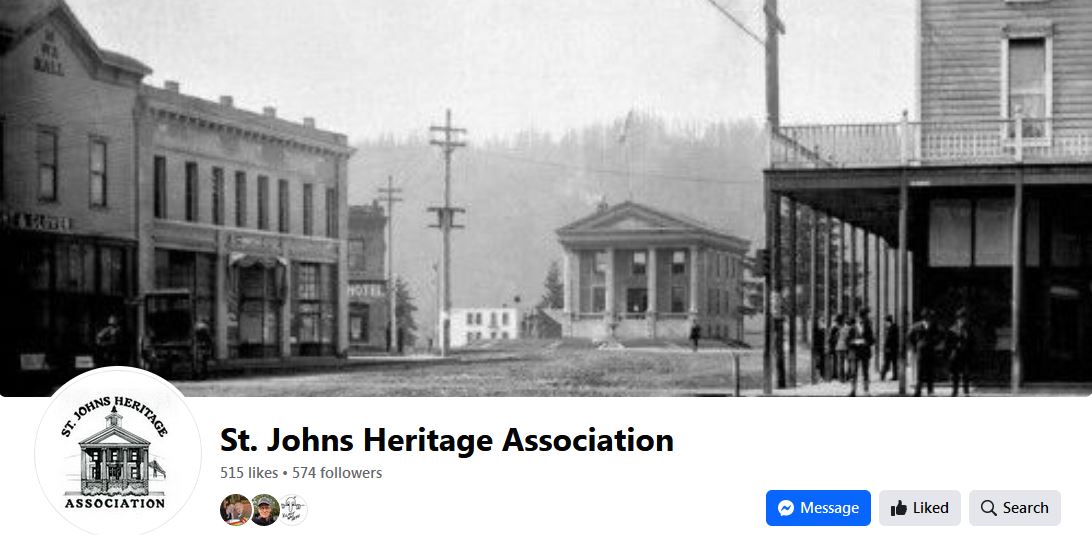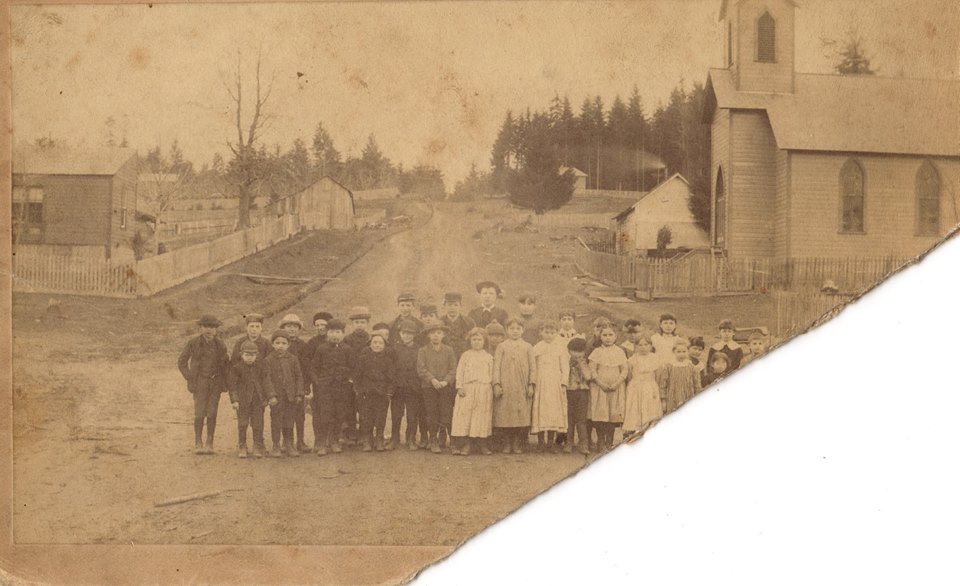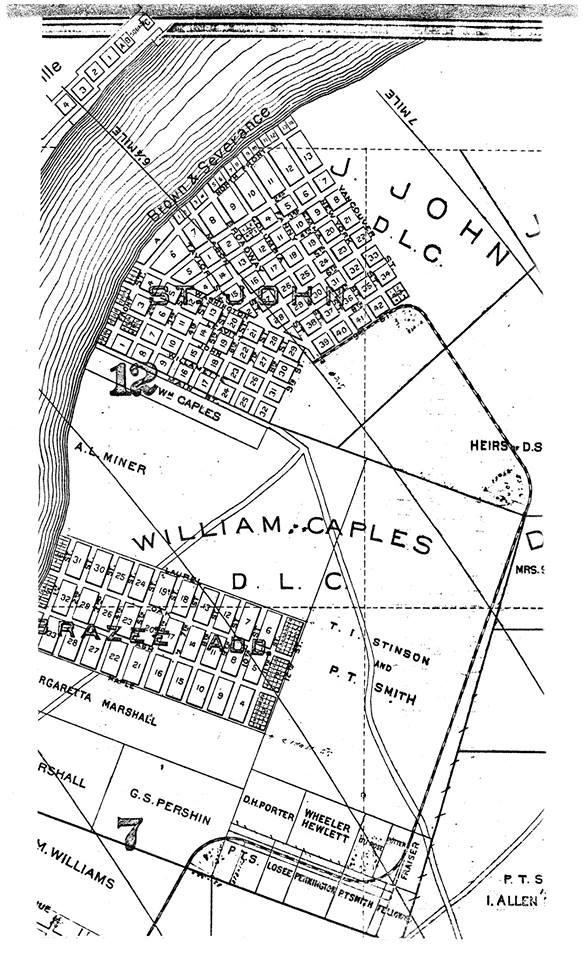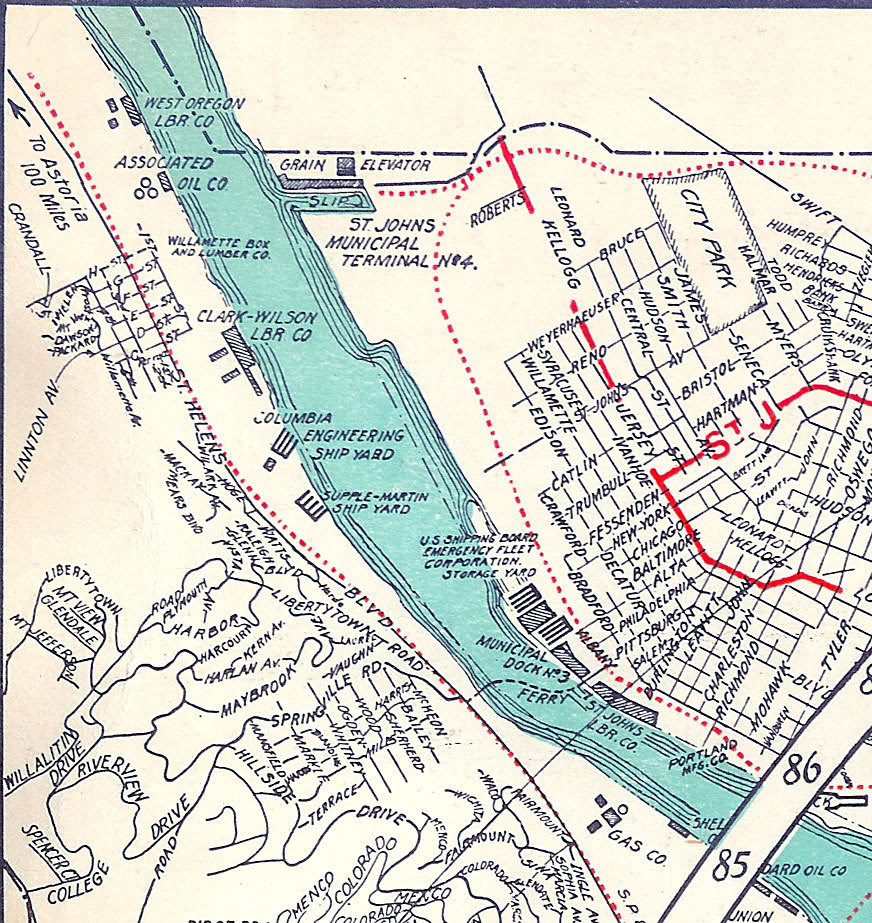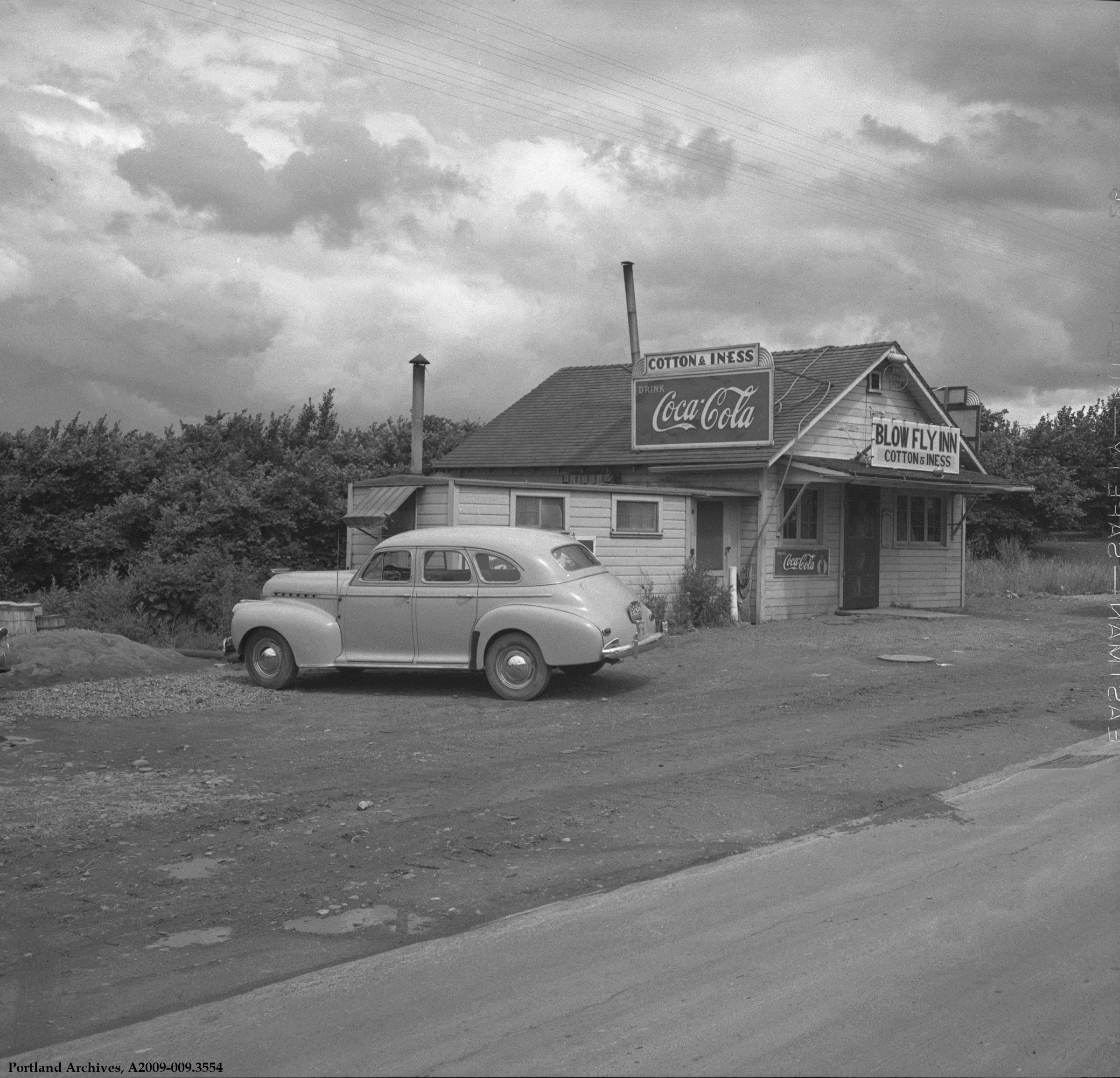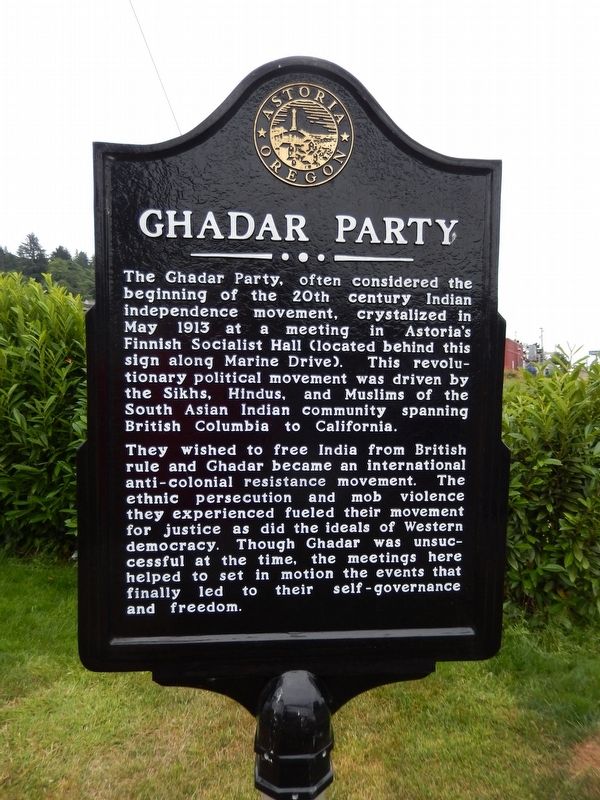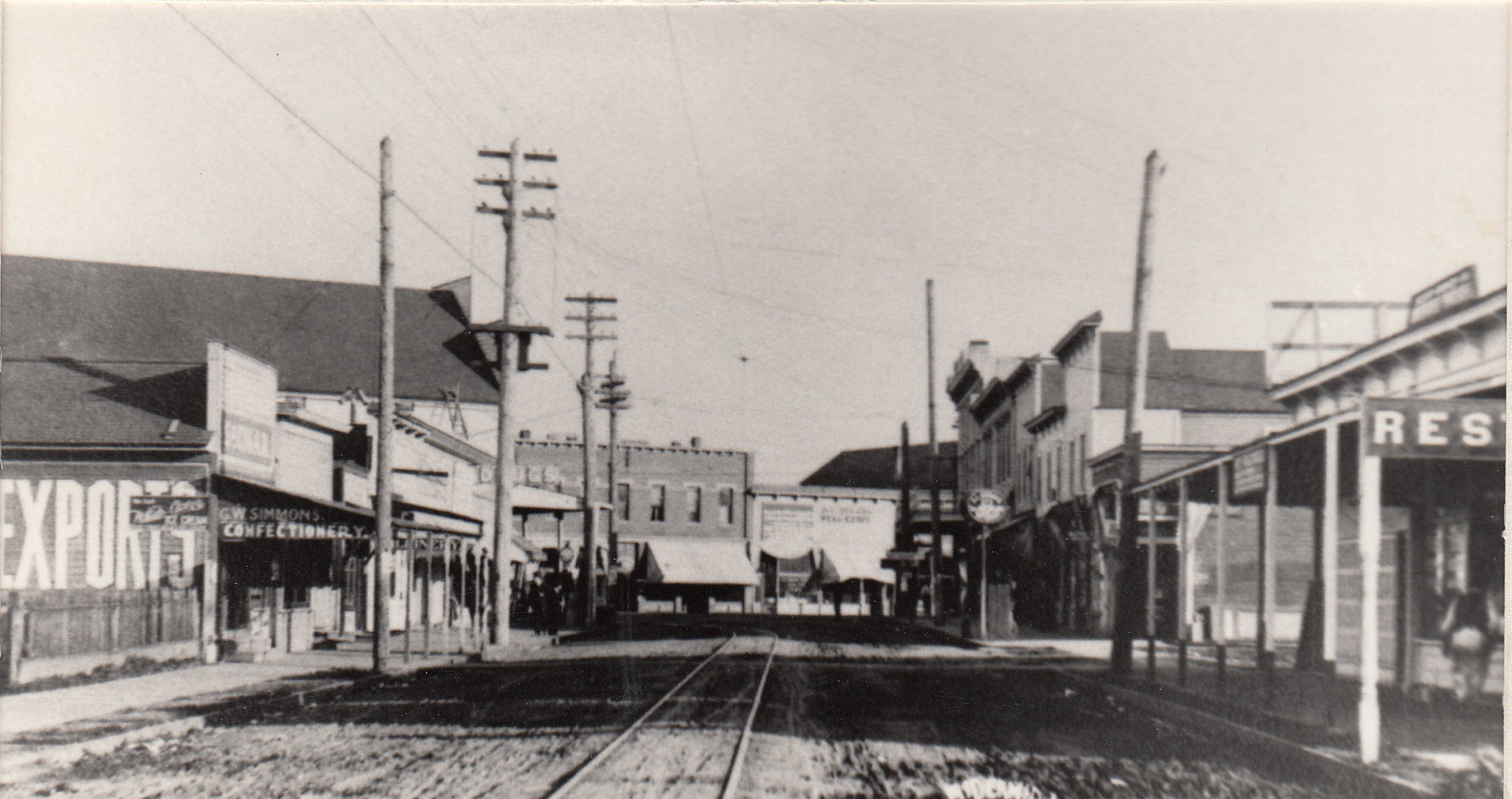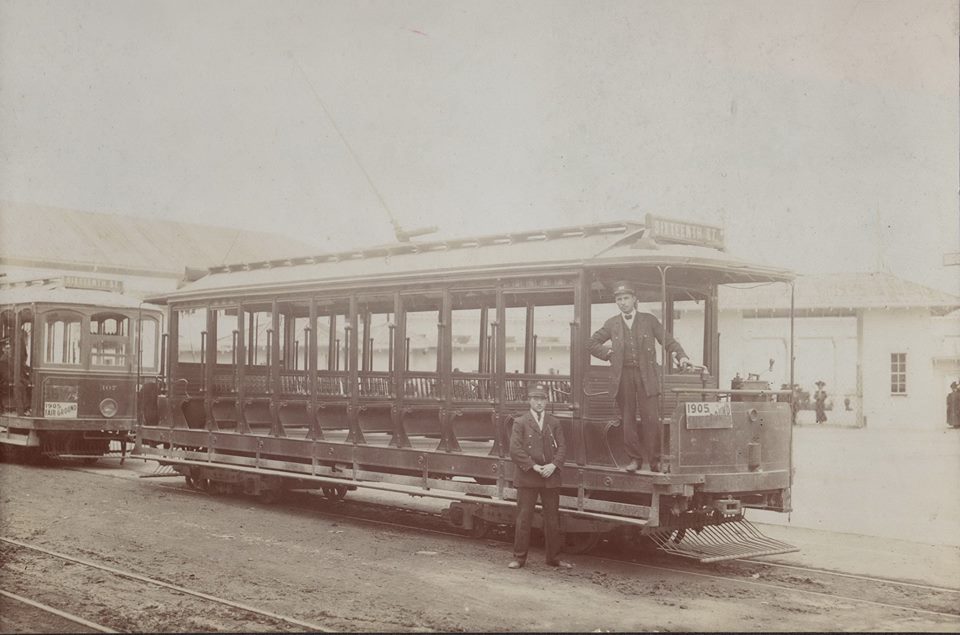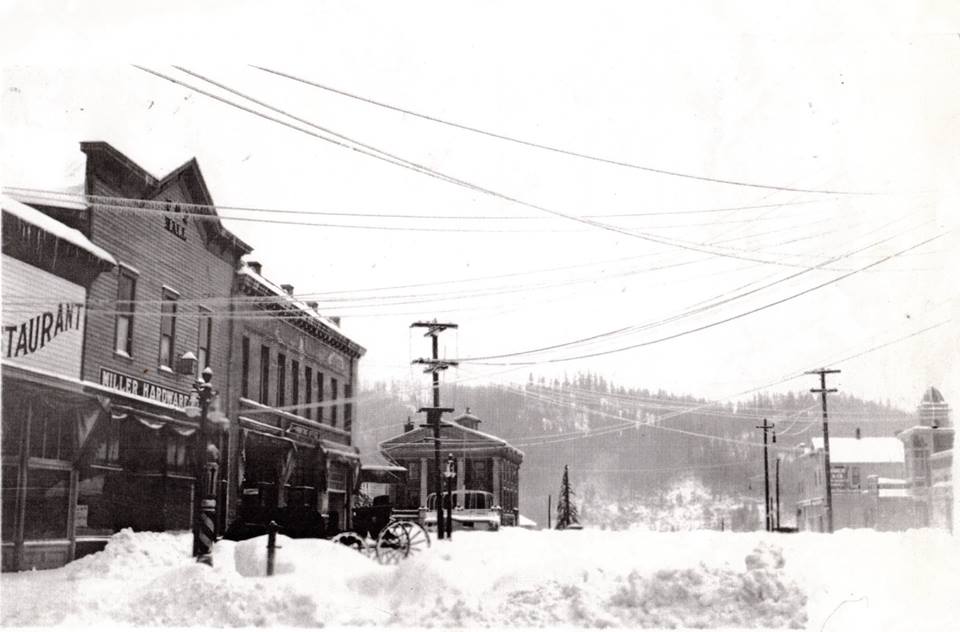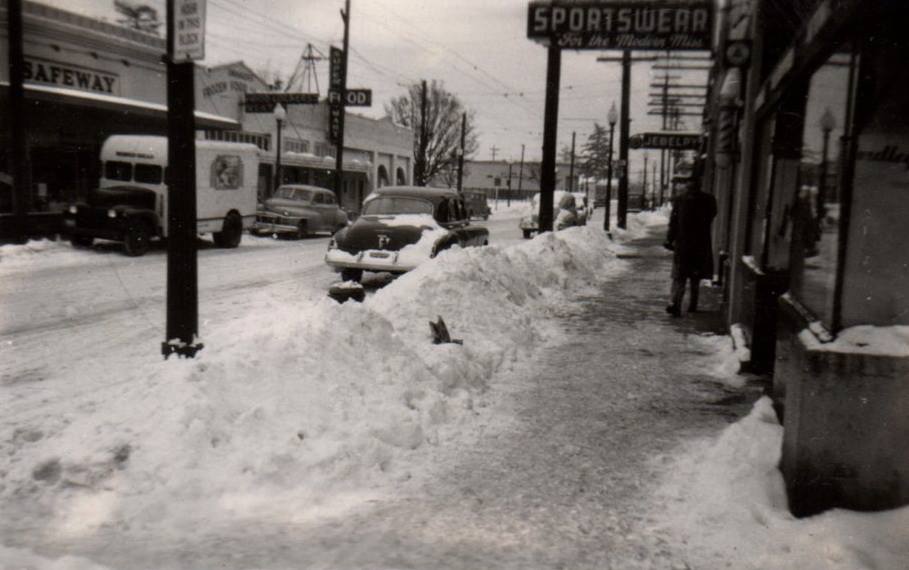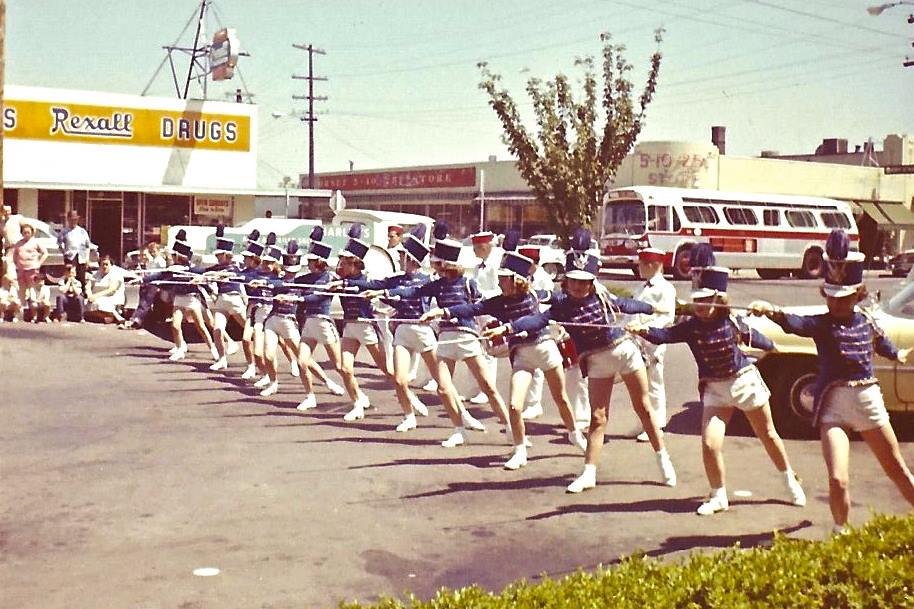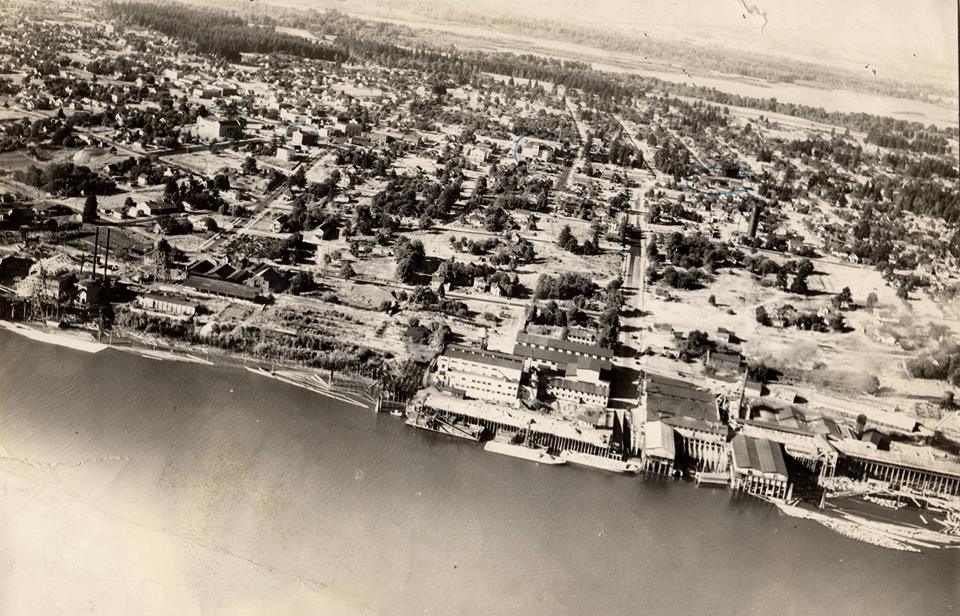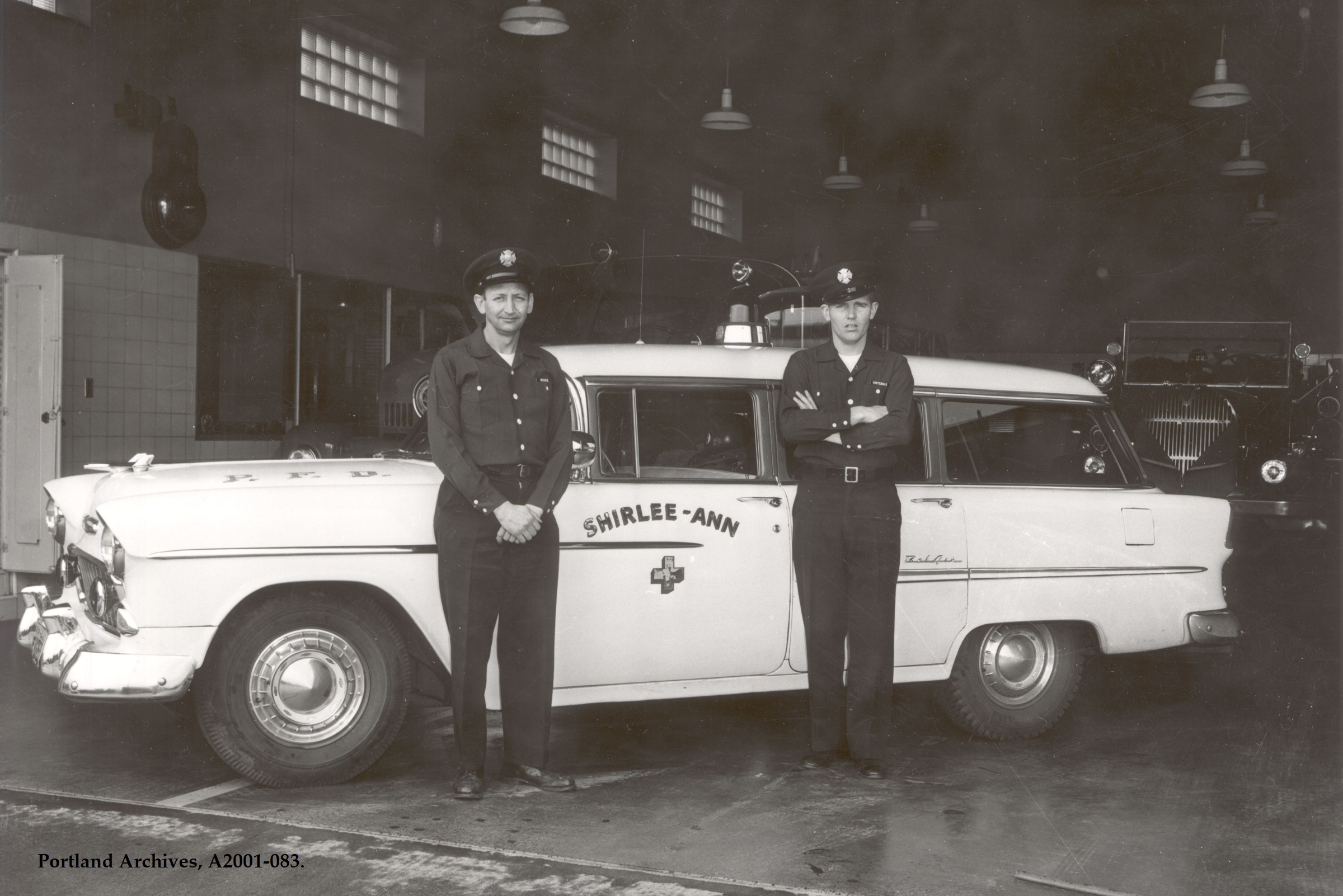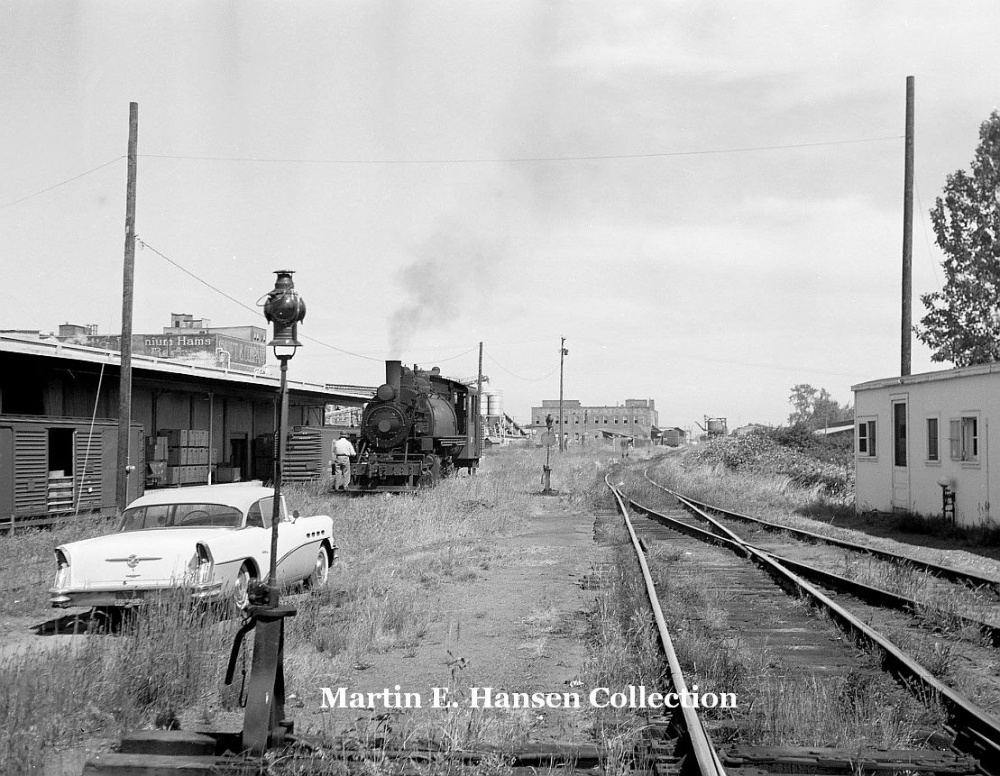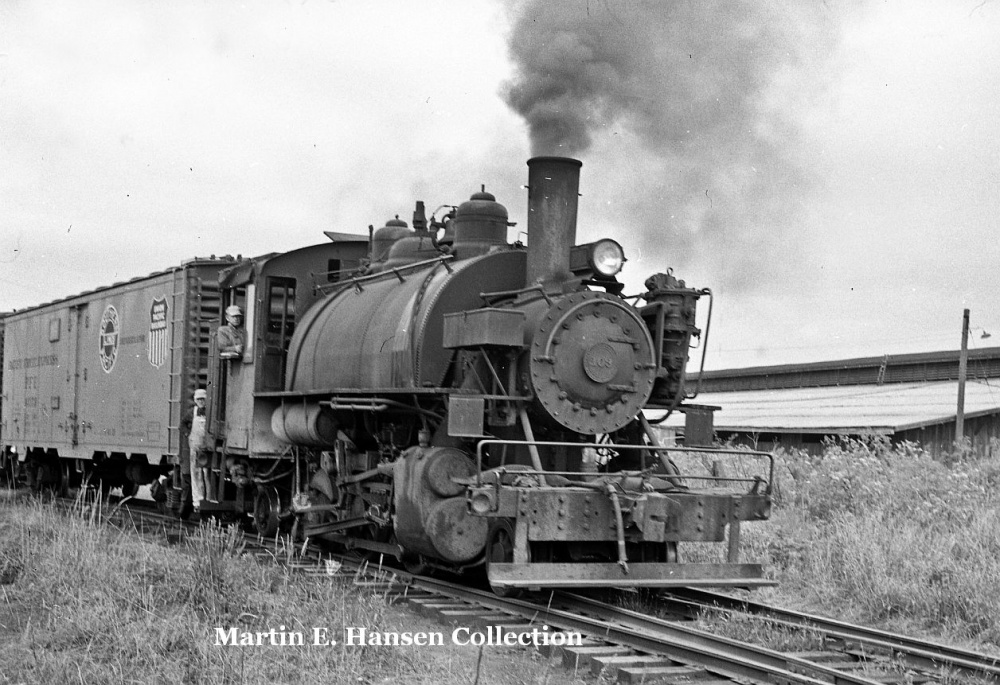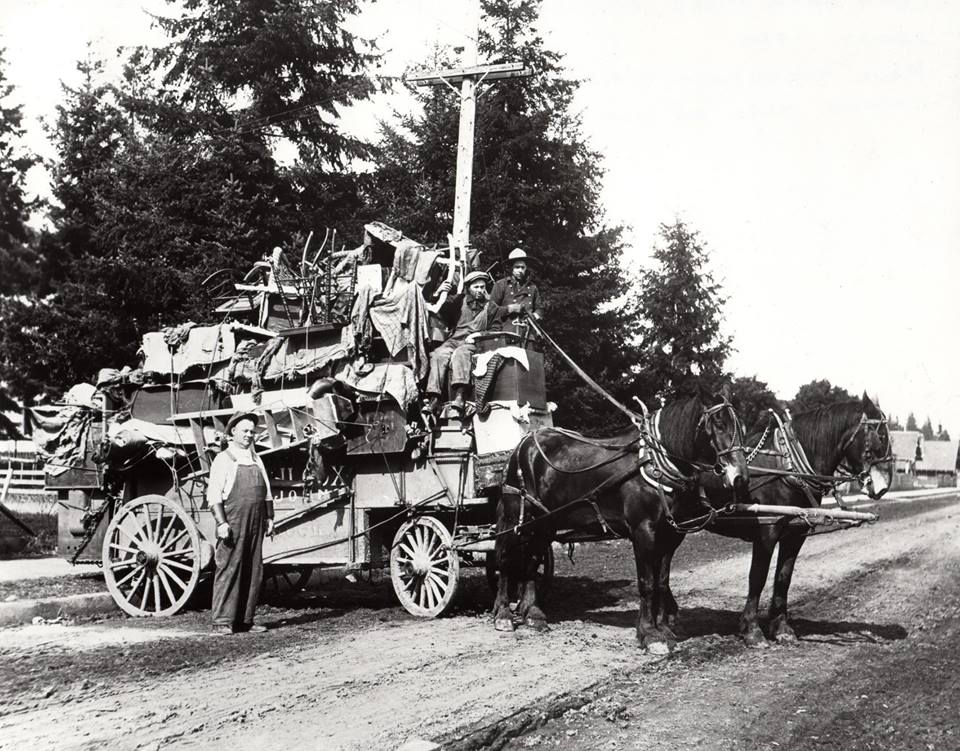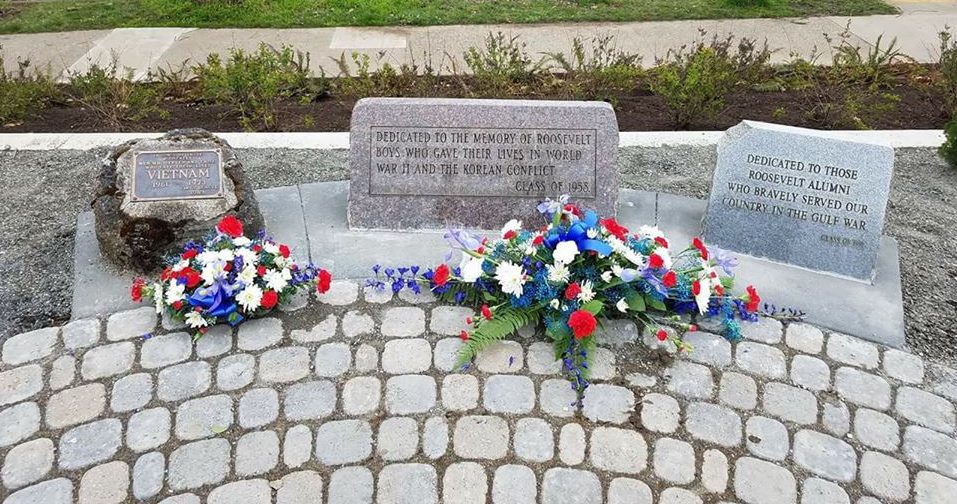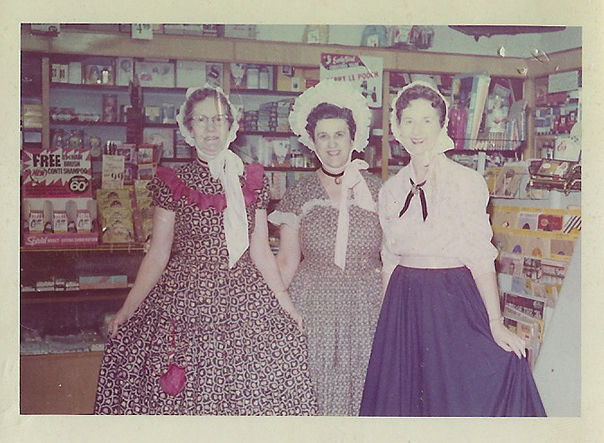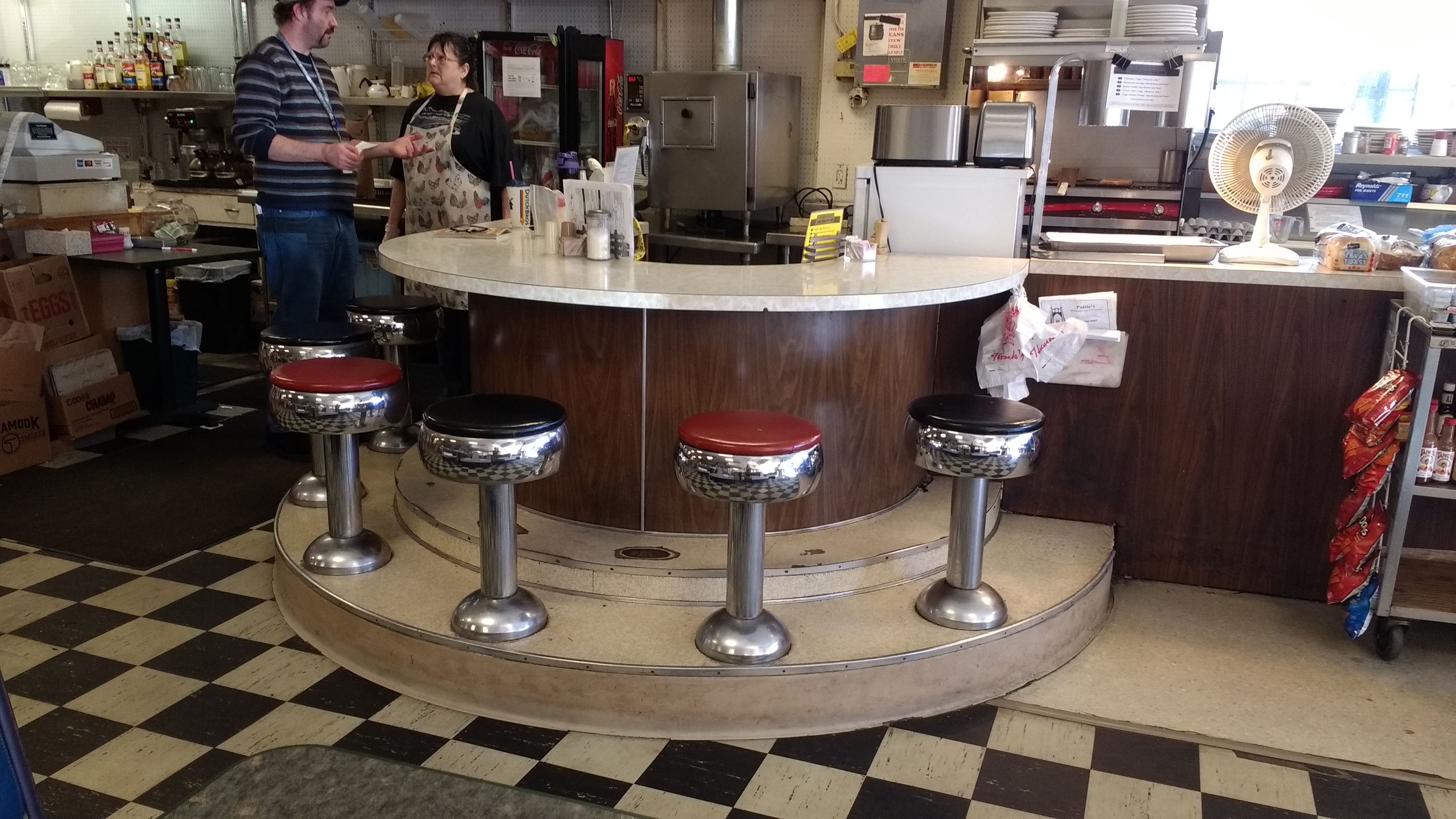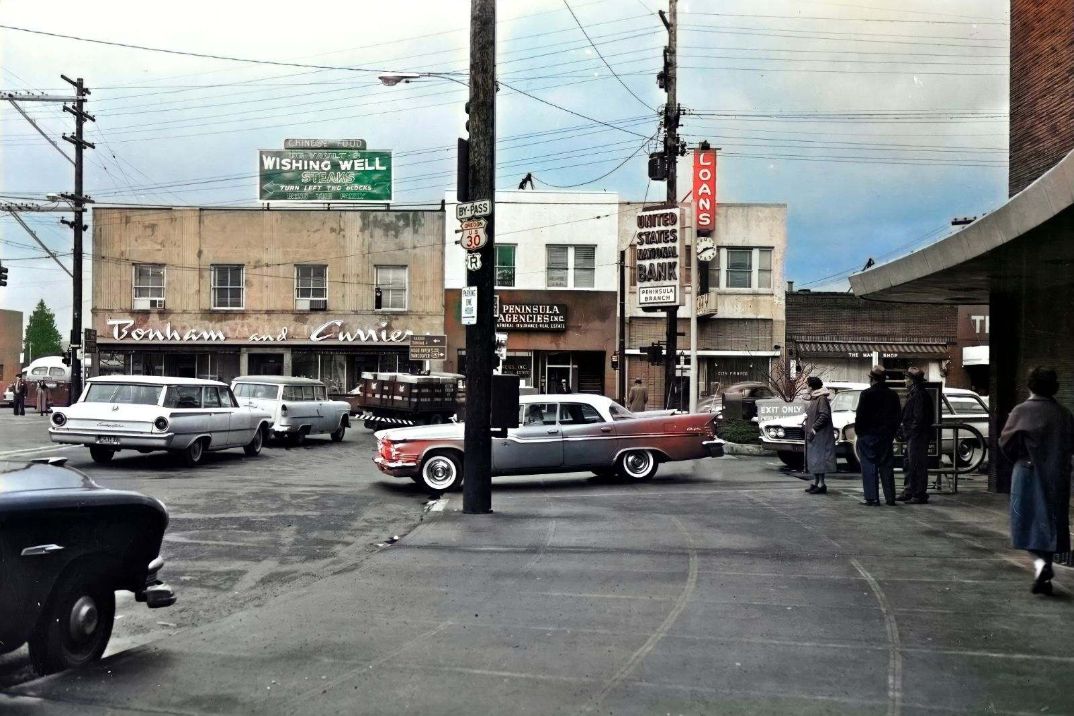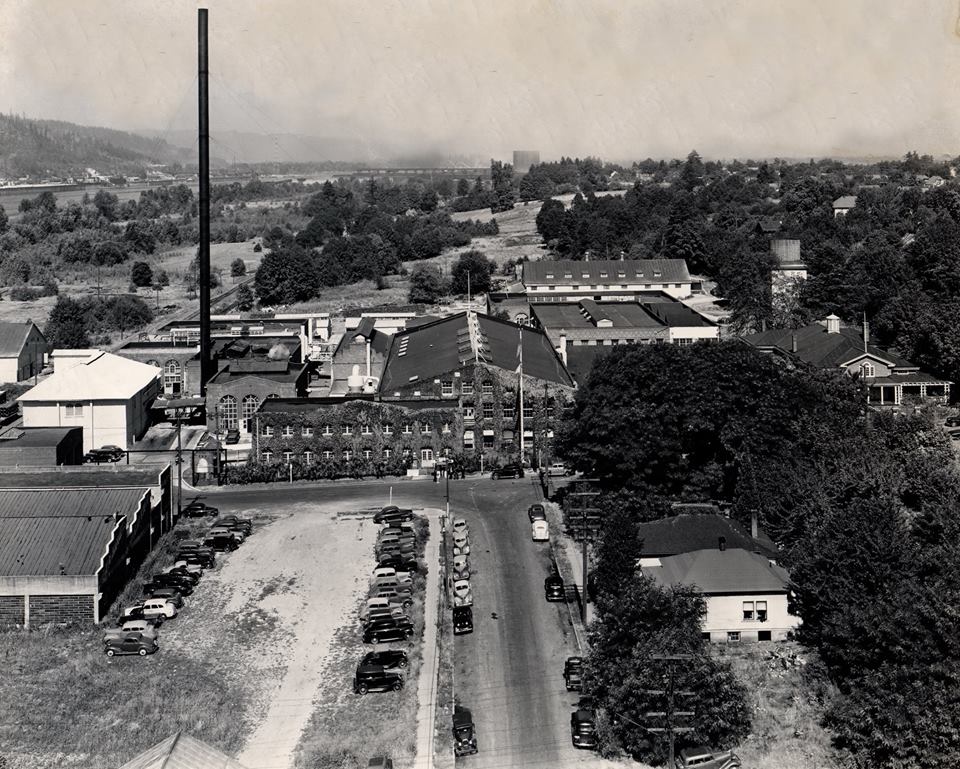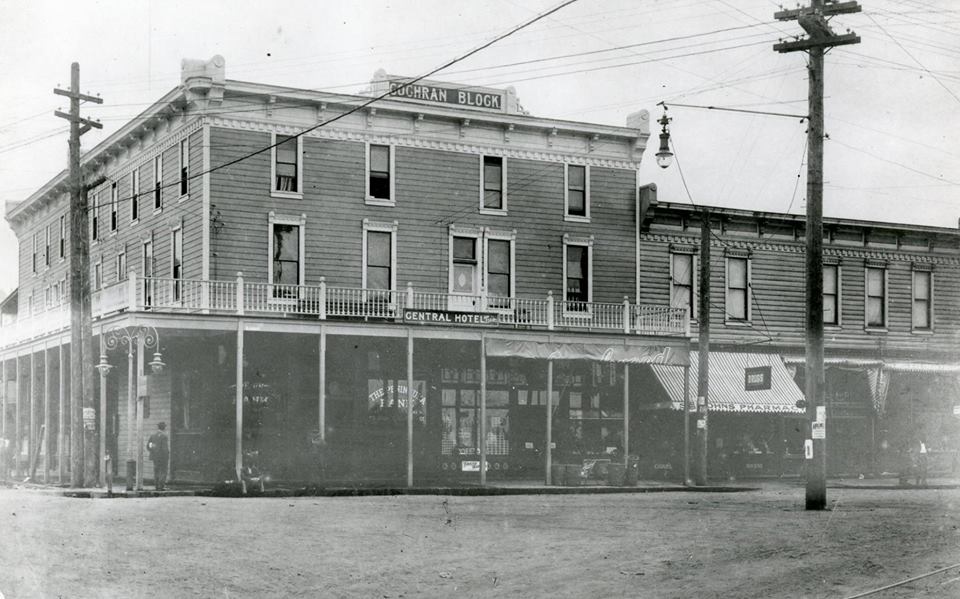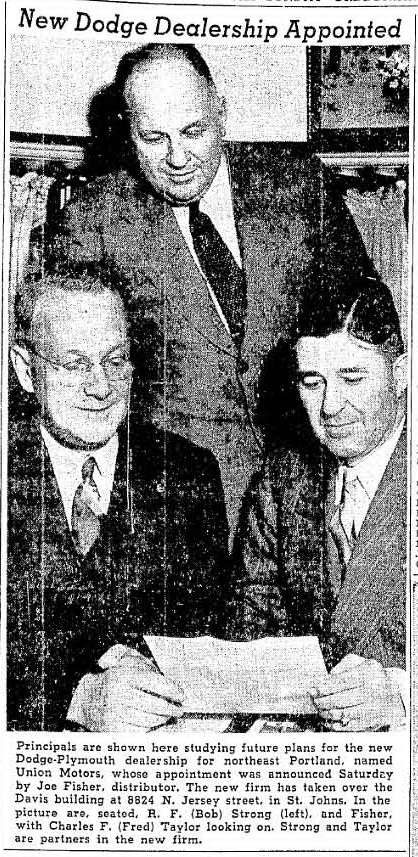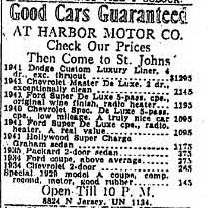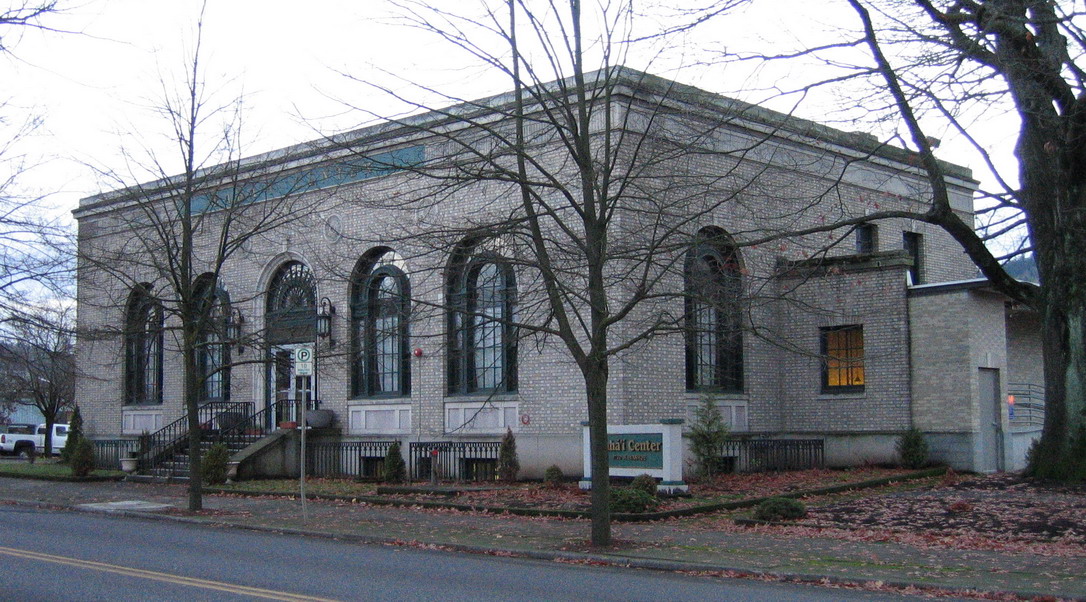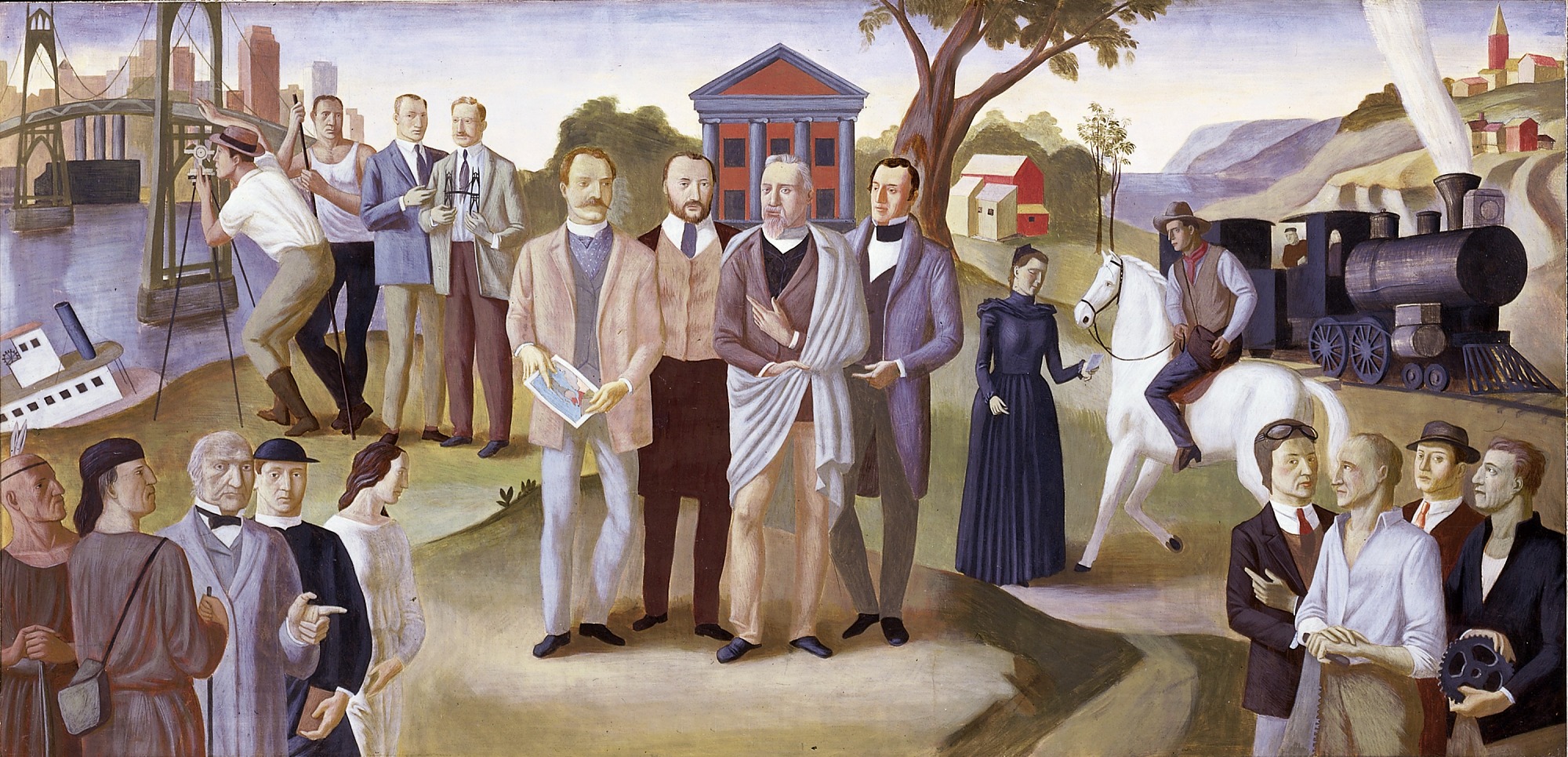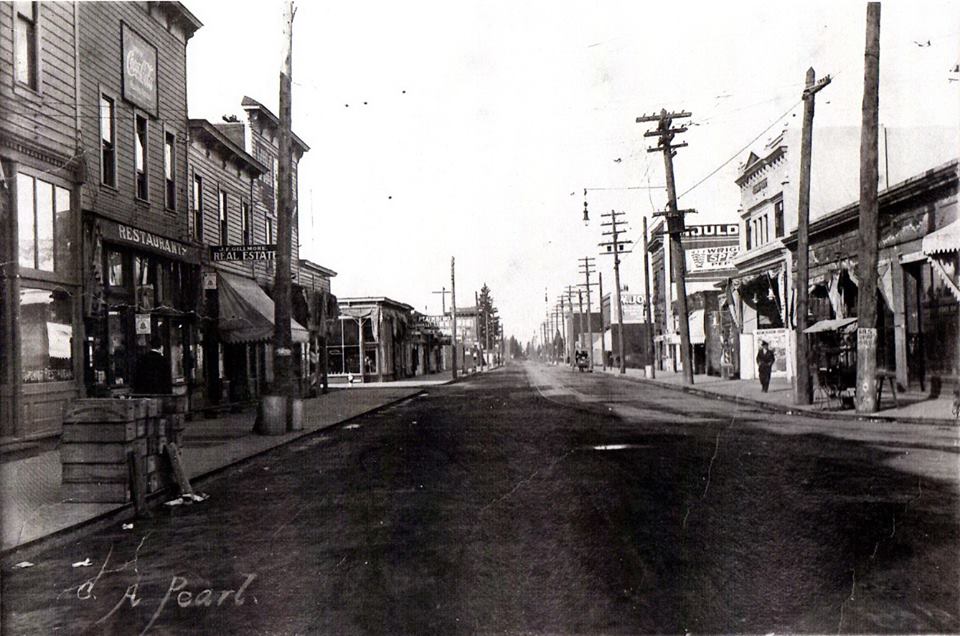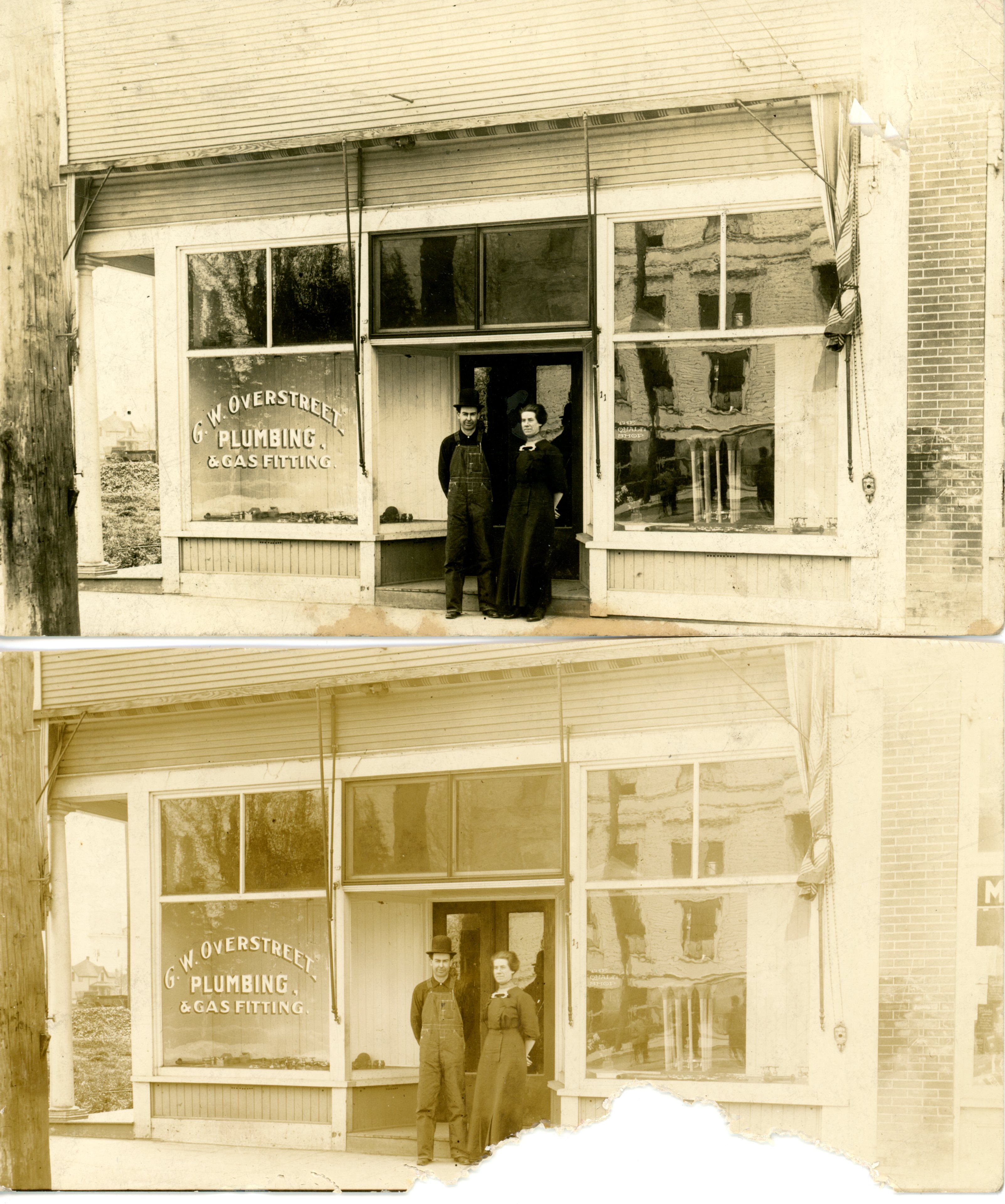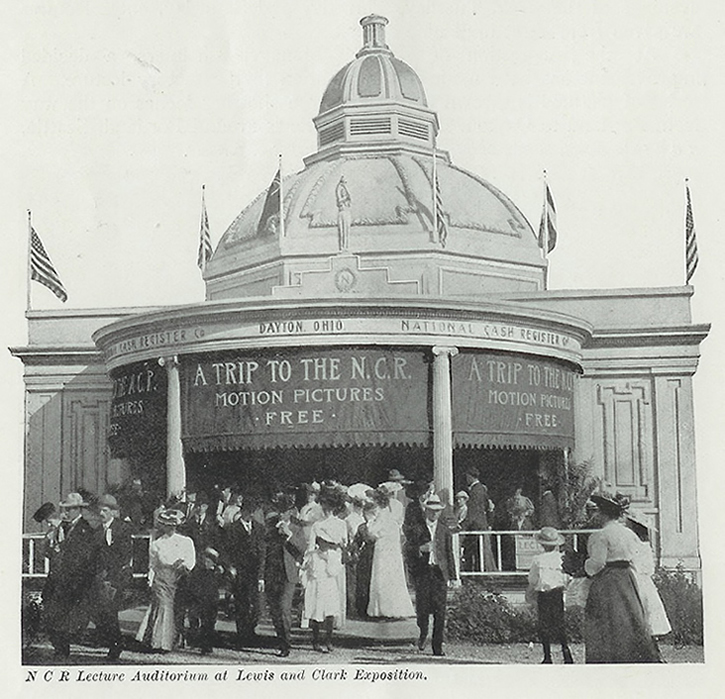♦
 In the mud hole under the (future) St Johns Bridge. On the ground to the right is John Douglas O'Neil an early St Johns businessman. This 1916 photo from the St Johns Heritage Association Archives.
In the mud hole under the (future) St Johns Bridge. On the ground to the right is John Douglas O'Neil an early St Johns businessman. This 1916 photo from the St Johns Heritage Association Archives.
♦
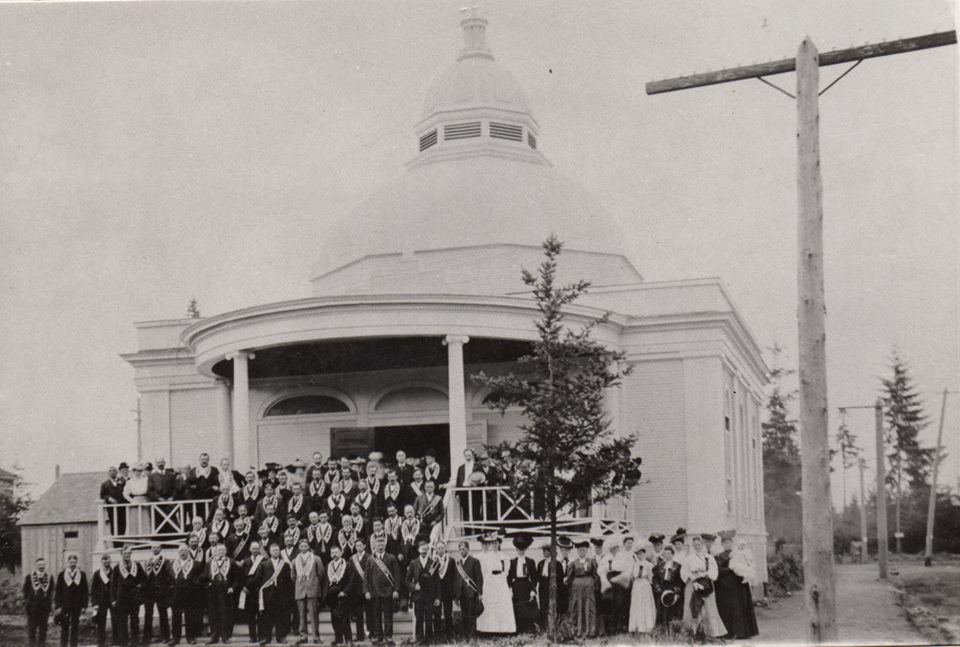 National Cash Register building from the 1905 Lewis and Clark Fair as it first looked after being relocated to St. Johns. Photo taken in 1906. Members of the Independent Order of Odd Fellows (IOOF) in front.
National Cash Register building from the 1905 Lewis and Clark Fair as it first looked after being relocated to St. Johns. Photo taken in 1906. Members of the Independent Order of Odd Fellows (IOOF) in front.
♦
♦
 1912 Crouchley Plumbing Store. James Crouchley seated, Earl Crouchley next to stove at their original location at 8928 N Jersey (Lombard.) The other gentlemen are unidentified. St Johns Heritage Association photo.
1912 Crouchley Plumbing Store. James Crouchley seated, Earl Crouchley next to stove at their original location at 8928 N Jersey (Lombard.) The other gentlemen are unidentified. St Johns Heritage Association photo.
♦
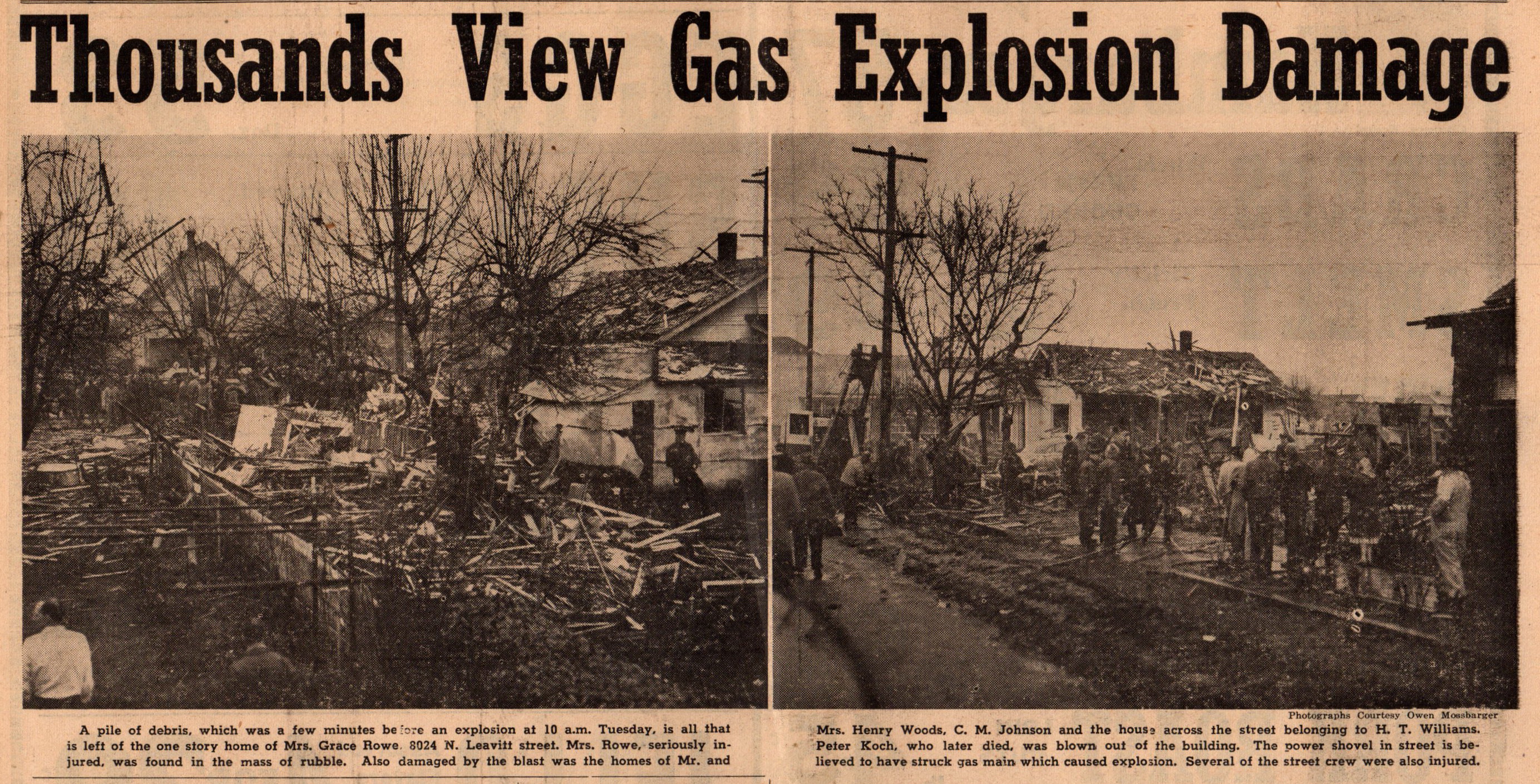 February 6, 1951, gas explosion destroyed a house at 8024 N Leavitt near Central. Gil Parton remembered this well because when it happened he was in the sixth grade at Sitton. This was during the cold war, when it blew they could hear it while in class at school. The students were told to get under their desks because they didn't know if the Russians had dropped a bomb. Gil remembered going to the scene after it happened.
February 6, 1951, gas explosion destroyed a house at 8024 N Leavitt near Central. Gil Parton remembered this well because when it happened he was in the sixth grade at Sitton. This was during the cold war, when it blew they could hear it while in class at school. The students were told to get under their desks because they didn't know if the Russians had dropped a bomb. Gil remembered going to the scene after it happened.
♦
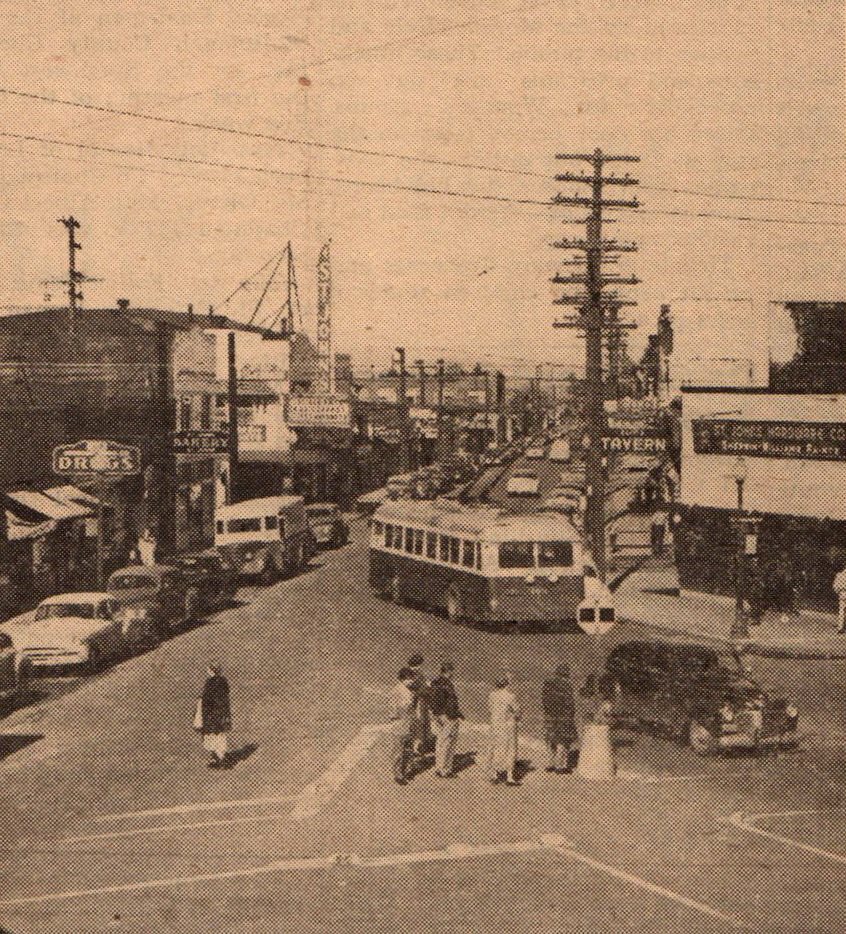 Downtown St Johns at N Jersey (Lombard after 1960) and N Burlington showing an electric trolley bus. This photo from a April 1952 issue of the St Johns Review. The electric trolley replaced the rail trolley in 1937.
Downtown St Johns at N Jersey (Lombard after 1960) and N Burlington showing an electric trolley bus. This photo from a April 1952 issue of the St Johns Review. The electric trolley replaced the rail trolley in 1937.
♦
 Chimney Park when it still had a Chimney. St Johns Incinerator. In the top of the photo you can see the Gatton ranch. William Gatton was one of the original Donation Land Claim holders to file in St Johns. Off to the left you can see Terminal Four. In 1941 Union Carbide bought the ranch and tore it down along with the hillside it was on to build its Electro-Metalurgical plant. The Blowfly Inn can be seen next to the large filbert tree orchard. 1940 photo credit to Vintage Portland /
Chimney Park when it still had a Chimney. St Johns Incinerator. In the top of the photo you can see the Gatton ranch. William Gatton was one of the original Donation Land Claim holders to file in St Johns. Off to the left you can see Terminal Four. In 1941 Union Carbide bought the ranch and tore it down along with the hillside it was on to build its Electro-Metalurgical plant. The Blowfly Inn can be seen next to the large filbert tree orchard. 1940 photo credit to Vintage Portland /
City of Portland Archives. https://vintageportland.wordpress.com/2012/05/23/city-incinerator-1940/#comments
♦

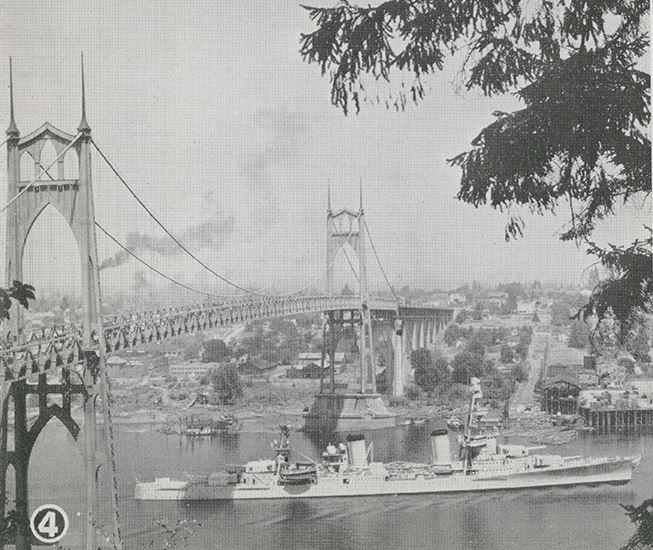 A reprint from the Annual Report of the Commission of Public Docks showing the images and names of vessels that visited Portland during Fleet Week in 1938. Sadly the USS Vincennes, seen here traveling under the St Johns Bridge, was lost in one of the many sea battles around Guadalcanal, specifically the Battle of Savo Island in August of 1942. Of her crew of 866 she lost 322 men. https://vintageportland.wordpress.com/2025/06/06/fleet-week-vessels-1938/#comments
A reprint from the Annual Report of the Commission of Public Docks showing the images and names of vessels that visited Portland during Fleet Week in 1938. Sadly the USS Vincennes, seen here traveling under the St Johns Bridge, was lost in one of the many sea battles around Guadalcanal, specifically the Battle of Savo Island in August of 1942. Of her crew of 866 she lost 322 men. https://vintageportland.wordpress.com/2025/06/06/fleet-week-vessels-1938/#comments
♦

 These stairs are on Smith Street just east of Sitton School. They led to the old two story Sitton School which was torn down in 1964. The school was built in 1907 and housed the James John High School class for two years till their school was built in 1910. Google Earth photos from 2016 and 2022.
These stairs are on Smith Street just east of Sitton School. They led to the old two story Sitton School which was torn down in 1964. The school was built in 1907 and housed the James John High School class for two years till their school was built in 1910. Google Earth photos from 2016 and 2022.
♦
 From a June 2011 issue of the Oregonian about the 80th anniversary of the St. Johns bridge. In the top right of the picture you can see the old James John High School. The building just beyond it is the Couch and Co Store, which is now the Marvel building at Philadelphia and Ivanhoe.
From a June 2011 issue of the Oregonian about the 80th anniversary of the St. Johns bridge. In the top right of the picture you can see the old James John High School. The building just beyond it is the Couch and Co Store, which is now the Marvel building at Philadelphia and Ivanhoe.
♦
St Johns turned 160 years old in 2025. James John had a portion of his donation land claim surveyed and platted into eight blocks on May 20, 1865. He named this new town St Johns on the Willamette.
James John's townsite was positioned one mile along the river front and one-half mile up to the plateau. Over time the need to expand resulted in a 1st Addition July 30, 1870 and then a 2nd Addition September 15, 1876. This map of St Johns is from 1891.
♦
 The Singing Sentinels - August 1942 ♦ Oregonian Archives. In the locker room of the Oregon Shipbuilding Company in St. Johns, four young security guards found an opportunity to take advantage of their talent for singing. The four men were Del Von Zuethen, Chuck Faris, John “Ken” Rogers and Mel Gordon. Over the years Del Von Zeuthen told Oregonian reporters Lawrence Barber, John Guernsey and others about how the quartet came together. Von Zeuthen, who would become a pioneer in the field of broadcasting music in industrial settings, liked to sing baritone. He and Ken Rogers, who Von Zeuthen called “as good a bass as ever was” and a couple of other guys “who would rather sing than do anything else;” liked to harmonize as they showered and changed out of their uniforms. Rodger Smith, Kaiser’s chief of security at St. Johns, wanted to have a quartet of security guards to provide entertainment at ship launchings and other events and he soon approached the four men who had become popular in the shower room. Source: Weird Portland. Learn more: http://weirdportland.blogspot.com/2013/05/the-singing-sentinels.html
The Singing Sentinels - August 1942 ♦ Oregonian Archives. In the locker room of the Oregon Shipbuilding Company in St. Johns, four young security guards found an opportunity to take advantage of their talent for singing. The four men were Del Von Zuethen, Chuck Faris, John “Ken” Rogers and Mel Gordon. Over the years Del Von Zeuthen told Oregonian reporters Lawrence Barber, John Guernsey and others about how the quartet came together. Von Zeuthen, who would become a pioneer in the field of broadcasting music in industrial settings, liked to sing baritone. He and Ken Rogers, who Von Zeuthen called “as good a bass as ever was” and a couple of other guys “who would rather sing than do anything else;” liked to harmonize as they showered and changed out of their uniforms. Rodger Smith, Kaiser’s chief of security at St. Johns, wanted to have a quartet of security guards to provide entertainment at ship launchings and other events and he soon approached the four men who had become popular in the shower room. Source: Weird Portland. Learn more: http://weirdportland.blogspot.com/2013/05/the-singing-sentinels.html
 Kaiser-Frazer Corporation's Singing Sentinels, 1949. Photo credit Ann Arbor News./ Ann Arbor District Library.
Kaiser-Frazer Corporation's Singing Sentinels, 1949. Photo credit Ann Arbor News./ Ann Arbor District Library.
♦

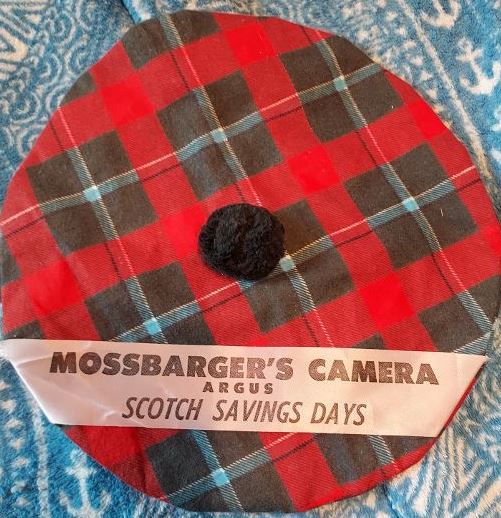 Promotional hat given away at Mossbarger's Camera & Photography Studio. Year unknown.
Promotional hat given away at Mossbarger's Camera & Photography Studio. Year unknown.
♦
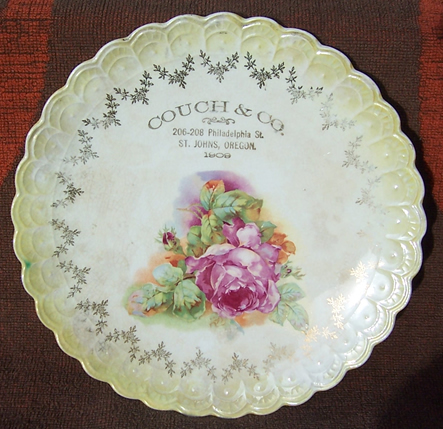
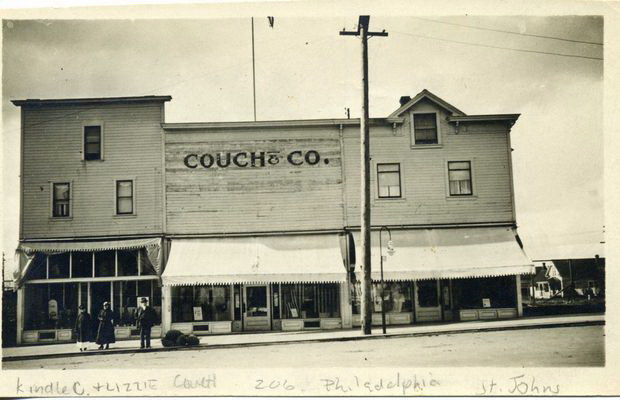 This was one of the first businesses in St Johns. It was a combination grocery and furniture store. Located at 206-208 Philadelphia it was across from City Hall, now the location of the Marvel building. The owner of this store was Kindle C Couch who was mayor of St Johns in 1907.
This was one of the first businesses in St Johns. It was a combination grocery and furniture store. Located at 206-208 Philadelphia it was across from City Hall, now the location of the Marvel building. The owner of this store was Kindle C Couch who was mayor of St Johns in 1907.
♦
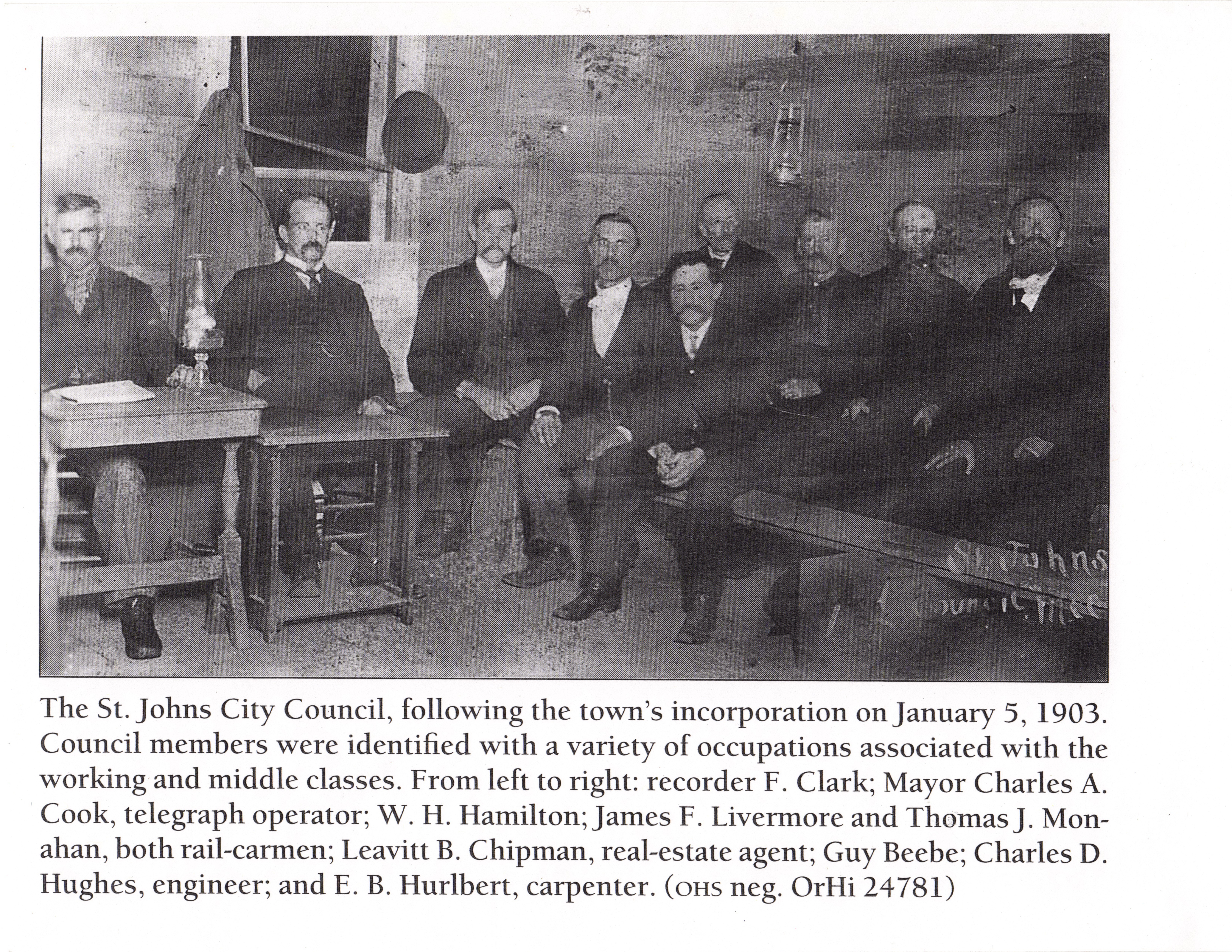

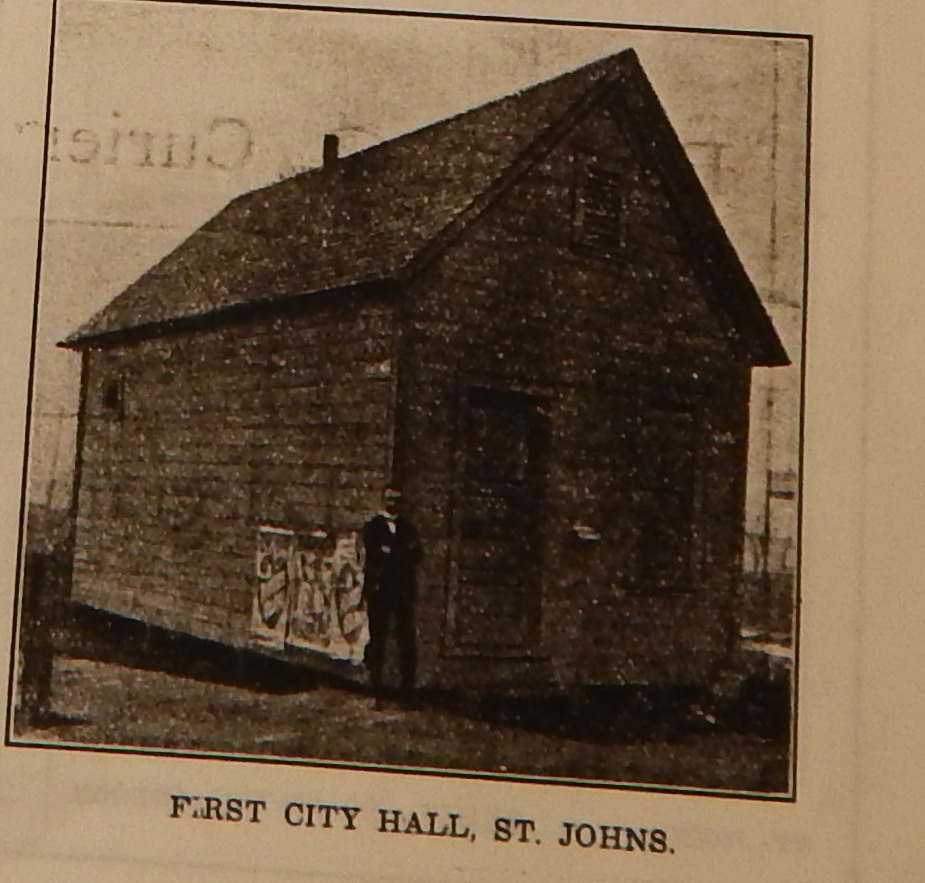 St. Johns first City Hall building, located between Syracuse and Philadelphia, was built in 1903. It can be seen in the first photo to the left of the tree.
St. Johns first City Hall building, located between Syracuse and Philadelphia, was built in 1903. It can be seen in the first photo to the left of the tree.
♦
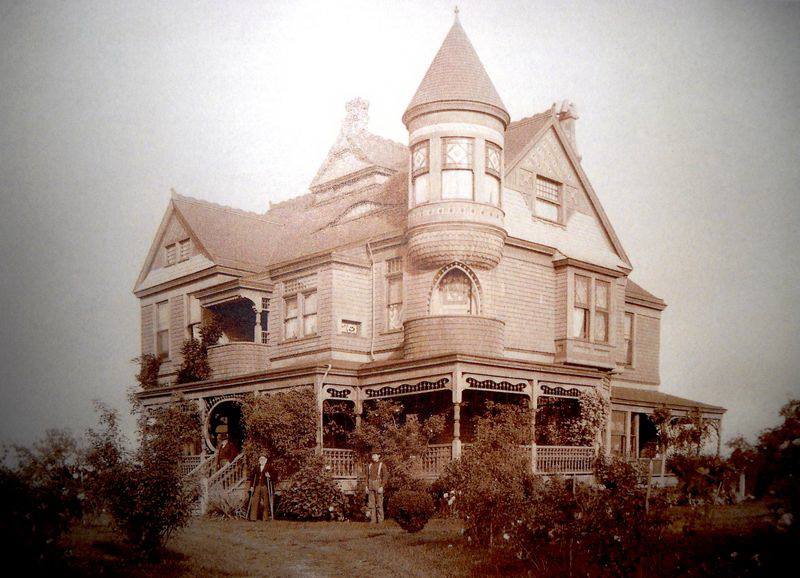 Original John Mock Home built in 1894 at 4333 N Willamette Blvd., still standing and currently undergoing renovation. Photo from Fred Leeson (image courtesy Architectural Heritage Center).
Original John Mock Home built in 1894 at 4333 N Willamette Blvd., still standing and currently undergoing renovation. Photo from Fred Leeson (image courtesy Architectural Heritage Center).
♦
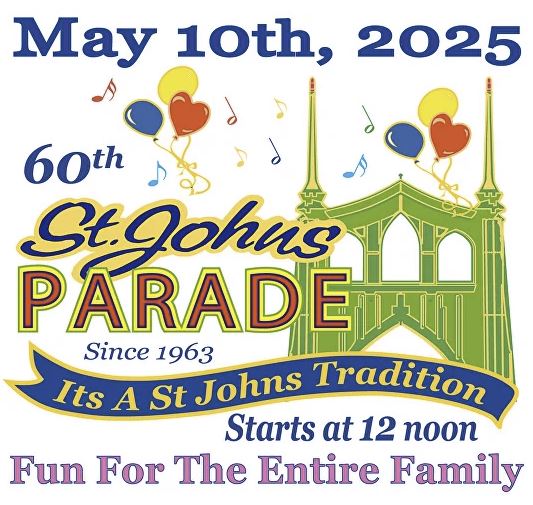 The St Johns Parade is this Saturday.
The St Johns Parade is this Saturday.
♦
What was showing at the St Johns Theater in early July 1943. Note the movies changed every few days. Andy Hardy's Double Life was first released in December 1942. The movie cost $369,000 to make and had box office sales of $2,647,000.
♦
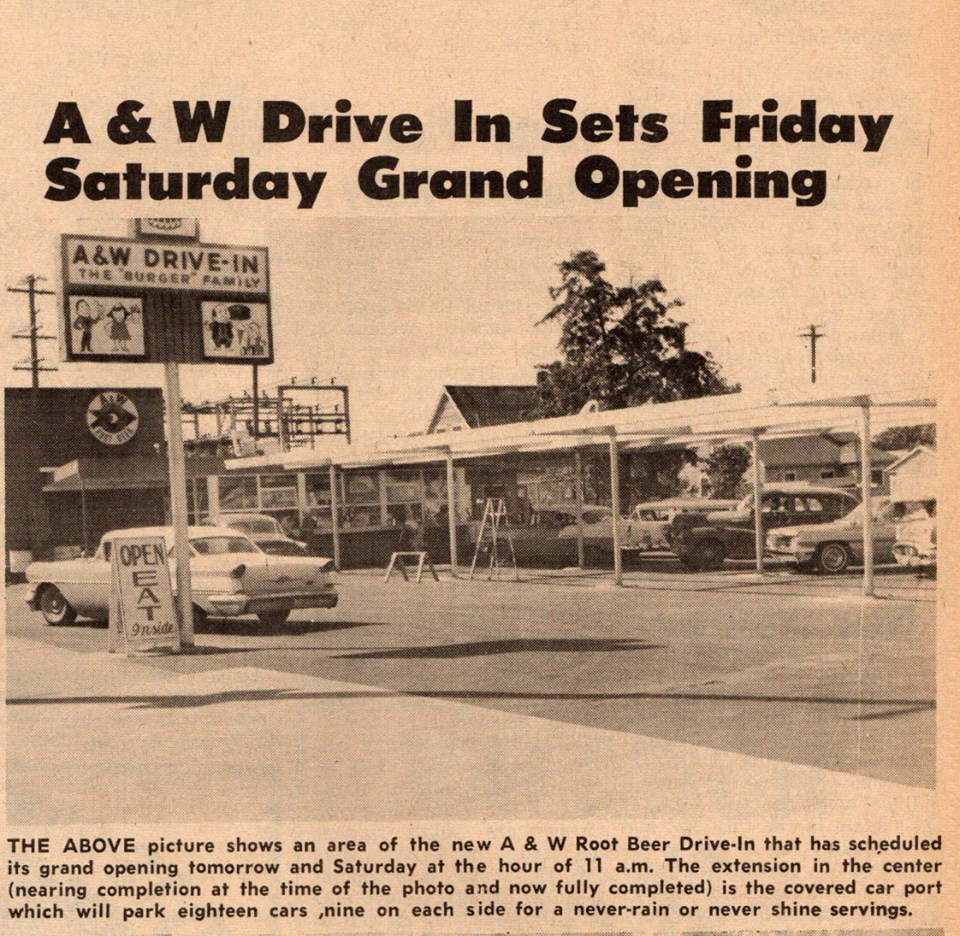 A & W Drive In getting ready for their Grand Opening on July 19, 1963. Located at 7733 N Lombard this photo with caption was found in a July 1963 issue of the St Johns Review.
A & W Drive In getting ready for their Grand Opening on July 19, 1963. Located at 7733 N Lombard this photo with caption was found in a July 1963 issue of the St Johns Review.
♦
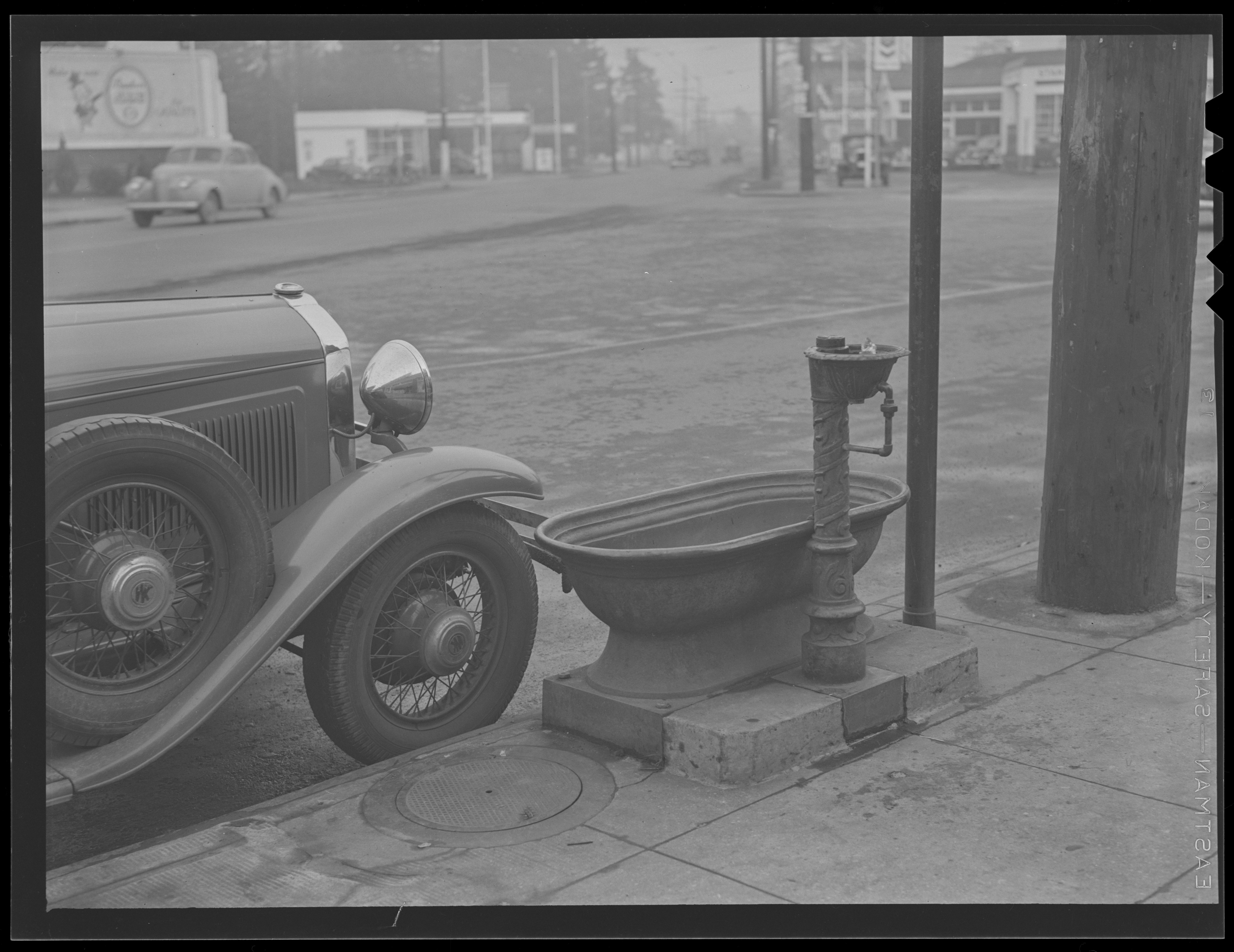
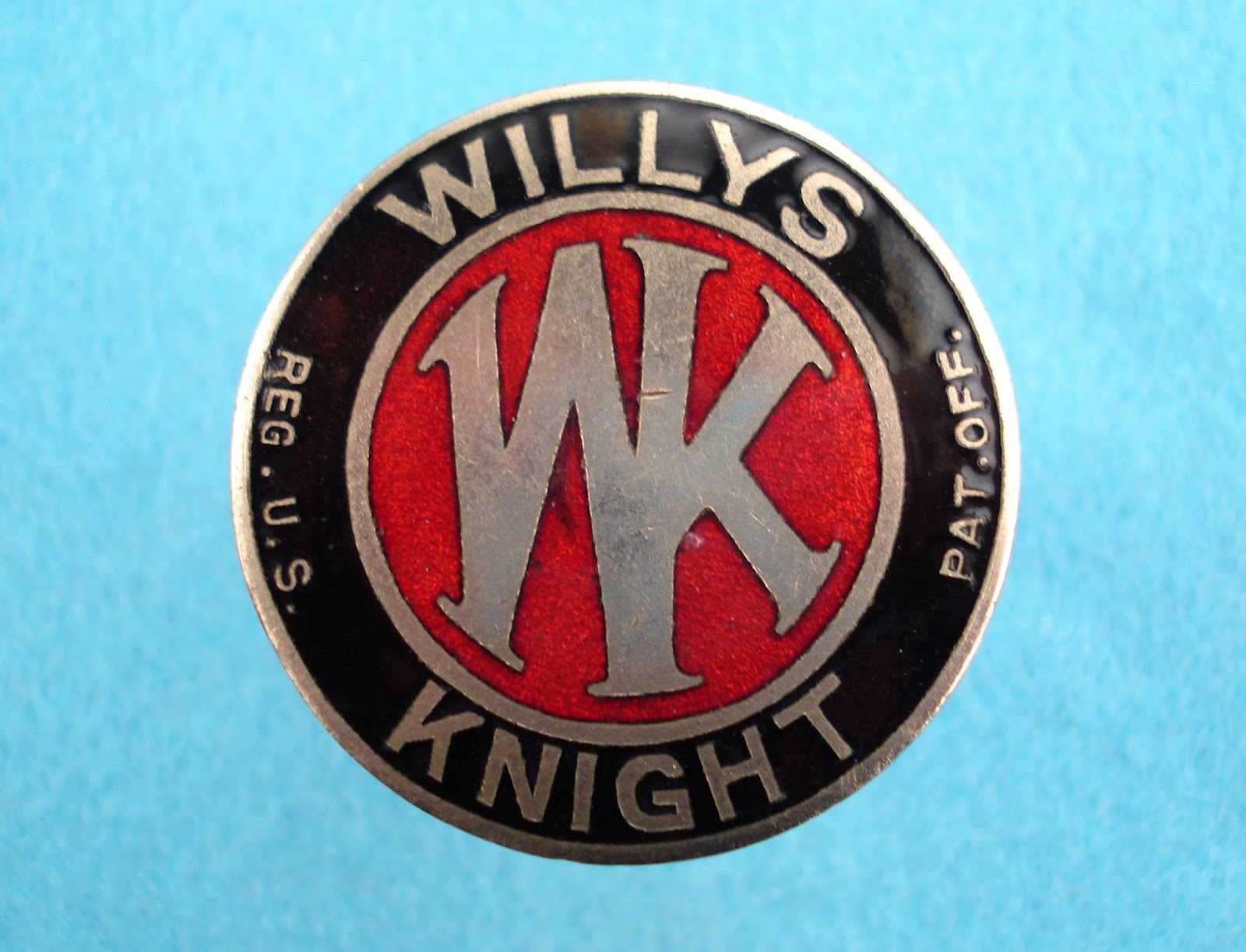 Al Monner photographed what we believe was the last remaining horse trough in St Johns on 12/31/40. This photo is now part of the OHS digital collection. What has puzzled us for so long was the make and model of the car next to the curb. We have now identified it as a 1929 Willys-Knight, perhaps the upscale model 70B. The "Knight" in Willys-Knight referred to the sleve-valve engine which was used in this vehicle under license from Charles Yale Knight. The vehicle was manufactured by the Willys–Overland Company who would later become famous for producing the most vehicles commonly referred to as the Jeep during WWII. The correct pronunciation of "Willys" is "Willis".
Al Monner photographed what we believe was the last remaining horse trough in St Johns on 12/31/40. This photo is now part of the OHS digital collection. What has puzzled us for so long was the make and model of the car next to the curb. We have now identified it as a 1929 Willys-Knight, perhaps the upscale model 70B. The "Knight" in Willys-Knight referred to the sleve-valve engine which was used in this vehicle under license from Charles Yale Knight. The vehicle was manufactured by the Willys–Overland Company who would later become famous for producing the most vehicles commonly referred to as the Jeep during WWII. The correct pronunciation of "Willys" is "Willis".
The automobile going the other direction on Jersey (now Lombard) St is possibly a 1939 Oldsmobile. In the distance, on the right, is Raymond Fisher Chevrolet.
What do we know about the horse trough? From an article in the Oregonian on May 28, 1947 we find that it was it was made from cast iron and manufactured by the J.L. Mott Iron Works of New York. Note that in the 1940 photo only the drinking fountain was in operation. By 1947 neither the horse trough nor the drinking fountain were functioning. The best guess was that it had been that way for three years. From a then 14 year old eye witness it was thought the horse trough was installed in 1910. Verne M Hall recalled that it was located right in front of his house at 8218 N Jersey St. You will note from the photograph that it is near but not right at the corner of Jersey St and Richmond Ave.
It is believed that the larger circular horse trough near the City Hall Building was installed around the same time. The circular horse tough was removed after the St Johns Bridge was completed as it was regarded at that time as being a traffic hazard.
The house trough at Jersey and Richmond was also considered by some as a unwanted relic from the past and a hazard to anyone who attempted to park their automobile near it. We are going to speculate that the house trough was removed completely in 1947 after this unwanted publicity came to light in the Oregonian article.
♦
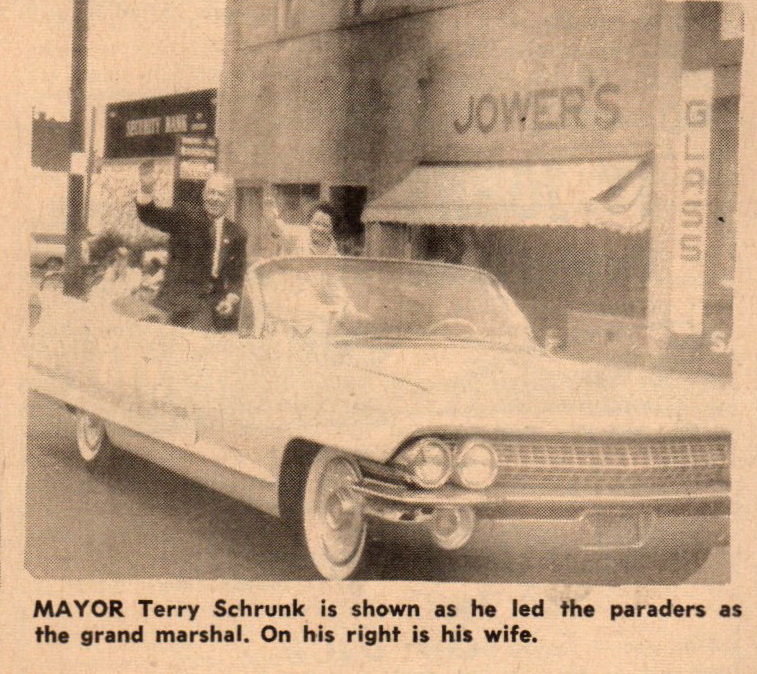 The first St Johns Parade was held May 25, 1963. Note the direction of that parade was the opposite of how current parades travel. Our next St Johns Parade is May 10th.
The first St Johns Parade was held May 25, 1963. Note the direction of that parade was the opposite of how current parades travel. Our next St Johns Parade is May 10th.
♦
After much discussion, recognizing the need for better river transportation, the City of St Johns authorized a modest ferry service to connect itself with the west side of the Willamette river, docking very close to the Claremont Tavern in the community of Springville by design. In the latter part of November 1905 a 60-day charter was issued by the City of St Johns to the St Johns Ferry and Transportation Company to begin a ferry service. Lacking a properly constructed ferry boat in the beginning they first used in 1906 an old barge. It had a shelter for passengers and could accommodate up to four vehicles. On February 11, 1907 the St Johns Ferry and Transportation Co launched their new ferry boat the James John. The event took place in front of a large crowd without incident or mishap of any kind it was noted at the time.
While the small town of Springville and the Claremont Tavern, a victim of Prohabition, are no more you will note from the map that this landing was very close to present day Springville Road. Not to long after it began the ferry service was assumed by Multnomah County. The country had taken over the Portland-St Helens Road in 1894. As a replacement to the ferry service the St Johns Bridge was constructed by Multnomah county during 1929-1931. Ownership of the bridge was transferred to Oregon Department of Transportation in 1976.
On February 18, 1912 the City of St Johns asked the county to name it's new ferry boat after the town's founder James John, which they did to the delight of its citizens. Over the years there were several ferries used in this service. The steam powered James John was replaced by the Lionel Webster, which in turn was replaced by the Mason and then the Multnomah.
Ferry service ended a couple months after the St Johns Bridge was open to traffic in 1931. The Multnomah was put up for sale in December 1931 but it wasn't until 1934 that a buyer was found. The Multnomah becomes the Manuwai in 1934. It had been constructed in 1927 and was capable of transporting 50 automobiles. The Manuwai become the first automobile ferry in Hawaiian service. It operated between Honolulu, Pearl Harbor, and Ford Island.
♦
 St Johns Review December 18, 1908
St Johns Review December 18, 1908
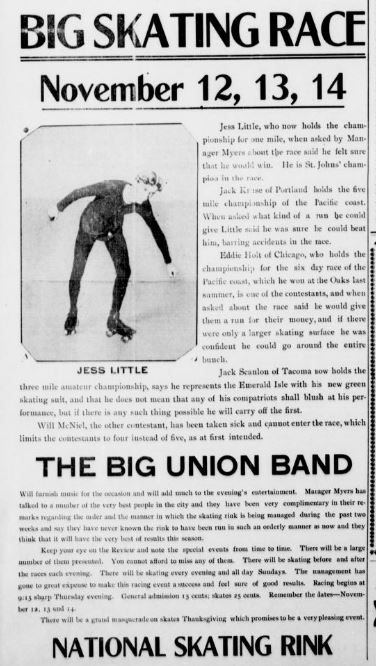 St Johns Review November 6, 1908
St Johns Review November 6, 1908
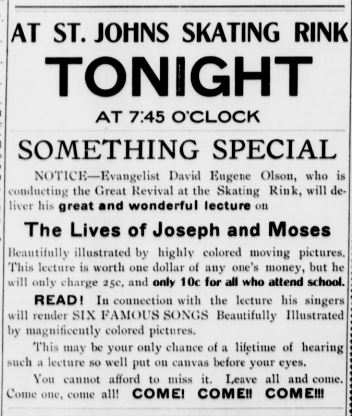 St Johns Review October 9, 1908
St Johns Review October 9, 1908
In 1908 St Johns had several options when it came to roller skating rinks. Most notable was the St Johns Skating Rink which on occasion offered motion pictures for added entertainment. You will note that none of these establishments listed their address. It was a small town after all and you were expected to know where they were.
♦
 Swanson's Frozen Food Lockers - Meats & Groceries on Jersey St. near Leavitt Ave. This would have looked quite impressive at night with the neon signage on the overhang. Judging from the automobile out front this photo was taken no earlier than the late 1930's. Photo credit unknown. Part of a series of photos collected by Gil Parton in an album we refer to as Gil's Green Album.
Swanson's Frozen Food Lockers - Meats & Groceries on Jersey St. near Leavitt Ave. This would have looked quite impressive at night with the neon signage on the overhang. Judging from the automobile out front this photo was taken no earlier than the late 1930's. Photo credit unknown. Part of a series of photos collected by Gil Parton in an album we refer to as Gil's Green Album.
♦
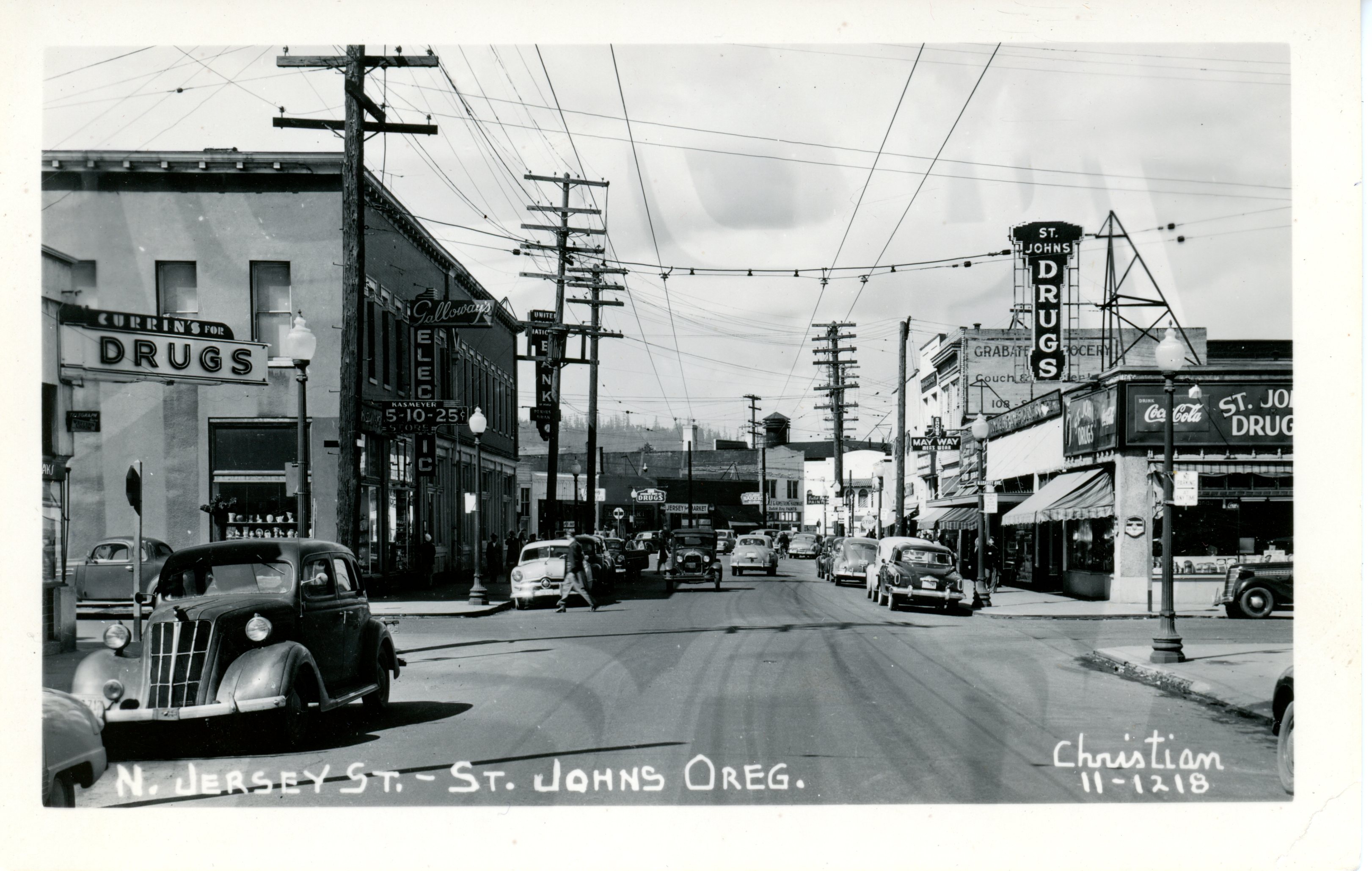 We visit this 1950 scene again, only this time our image comes from a uncropped photograph that was made into a postcard. Note that back in the day there were three pharmacies to choose from. Everhart Drug Co., Currin's For Drugs, and St Johns Drugs.
We visit this 1950 scene again, only this time our image comes from a uncropped photograph that was made into a postcard. Note that back in the day there were three pharmacies to choose from. Everhart Drug Co., Currin's For Drugs, and St Johns Drugs.
♦

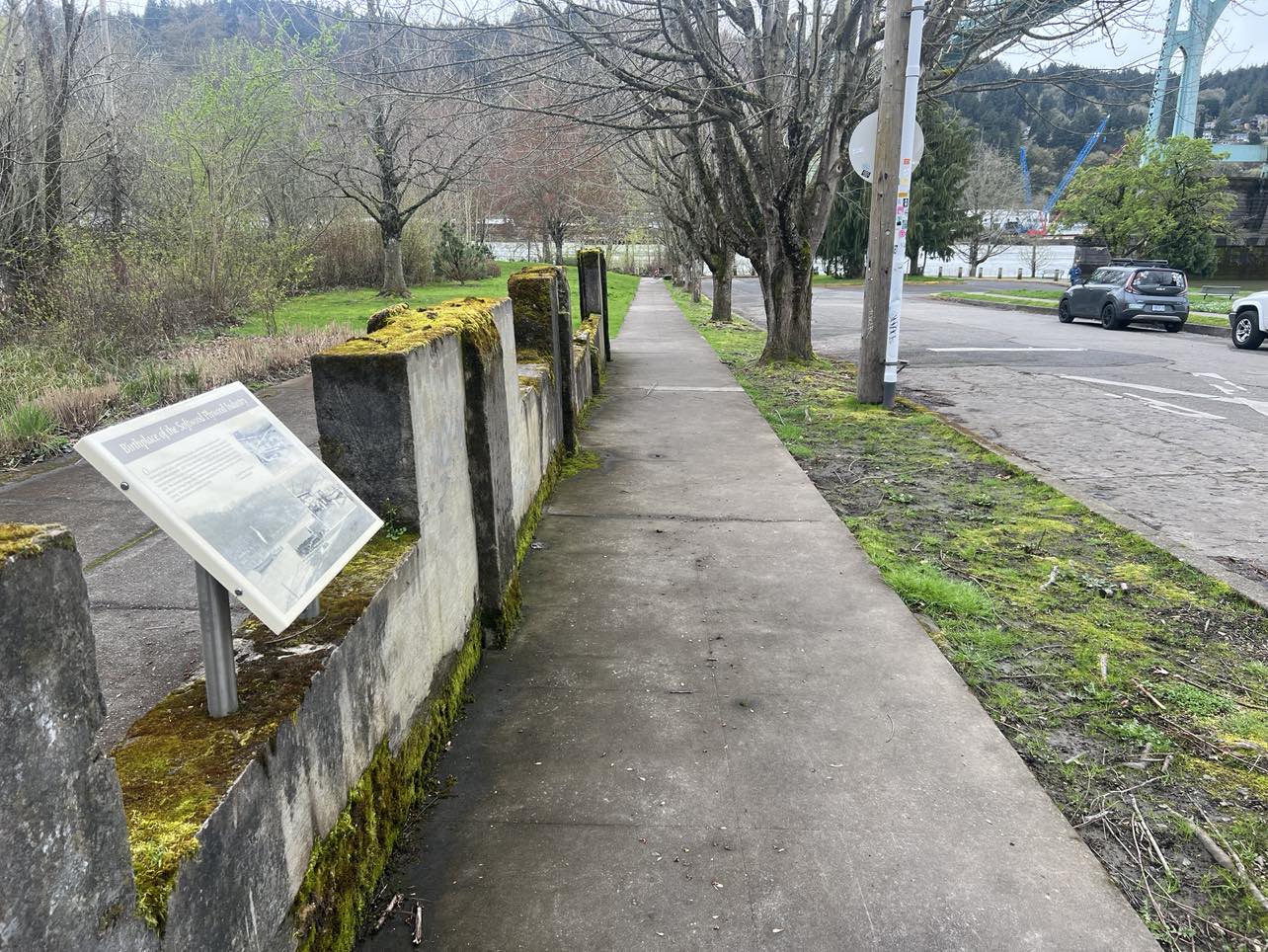 Early in 1905 Portland was preparing for a World’s Fair as a part of the centennial observance of the Lewis and Clark Expedition. It was to be a gala, colorful affair with hundreds of booths and exhibits. Portland Manufacturing Co., located across the river in St Johns, Oregon, was asked to prepare an exhibit featuring something new and unusual. It was decided to make “plywood” for the Fair. In March a panel crew was organized consisting of about six men and supervised by N. J. Bailey and Gustav A. Carlson. The plant had a St. Joe lathe. There was no regular press, no prepared glue spreader, no veneer clipper, or sanding machines. An ordinary steam kiln dryer was a part of the plant’s regular equipment. Gluing was a serious problem, the men mixed an animal glue and kept the very odoriferous material warm and pliable over a coal fire; the glue smelled so bad that the men frequently had to seek the comfort of outdoors. Hand brushes were used to “paint” the glue on the veneers. A wooden press was improvised. The pressure was applied by putting ordinary house jacks between a backing timber and another timber fixed to the press. The work was slow and tedious. Only one set of panels could be glued up at one time and this took most of one day. The panels were then put in the press overnight to set. When the Fair opened in June 1905, a young Tom Autzen was placed in charge of showing the panels, the first fir plywood “salesman” of record. He showed the panels to more than a half million people, including some very interested door manufacturers who recognized the panels as useful to them in their product.
Early in 1905 Portland was preparing for a World’s Fair as a part of the centennial observance of the Lewis and Clark Expedition. It was to be a gala, colorful affair with hundreds of booths and exhibits. Portland Manufacturing Co., located across the river in St Johns, Oregon, was asked to prepare an exhibit featuring something new and unusual. It was decided to make “plywood” for the Fair. In March a panel crew was organized consisting of about six men and supervised by N. J. Bailey and Gustav A. Carlson. The plant had a St. Joe lathe. There was no regular press, no prepared glue spreader, no veneer clipper, or sanding machines. An ordinary steam kiln dryer was a part of the plant’s regular equipment. Gluing was a serious problem, the men mixed an animal glue and kept the very odoriferous material warm and pliable over a coal fire; the glue smelled so bad that the men frequently had to seek the comfort of outdoors. Hand brushes were used to “paint” the glue on the veneers. A wooden press was improvised. The pressure was applied by putting ordinary house jacks between a backing timber and another timber fixed to the press. The work was slow and tedious. Only one set of panels could be glued up at one time and this took most of one day. The panels were then put in the press overnight to set. When the Fair opened in June 1905, a young Tom Autzen was placed in charge of showing the panels, the first fir plywood “salesman” of record. He showed the panels to more than a half million people, including some very interested door manufacturers who recognized the panels as useful to them in their product.
In February 1910, the Portland Manufacturing Co. plant burned to the ground, destroying most of the equipment and all of the building. Peter Autzen was reluctant to rebuild but Tom Autzen and Harry Nicolai prevailed upon him to do so. The plant reopened in the fall of 1910 and resumed plywood production again, this time with some improved items of equipment. The next ten years saw many new items of equipment and some changes in process. The logs were steamed to improve quality of veneer. Vegetable glue replaced the blood glue and was applied with mechanical spreaders. Mechanical dryers replaced the steam kiln for drying veneers. Hydraulic presses replaced
the old hand house jack type of press. Trim saws and drum sanders became standard equipment.
Time marches on. By the spring of 1956 the Portland Manufacturing Company, now known as Plylock, it was determined that the plant was no longer suitable to compete efficiently with the more modern plants. Production of plywood was discontinued in September 1963, after nearly sixty years. Source: Plywood Pioneers Association.
♦
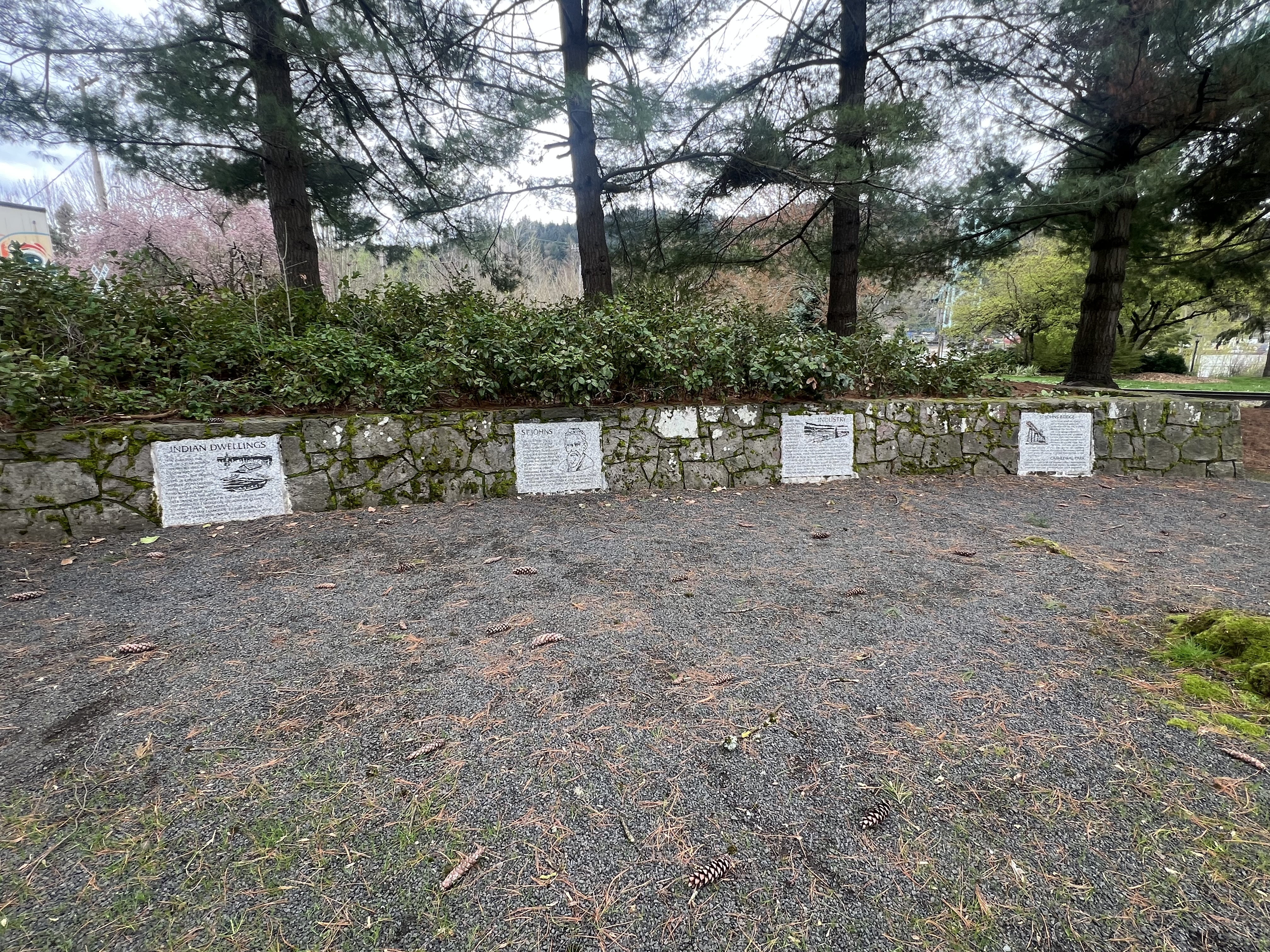
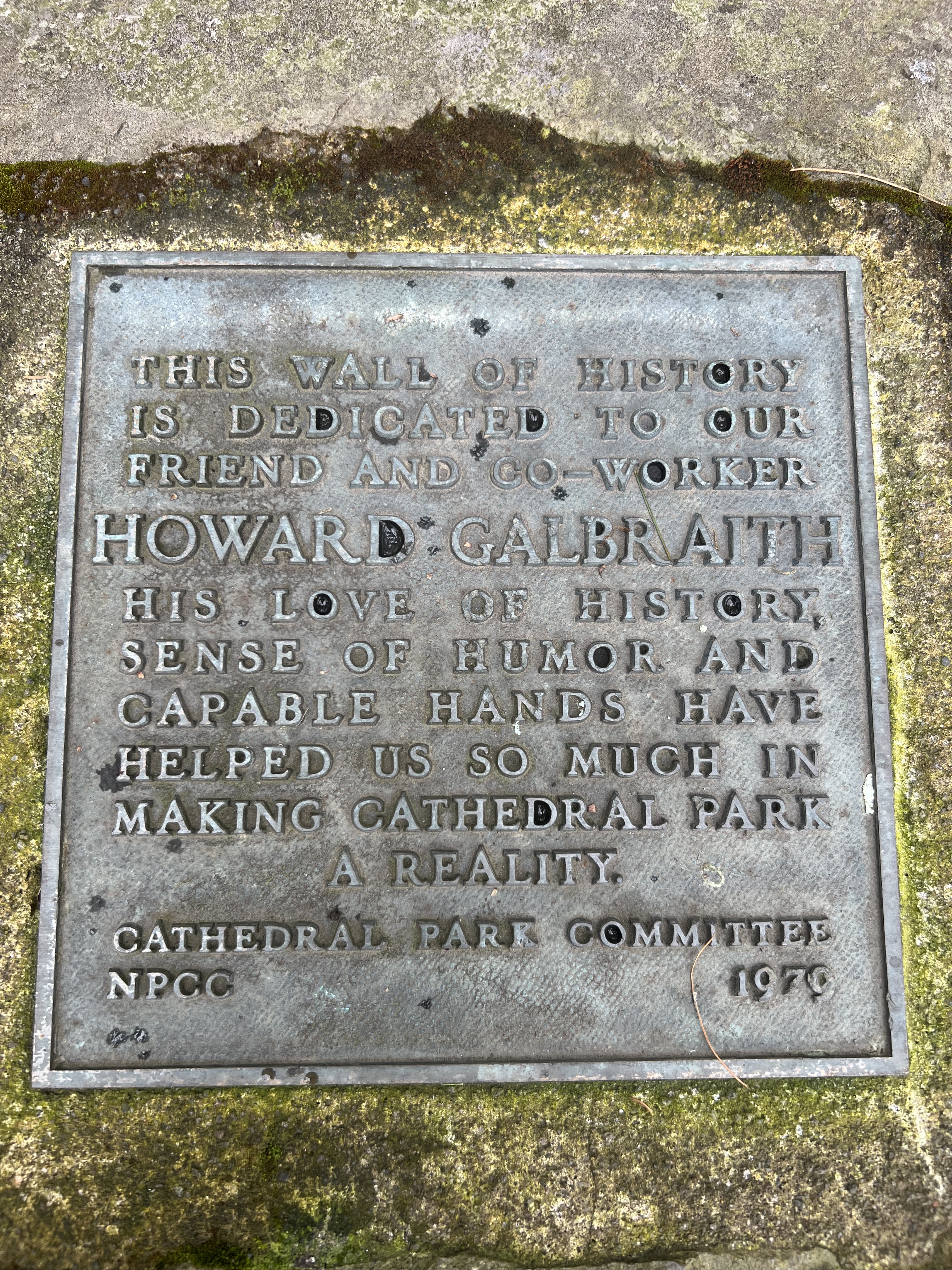 St Johns Wall of History in Cathedral Park dedicated to Howard Galbraith
St Johns Wall of History in Cathedral Park dedicated to Howard Galbraith
♦
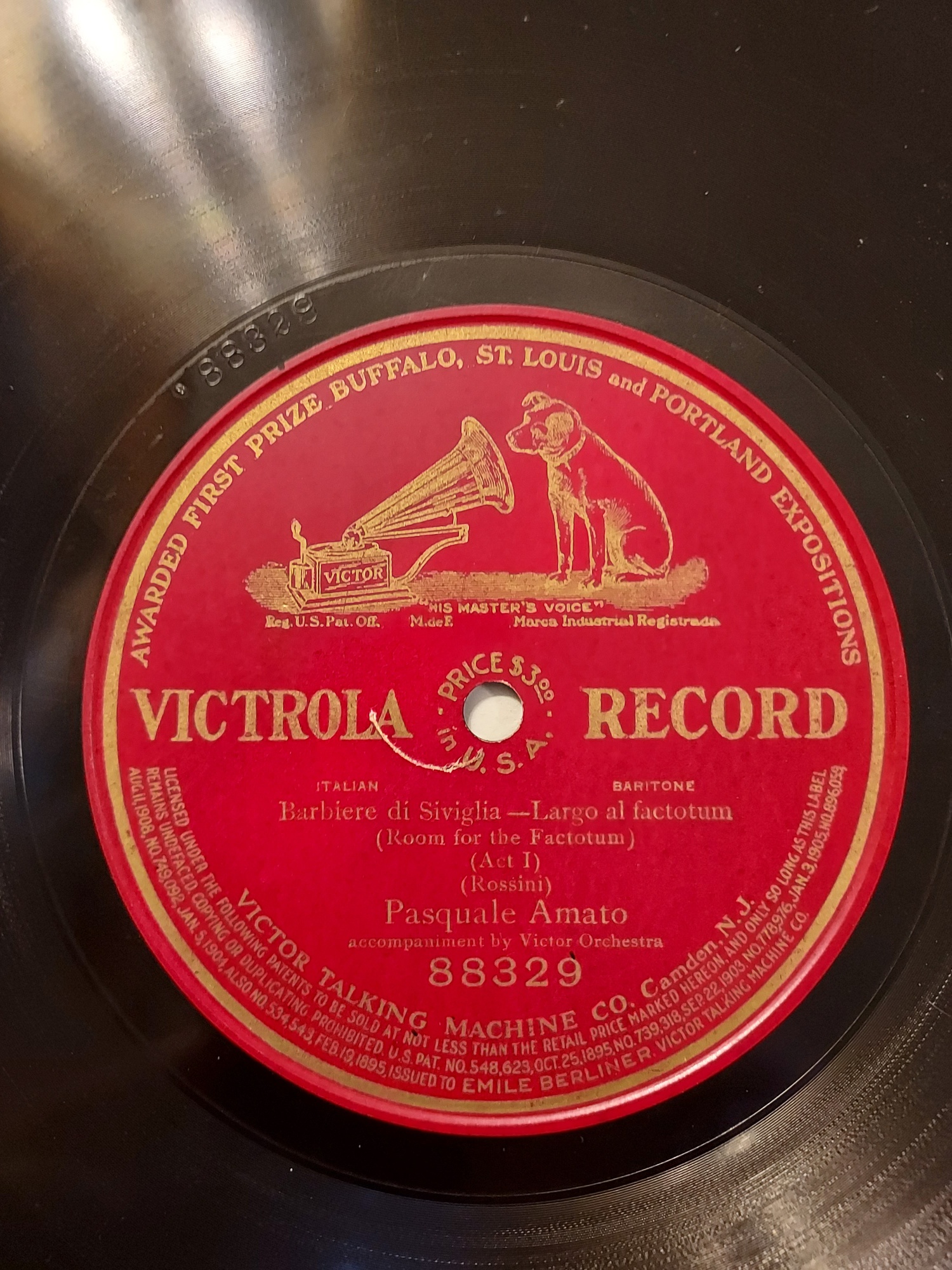 Seven years after the 1905 Lewis and Clark Exposition had ended there was still some promotional value in mentioning the Portland Exposition. What you are seeing here is a first addition / first pressing of Victrola Record 88329 (Shellac, 12", 78 RPM, Single Sided). This recording was done on the 1st take in Camden, New Jersey on November 9th, 1911. It was released commercially the following year. Note that the cost of this recording in 1912 was $3, which is equivalent to $98.25 today. It is 113 years old. Here is a later pressing of that same recording - https://www.youtube.com/watch?v=pdAD2IIxlxc&t=1s
Seven years after the 1905 Lewis and Clark Exposition had ended there was still some promotional value in mentioning the Portland Exposition. What you are seeing here is a first addition / first pressing of Victrola Record 88329 (Shellac, 12", 78 RPM, Single Sided). This recording was done on the 1st take in Camden, New Jersey on November 9th, 1911. It was released commercially the following year. Note that the cost of this recording in 1912 was $3, which is equivalent to $98.25 today. It is 113 years old. Here is a later pressing of that same recording - https://www.youtube.com/watch?v=pdAD2IIxlxc&t=1s
♦
 Mayor Terry Schrunk, Roosevelt grad, with Robert J Ketrenos who ran a confectionery store across from James John, owned the Perch tavern ( his house was right behind the tavern), owned Teletronics Electronics which was on Lombard and Buchanan. Terry died March 4, 1975
Mayor Terry Schrunk, Roosevelt grad, with Robert J Ketrenos who ran a confectionery store across from James John, owned the Perch tavern ( his house was right behind the tavern), owned Teletronics Electronics which was on Lombard and Buchanan. Terry died March 4, 1975
♦
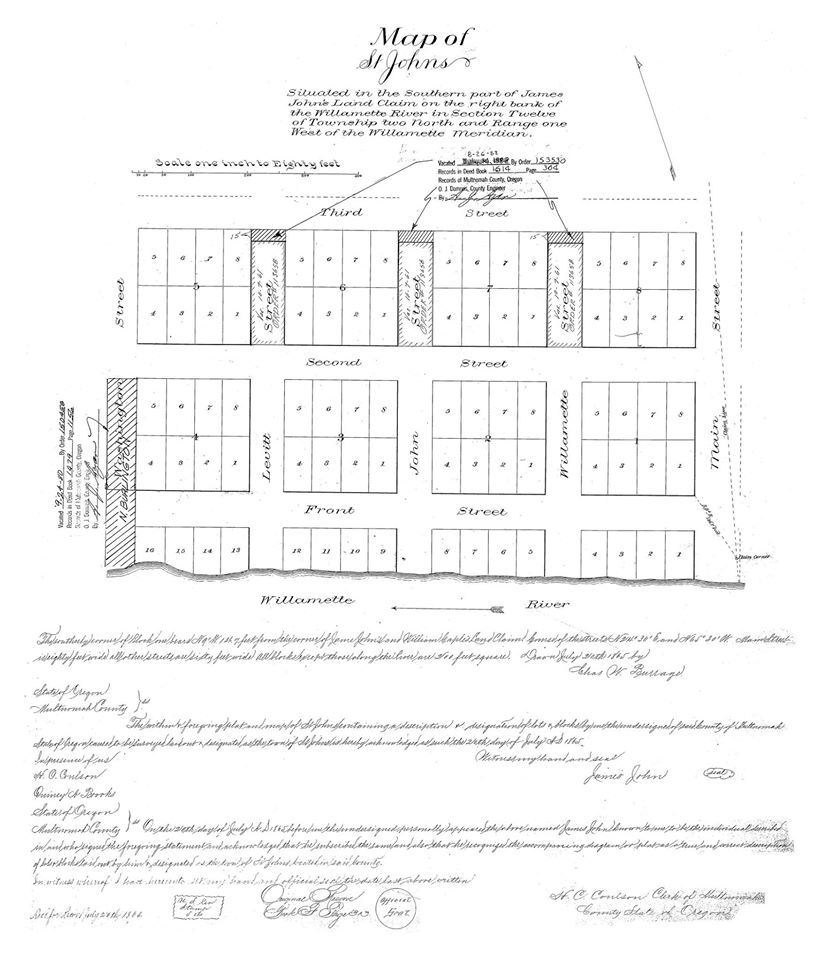 Original St Johns Map dated July 20, 1865 by James John consisting of Eight Blocks. Borders of St Johns: West - Burlington, East - Richmond, South - Albany, North - Crawford.
Original St Johns Map dated July 20, 1865 by James John consisting of Eight Blocks. Borders of St Johns: West - Burlington, East - Richmond, South - Albany, North - Crawford.
♦
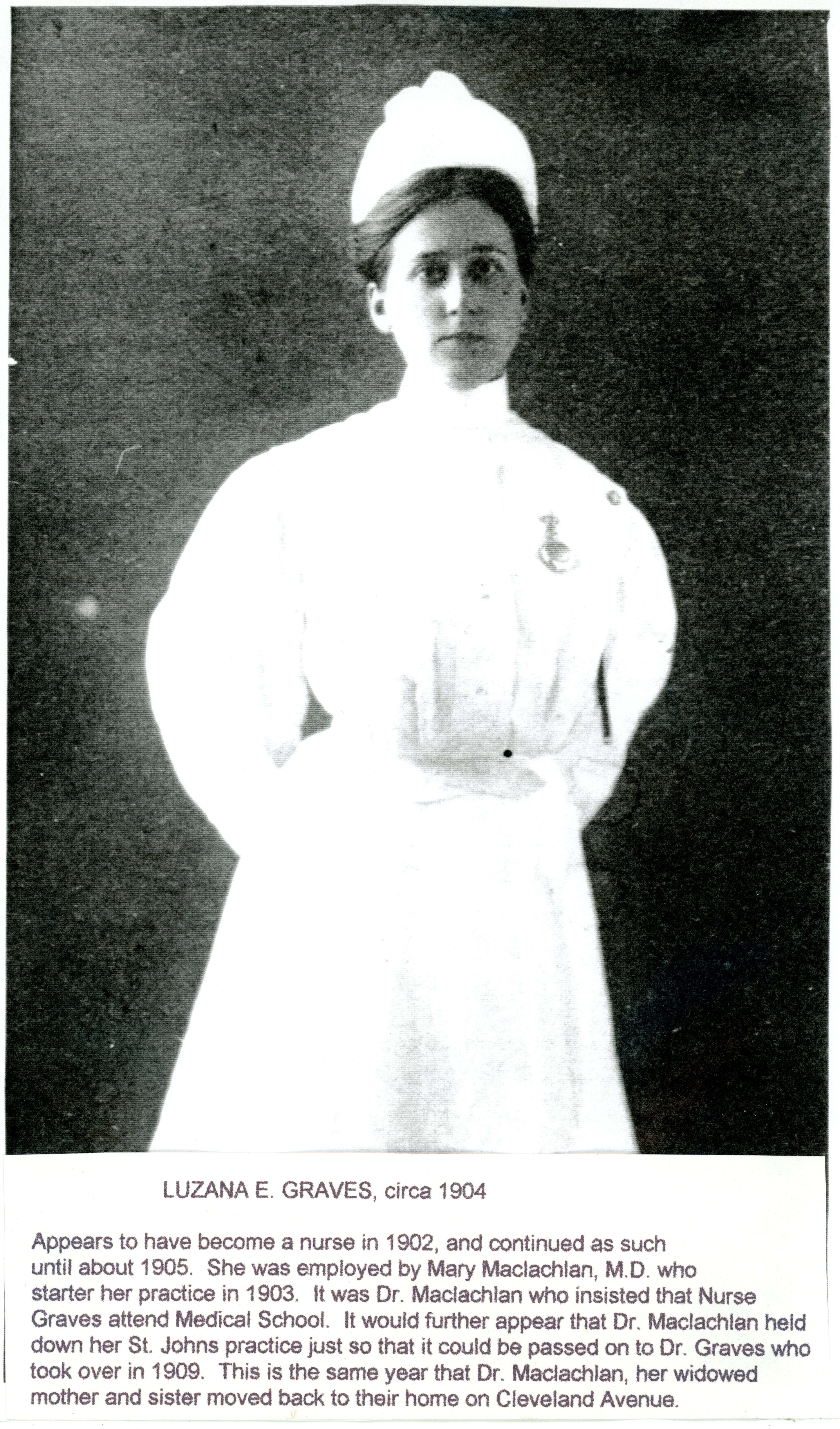
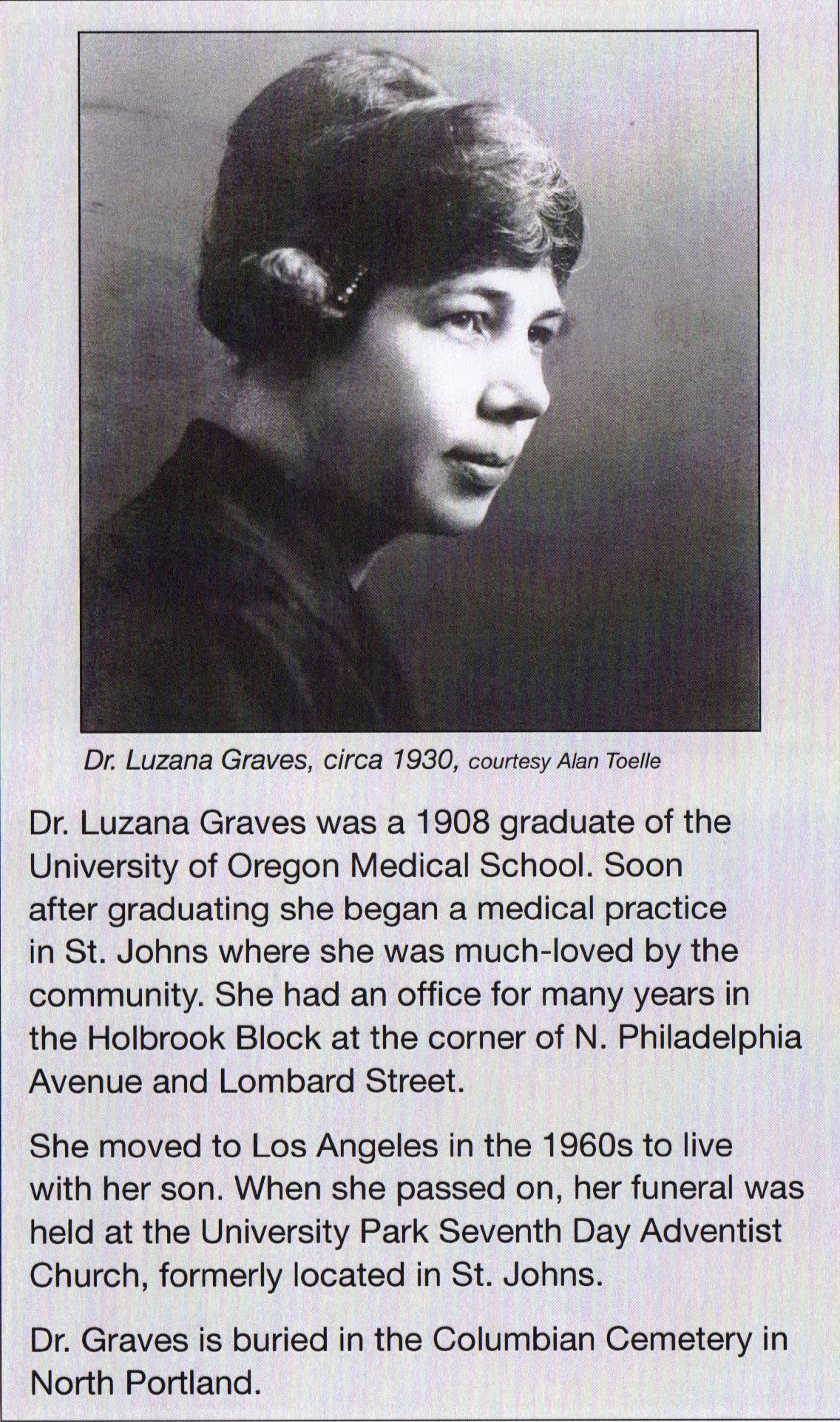
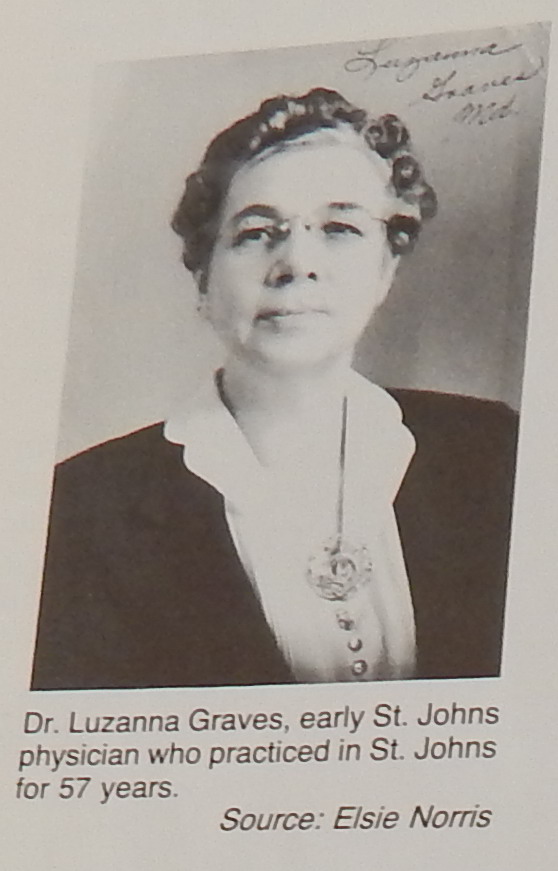 Dr. Luzana E. Graves was a much loved and respected doctor who practiced medicine in St Johns for 57 years. Dr Graves specialized in treating women and children. She was married to Ira Duncan and together they had two children, a boy and a girl. Her son was to became a doctor, settling in California. At the time it was customary to take on the husbands last name but during her medical career Luzana retained her maiden name, using it as as her professional name.
Dr. Luzana E. Graves was a much loved and respected doctor who practiced medicine in St Johns for 57 years. Dr Graves specialized in treating women and children. She was married to Ira Duncan and together they had two children, a boy and a girl. Her son was to became a doctor, settling in California. At the time it was customary to take on the husbands last name but during her medical career Luzana retained her maiden name, using it as as her professional name.
♦
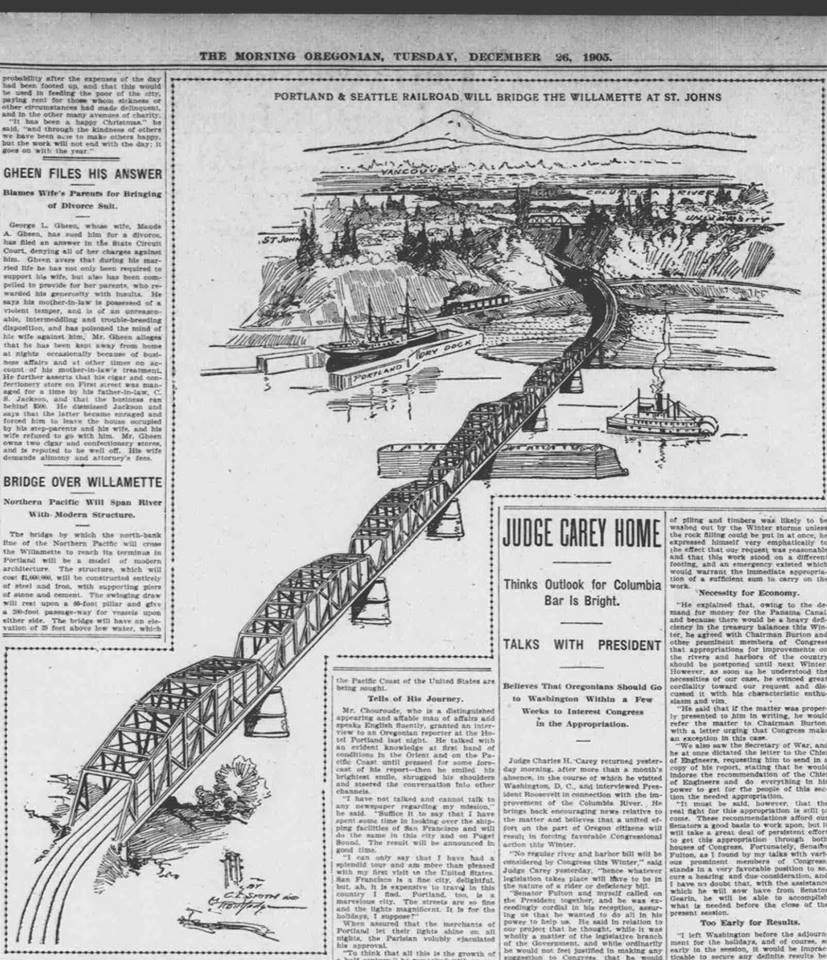 December 26, 1905 Oregonian article on the plans for the Portland & Seattle railway bridge and
December 26, 1905 Oregonian article on the plans for the Portland & Seattle railway bridge and
The Cut.

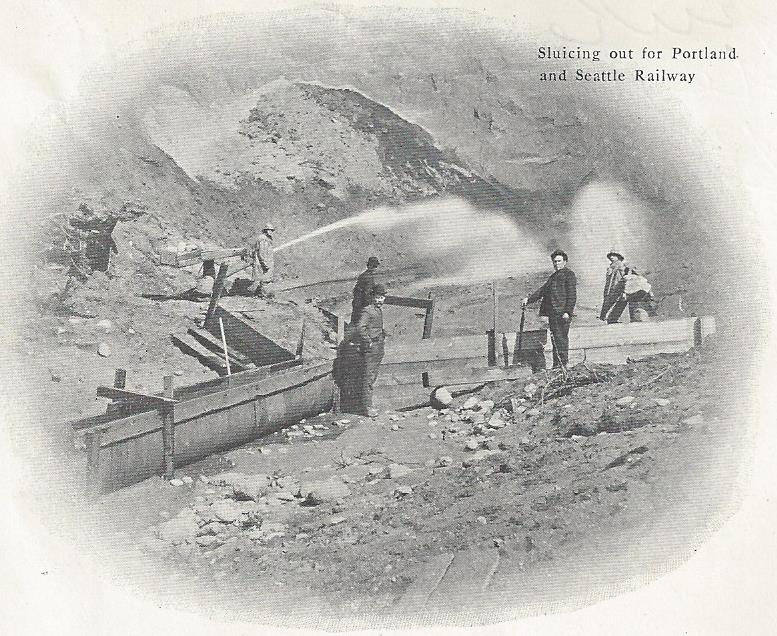 Photos taken during the construction of The Cut, probably in 1907. Looking ahead, in January 1908 "Spokane" was added to the railroad's name, making it the Spokane, Portland & Seattle Railway. The railroad did reach Spokane in 1909. The Cut was completed under this new SP&S designation in 1908. Oh, by the way, the Spokane, Portland, and Seattle Railway never did reach Seattle. Having Seattle in it's name, a marketing ploy, discouraged other railroads from expanding into that market.
Photos taken during the construction of The Cut, probably in 1907. Looking ahead, in January 1908 "Spokane" was added to the railroad's name, making it the Spokane, Portland & Seattle Railway. The railroad did reach Spokane in 1909. The Cut was completed under this new SP&S designation in 1908. Oh, by the way, the Spokane, Portland, and Seattle Railway never did reach Seattle. Having Seattle in it's name, a marketing ploy, discouraged other railroads from expanding into that market.
The railroad bridge that crosses the Willamette had been commonly referred as the St Johns Bridge until the automobile bridge, officially known as the St Johns Bridge, was completed in 1931. The SP&S continued on until 1970 when it was merged into the Burlington Northern.
♦
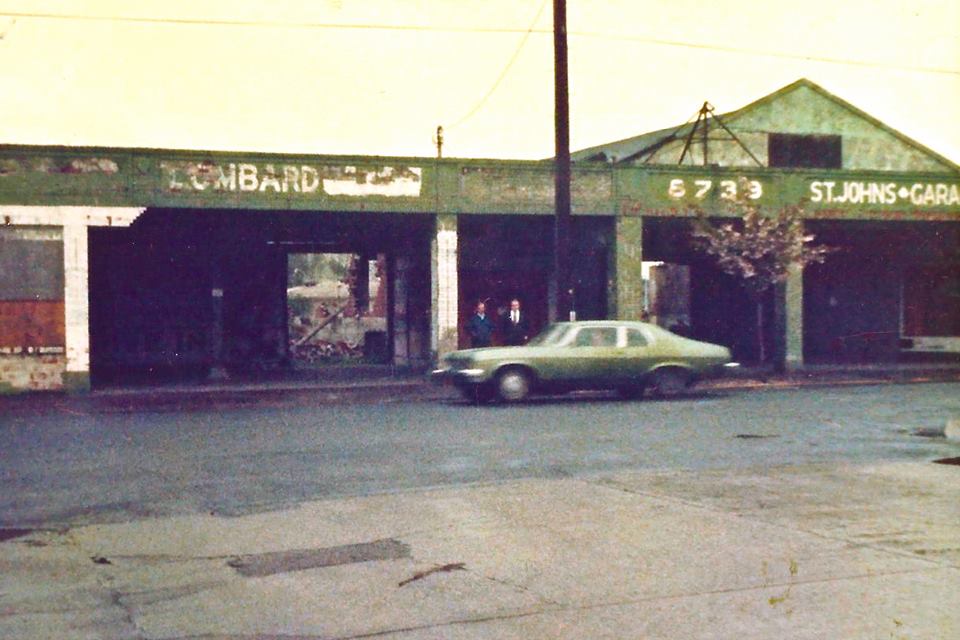 The St Johns Garage in the process of being torn down in 1979. The space was unoccupied for 36 years. In its place now is a new structure, bridging the gap between the Jower's building and Marie's. Photo credit to Robin Smith.
The St Johns Garage in the process of being torn down in 1979. The space was unoccupied for 36 years. In its place now is a new structure, bridging the gap between the Jower's building and Marie's. Photo credit to Robin Smith.
♦
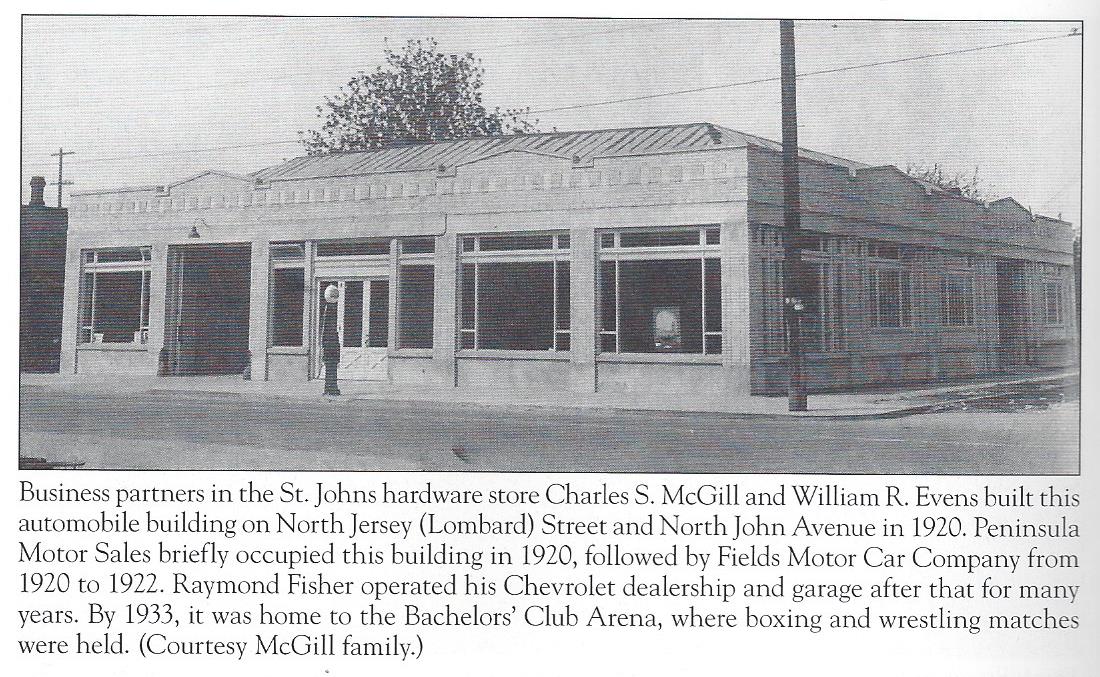 Photo from St. Johns And The North Portland Peninsula by Don Nelson
Photo from St. Johns And The North Portland Peninsula by Don Nelson
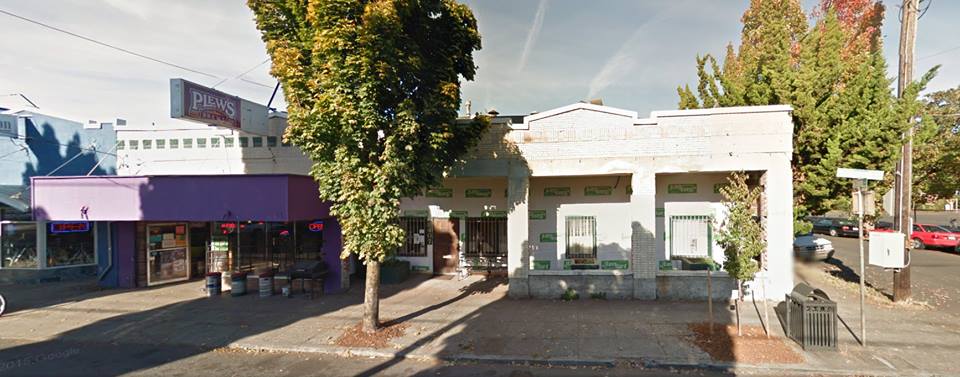
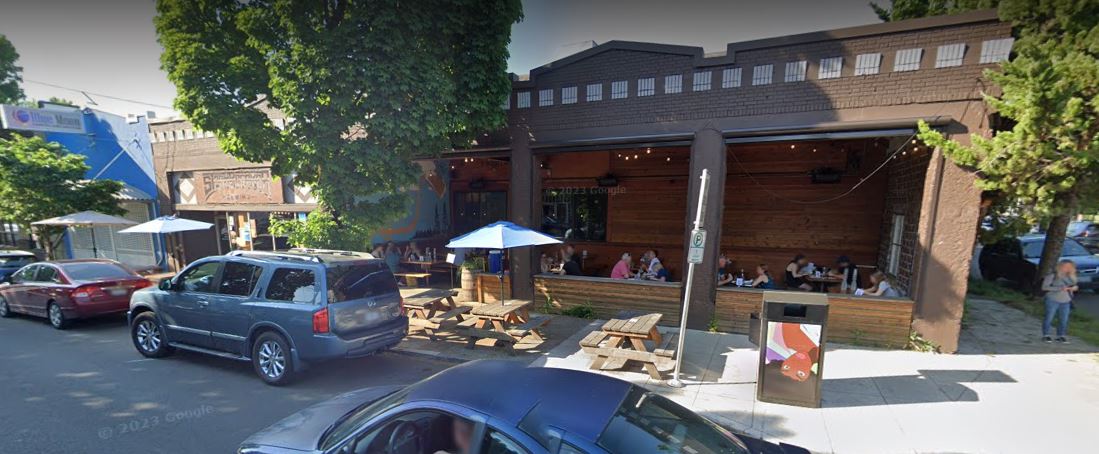 The location of St. John's first Chevrolet Dealership. Peninsula Motor Sales (June 1920 - December 1921) and Fields Motor Car Co. (December 1921 - November 1922). Raymond F. Fisher took over in November 1922, later moving to a new building at Jersey and Richmond in 1929-1930. Today this is the home of Stormbreaker Brewing.
The location of St. John's first Chevrolet Dealership. Peninsula Motor Sales (June 1920 - December 1921) and Fields Motor Car Co. (December 1921 - November 1922). Raymond F. Fisher took over in November 1922, later moving to a new building at Jersey and Richmond in 1929-1930. Today this is the home of Stormbreaker Brewing.
♦

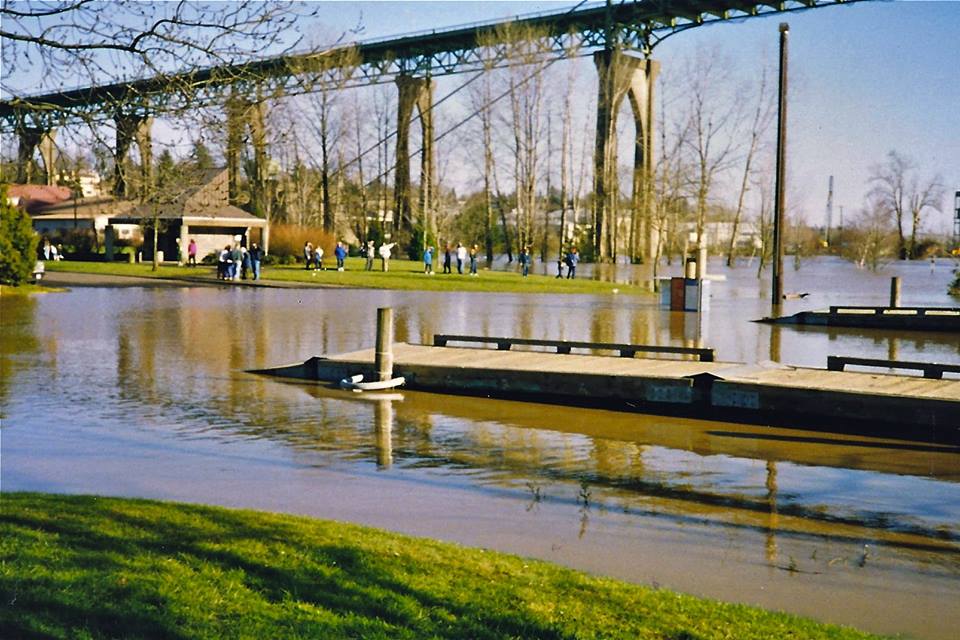 The flood of 1996. Photos provided by Robin Smith.
The flood of 1996. Photos provided by Robin Smith.
♦
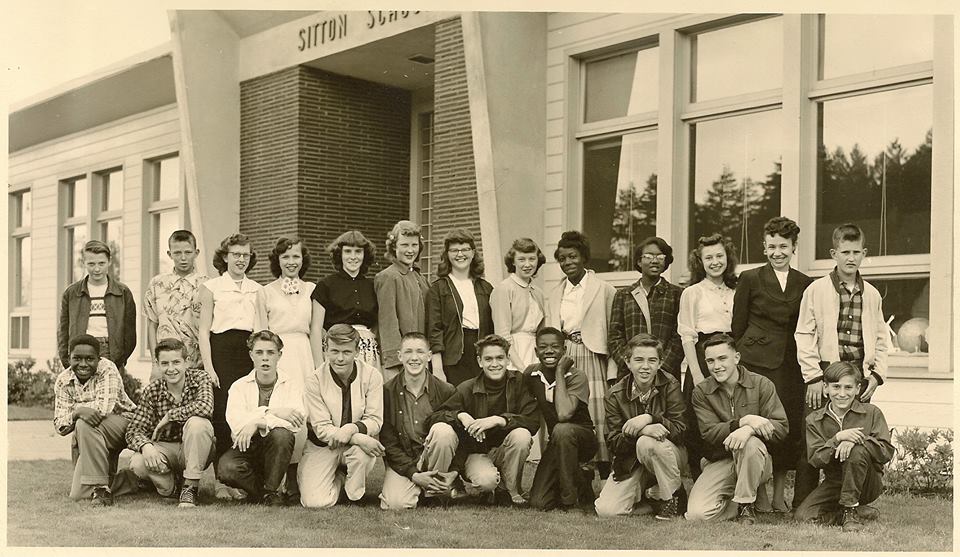 We are back again at Sitton School, only this time at the "new" Sitton School, built in 1949. Pictured here is the Eighth Grade class of 1953. The teacher is Mrs Floy Pepper. Other teachers were Mr Larson, Mr Fleming, Mr Keith Bannister, Mrs Wiabel, Mr Imes, Mrs Cutler, and principal Miss Viola Harrington. Viola Harrington later become the principle at Kennedy School, retiring in 1964. Miss Harrington would often say "what's fair for one is fair for all".
We are back again at Sitton School, only this time at the "new" Sitton School, built in 1949. Pictured here is the Eighth Grade class of 1953. The teacher is Mrs Floy Pepper. Other teachers were Mr Larson, Mr Fleming, Mr Keith Bannister, Mrs Wiabel, Mr Imes, Mrs Cutler, and principal Miss Viola Harrington. Viola Harrington later become the principle at Kennedy School, retiring in 1964. Miss Harrington would often say "what's fair for one is fair for all".
♦
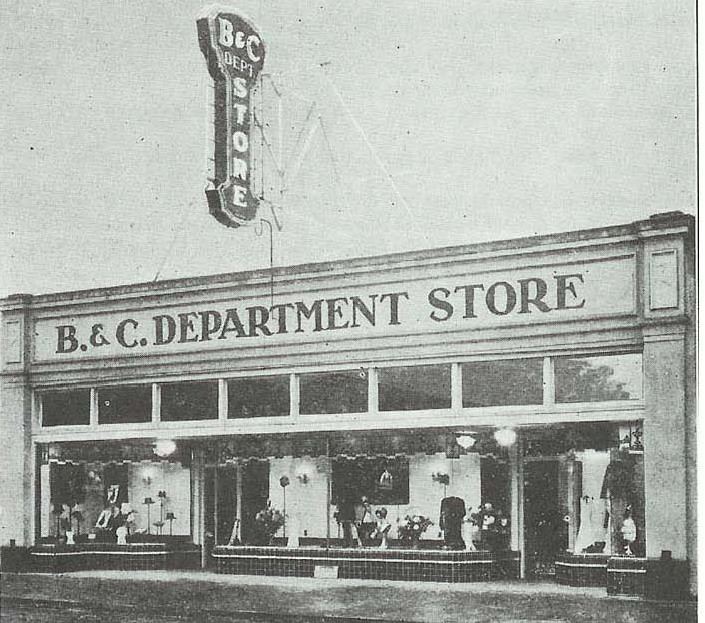 B & C Department store (Bloomenthal & Caplan) 8426 N Jersey (Lombard) as it looked in 1930.
B & C Department store (Bloomenthal & Caplan) 8426 N Jersey (Lombard) as it looked in 1930.
♦
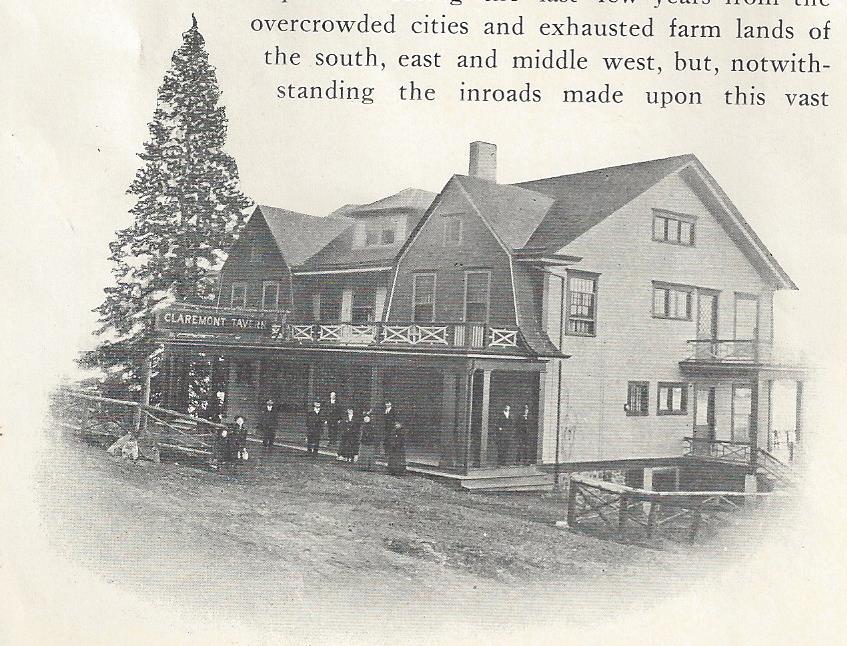 Photo of the Claremont Tavern taken circa 1907. The St Johns Ferry would dock very close to this establishment when on the Linnton side of the Willamette river. 1919 was a fateful year for the Claremont Tavern. (part 2) https://www.srnpdx.org/daring-deeds-pt-2.html (part 3) https://www.srnpdx.org/dastardly-deeds-pt3.html (part 4) https://www.srnpdx.org/daring-deeds-pt4.html & if you feel like you might have missed something you can start at the beginning of this story - https://www.srnpdx.org/daring-deeds-pt-1.html
Photo of the Claremont Tavern taken circa 1907. The St Johns Ferry would dock very close to this establishment when on the Linnton side of the Willamette river. 1919 was a fateful year for the Claremont Tavern. (part 2) https://www.srnpdx.org/daring-deeds-pt-2.html (part 3) https://www.srnpdx.org/dastardly-deeds-pt3.html (part 4) https://www.srnpdx.org/daring-deeds-pt4.html & if you feel like you might have missed something you can start at the beginning of this story - https://www.srnpdx.org/daring-deeds-pt-1.html
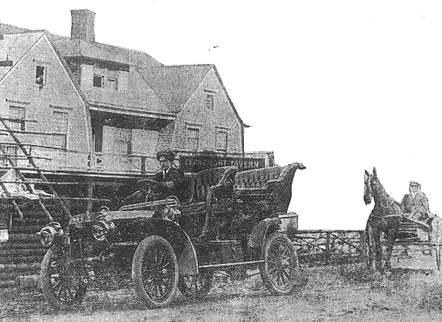 (Oregon Historical Society photo)
(Oregon Historical Society photo)
♦
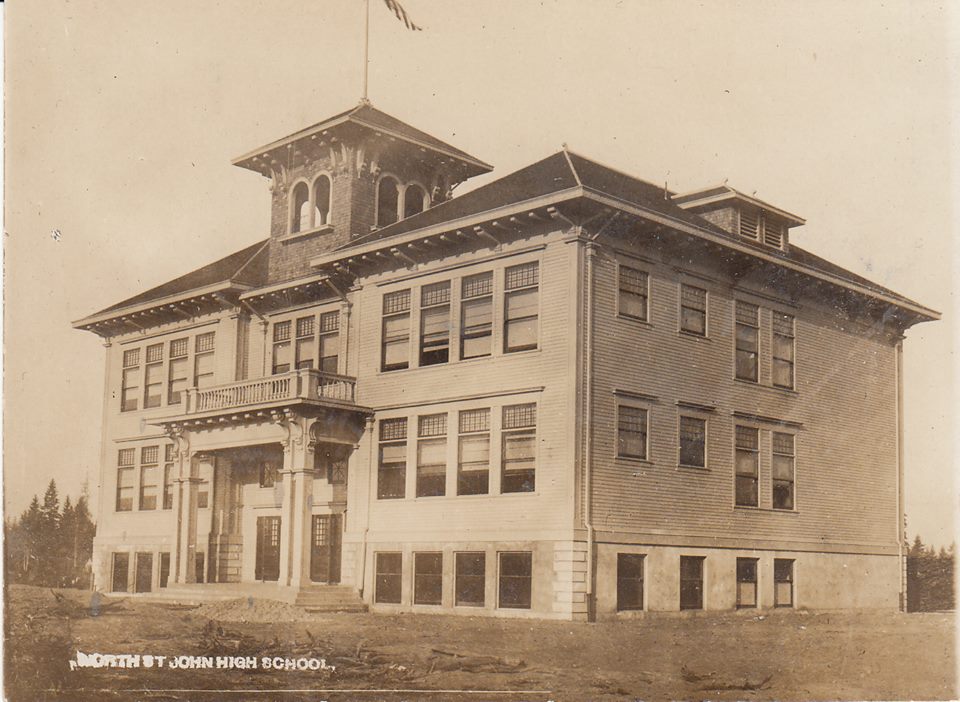 North (Sitton) school as it looked right after it was completed in 1907. Notice all the trees surrounding it. This was a pretty remote area back then and the roads were all mud in the Winter. The James John High School students used the upper floor while their new school was being built. The location was east from the present school across Reno between Hudson and Smith. This is now blacktop and used as a playground.
North (Sitton) school as it looked right after it was completed in 1907. Notice all the trees surrounding it. This was a pretty remote area back then and the roads were all mud in the Winter. The James John High School students used the upper floor while their new school was being built. The location was east from the present school across Reno between Hudson and Smith. This is now blacktop and used as a playground.
♦
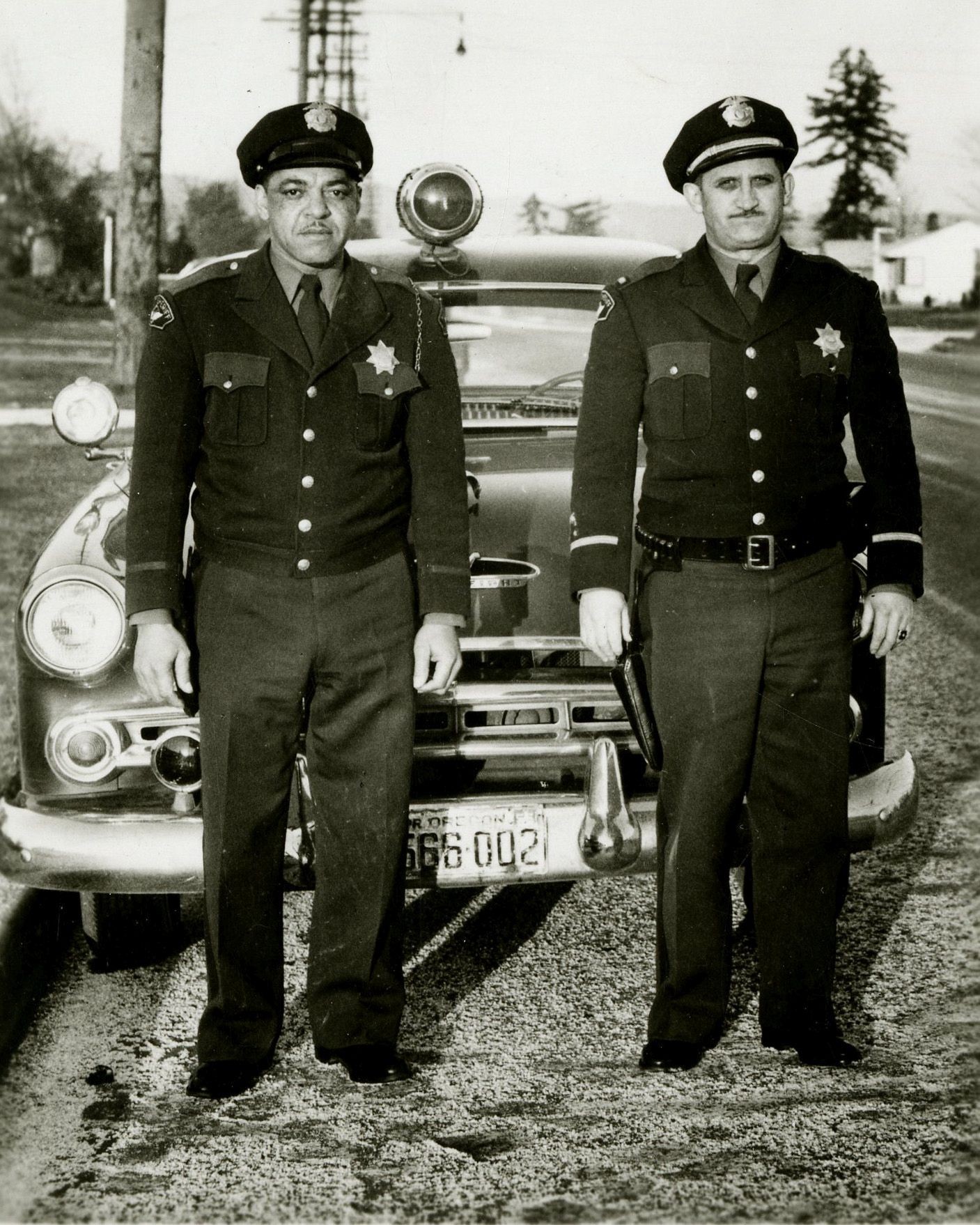 Matt Dishman (left) and Bill Travis (right) circa 1953.
Matt Dishman (left) and Bill Travis (right) circa 1953.
Their patrol car a 1953 Red Ram hemi V8 Dodge.
Matthew Dishman, Jr., better known as Matt Dishman, came to the Portland area from Mississippi in 1942. He became a Department of Public Safety employee with Multnomah County in 1944. Matt along with Bill Travis and Charles Duke were the first black police officers hired by Multnomah County.
The three men were assigned to provide law enforcement for the unincorporated city of Vanport which was managed by the Housing Authority of Portland, even though it was outside Portland city limits.
Vanport began life in 1942. At its peak it was home to 40,000 residents, about 40 percent of them African Americans, but by 1943-44 families living in Vanport were moving out at the rate of 100 per day. At the time of the flood on May 30, 1948 the population was down to about 12,600 whites, 5,000 African Americans and 900 Japanese Americans.
Vanport was racially segregated, with its residents residing in available apartments based on color. Vanport's Black resident children were integrated into community schools but medical facilities for all residents were segregated.
Dishman and the other black police officers were remembered for providing dignity to the community during the painful recovery operation which took place after the Vanport flood.
Matt went on to become a custody officer with Multnomah County for 20 years. He was cited as the 'kind of custody officer that is needed in all jail facilites' by two Oregon Corrections Division officials in 1966, three years before his passing.
Matt Dishman was involved in his community, being associated with the Albina Neighborhood Improvement Project, Boy Schots, NAACP, the Urban League and St. Anndres's Community Church. The Matt Dishman Community Center was named in his honor.
♦
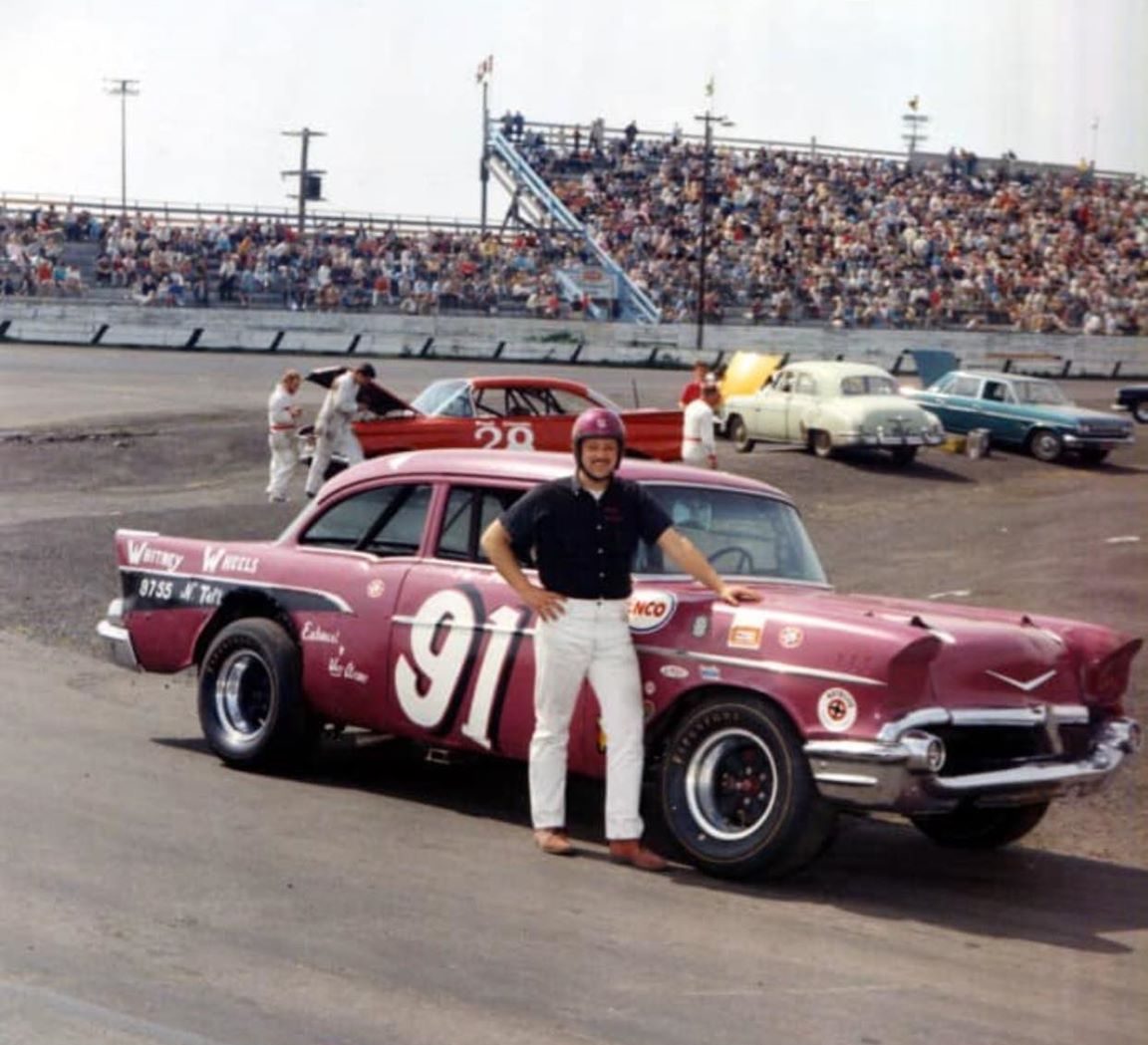 Pat Pattee graduated Roosevelt High School in 1957. Pat's passions included radio broadcasting, music, night club entertaining and racing. He somehow found a way to excel in all of his interests. Pat formed his own jazz and blues band, the Pat-Tones, and was a very talented drummer; his band played many of the Portland blues clubs in the ‘50’s.
Pat Pattee graduated Roosevelt High School in 1957. Pat's passions included radio broadcasting, music, night club entertaining and racing. He somehow found a way to excel in all of his interests. Pat formed his own jazz and blues band, the Pat-Tones, and was a very talented drummer; his band played many of the Portland blues clubs in the ‘50’s.
Pat Pattee was chosen Grand Marshall for the 1975 St Johns Parade.
The parade theme that year was Music Daze.
Dubbed “The Preacher”, Pat rose to disc jockeying fame when he landed at KISN radio in Portland, Oregon, as one of the original KISN Good Guys. May 1, 1959, his, was one of two voices to sign KISN Radio on the air. The Preacher’s deep baritone voice could be heard across the airwaves from 12 midnight to 6:00 A.M. You can hear some classic Pat Pattee audio clips (including the Night Watch jingle) at this link - https://www.goodguyradio.com/kisn-audio.html
Pat's KLSC sign in "Blow Pat Blow" can be found here - https://soundcloud.com/soul007-ntlworld-com/pat-the-cat-monforte-inter-com-blow-pat-blow?si=b7d5d27bbcd14ae1b2a239aa8c942d42&utm_source=clipboard&utm_medium=text&utm_campaign=social_sharing
(Second part of the Track)
♦
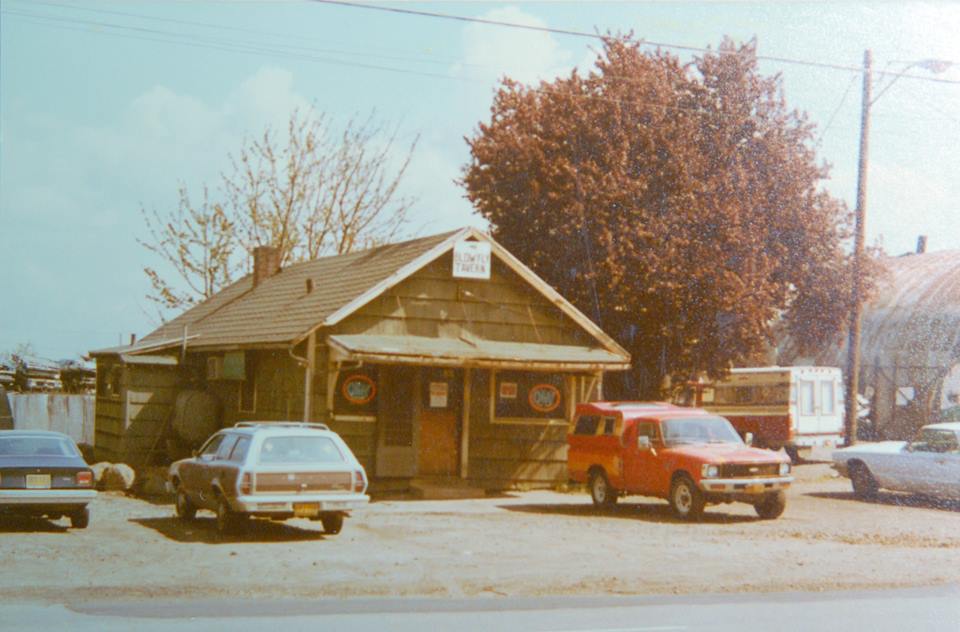
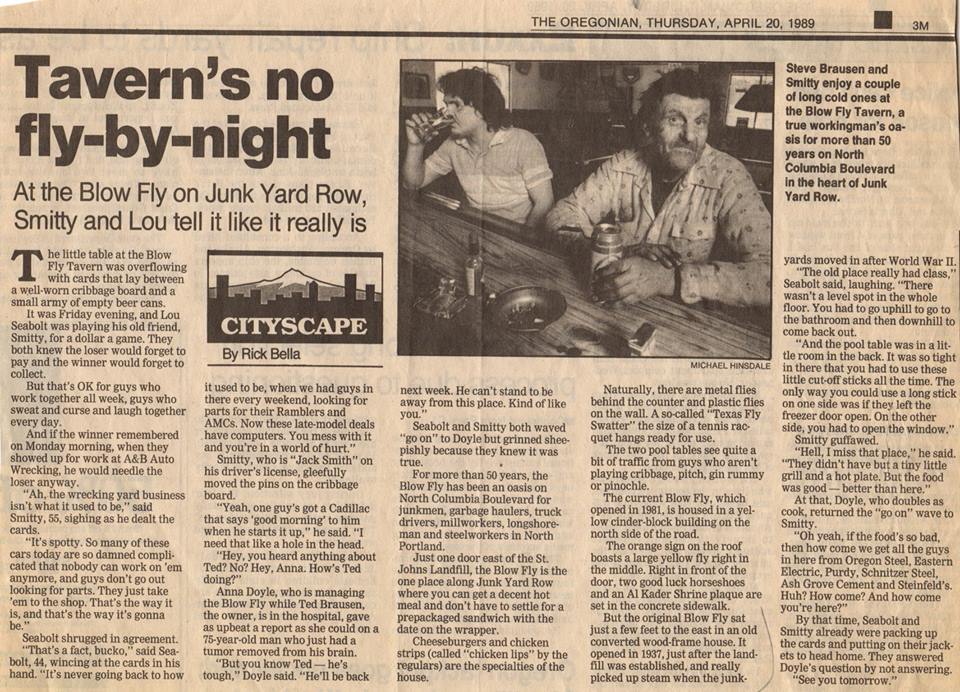 Information compiled by Gil Parton: Blow Fly Inn -- This is information provide by Allan Toelle a decedent of one of the first St Johns Donation Land Claim holders William Gatton. "Burton M. "Duce" Brooks inherited a service station and a tavern from Ross Gatton. The Blow Fly Inn 9101 N Swift Blvd was located across from the incinerator in the corner of the filbert orchard. In back of the tavern was a metals recycling lot and building where the dump pickers sold their daily treasure. I imagine that Ross Gatton also owned the section of filbert orchard to the rear" From the DMP site says that Ted Brausen owned it later.
Information compiled by Gil Parton: Blow Fly Inn -- This is information provide by Allan Toelle a decedent of one of the first St Johns Donation Land Claim holders William Gatton. "Burton M. "Duce" Brooks inherited a service station and a tavern from Ross Gatton. The Blow Fly Inn 9101 N Swift Blvd was located across from the incinerator in the corner of the filbert orchard. In back of the tavern was a metals recycling lot and building where the dump pickers sold their daily treasure. I imagine that Ross Gatton also owned the section of filbert orchard to the rear" From the DMP site says that Ted Brausen owned it later.
♦
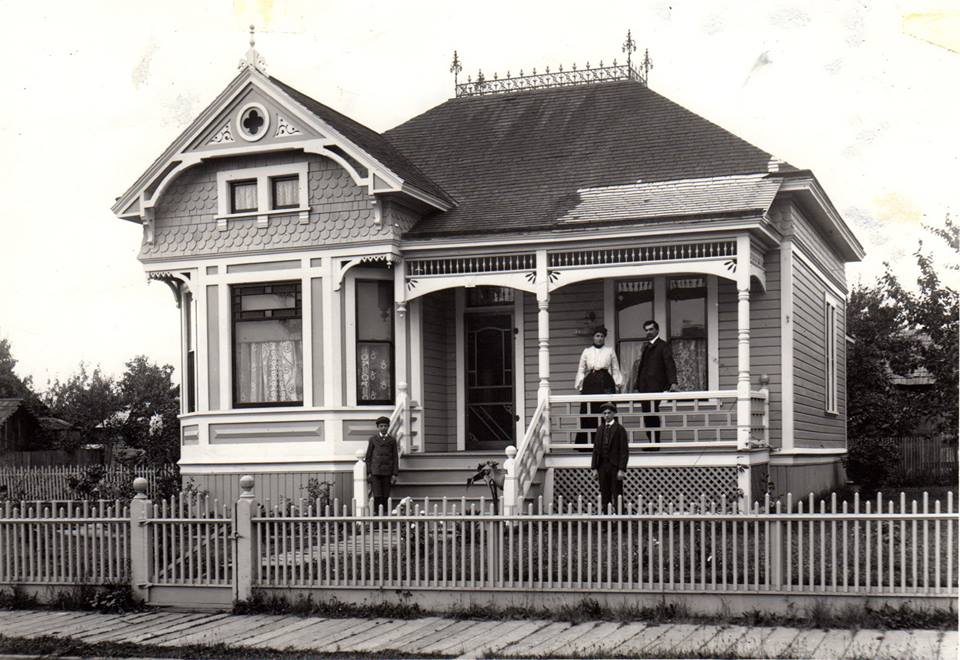 Lewis Love residence about 1900, located on the northeast corner of what is now Columbia Blvd. and Vancouver Ave. . Lewis Love established a Donation Land Claim of 636 acres bounded today by the Columbia Slough, Lombard St, Minnesota Ave. and NE 8th Ave. The Historic Columbian Cemetery was earlier named Love Cemetery as it is on his land claim.
Lewis Love residence about 1900, located on the northeast corner of what is now Columbia Blvd. and Vancouver Ave. . Lewis Love established a Donation Land Claim of 636 acres bounded today by the Columbia Slough, Lombard St, Minnesota Ave. and NE 8th Ave. The Historic Columbian Cemetery was earlier named Love Cemetery as it is on his land claim.
♦
Punjabi Rebels of the Columbia River by Johanna Ogden

Johanna Ogden will be presenting her new book Punjabi Rebels of the Columbia River at McMenamin's St Johns Theater & Pub on Wednesday February 5th. 6pm doors open, 7pm show Q&A and panel to follow. $5 All ages welcome.
https://www.mcmenamins.com/events/262045-punjabi-rebels-of-the-columbia-river-by-johanna-ogden
Oregon is commonly perceived to have little, let alone notable, South Asian history. Yet in the early 1900s Oregon was at the center of two entwined quests for Indian independence and civic belonging that rocked the world. Punjabi Rebels of the Columbia River traces the stories of the radical Indian independence organization known as Ghadar and Bhagat Singh Thind's era-defining US Supreme Court citizenship case. Ghadar sought the overthrow of India's British colonizers while Thind utilized sanctioned legal channels to do so. Despite widely differing strategies, both the movement and the man were targeted, often in coordination, by the highest levels of the US and British governments. The empires' united message: India would not be an independent country and Indians could not be citizens.
In the decades that followed, it was a verdict Indians refused to abide. Johanna Ogden's detailed history of migrants' experience expands the time frame, geographic boundaries, and knowledge of the conditions and contributions of Indians in North America. It is the story of a people's awakening amid a rich community of international workers in an age of nationalist uprisings. To understand why one of the smallest western Indian settlements became a resistance center, Punjabi Rebels mines the colonial underpinnings of labor, race, and place-making and their regional and global connections, rendering a history of whiteness and labor as much as of Indian-ness and migration. The first work to rejoin the lived experience of Thind and Ghadar activists, Punjabi Rebels complicates our understanding, not just of the global fight for Indian political rights, but of multi-racial democracy.
About the author
Johanna Ogden (MA, University of British Columbia) is an independent historian and local activist based in Portland. She has published multiple articles in Oregon Historical Quarterly, including "Ghadar, Historical Silences, and Notions of Belonging," which received the Oregon Historical Society's Joel Palmer Award, and has spoken extensively across the Pacific Northwest and in India.
♦
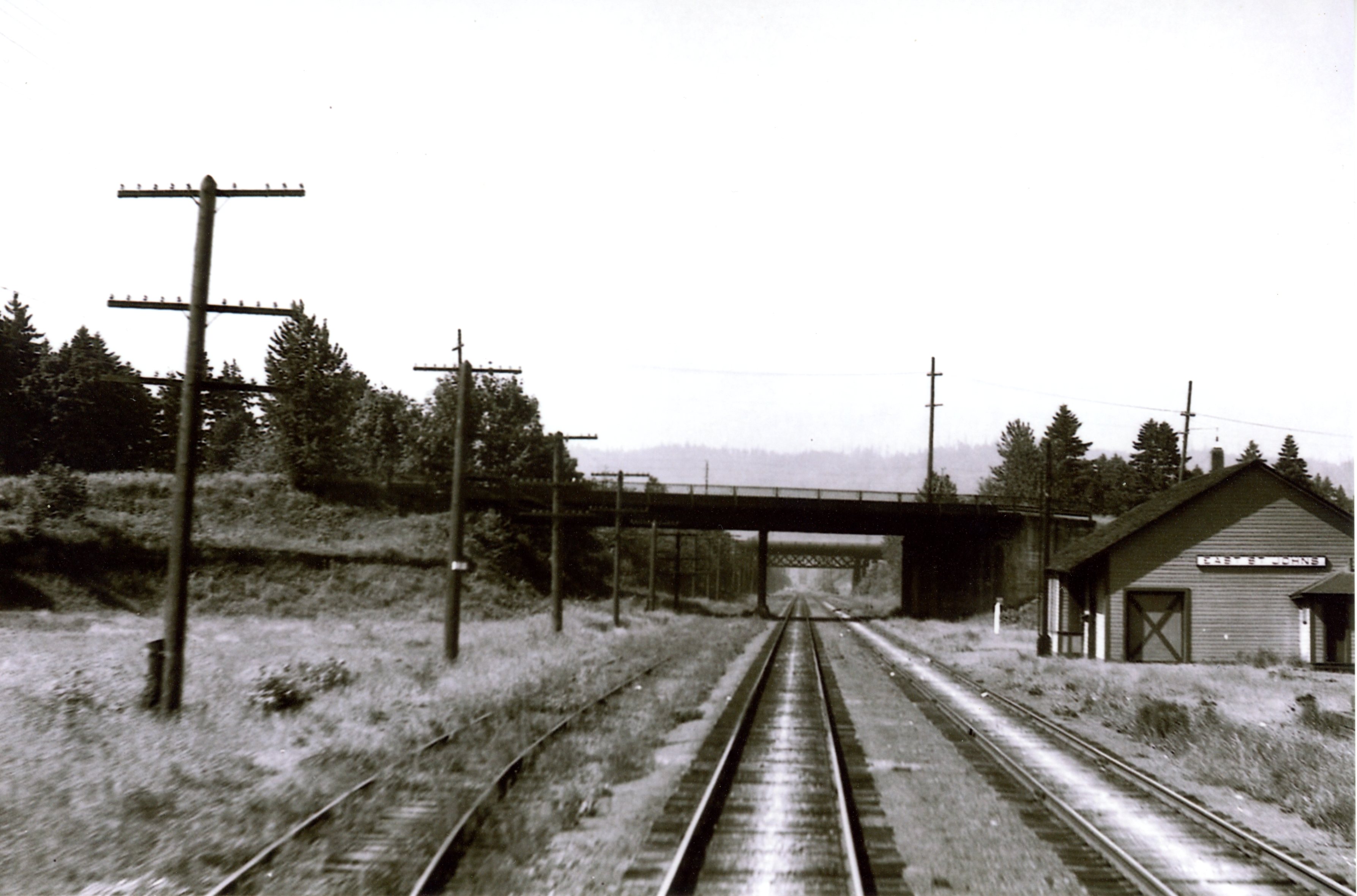
 East St Johns railway station located at the northeast end of The Cut. Your journey to St Paul, St Lewis, Chicago, New York, starts here. Advertisement found in the May 22, 1925 St Johns Review.
East St Johns railway station located at the northeast end of The Cut. Your journey to St Paul, St Lewis, Chicago, New York, starts here. Advertisement found in the May 22, 1925 St Johns Review.
♦
 This is one of many photographs Gil Parton had in his collection covering St Johns and North Portland history. It is unknown who Gil borrowed this photo from.
This is one of many photographs Gil Parton had in his collection covering St Johns and North Portland history. It is unknown who Gil borrowed this photo from.
♦
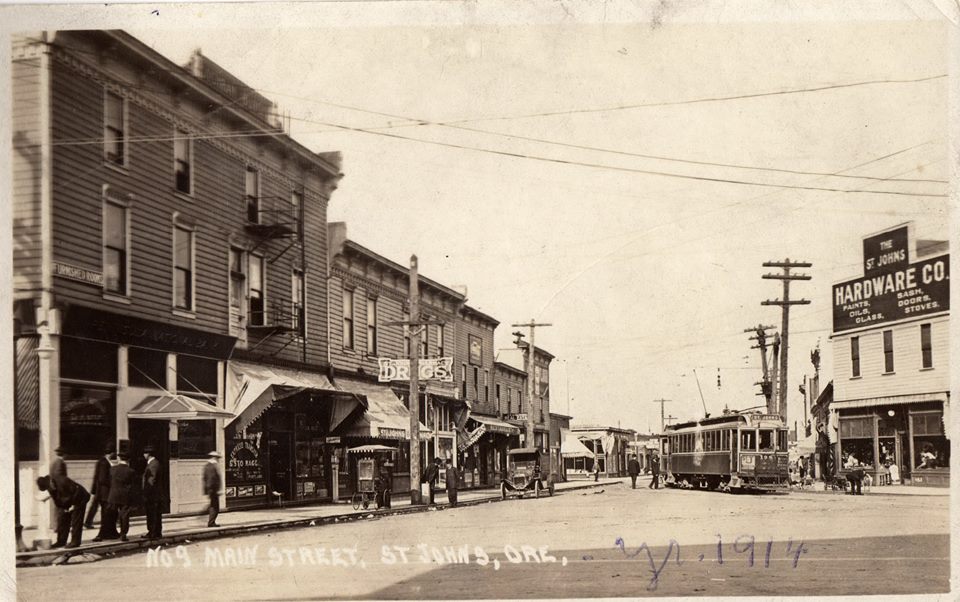 We know the year was 1914 because someone wrote that on the photo. The Central hotel is offering furnished rooms. The peanut vendor has found a prime location. You can't miss the St Johns Pharmacy sign. Is that a Ford Model T parked at the curb? Sure looks like one. If it is we know it wasn't purchased new in St Johns because the first Ford Agency wasn't established in St Johns until 1922. Across the street is the then two story St Johns Hardware Company. You could always count on the electric trolley to stop right out front.
We know the year was 1914 because someone wrote that on the photo. The Central hotel is offering furnished rooms. The peanut vendor has found a prime location. You can't miss the St Johns Pharmacy sign. Is that a Ford Model T parked at the curb? Sure looks like one. If it is we know it wasn't purchased new in St Johns because the first Ford Agency wasn't established in St Johns until 1922. Across the street is the then two story St Johns Hardware Company. You could always count on the electric trolley to stop right out front.
♦
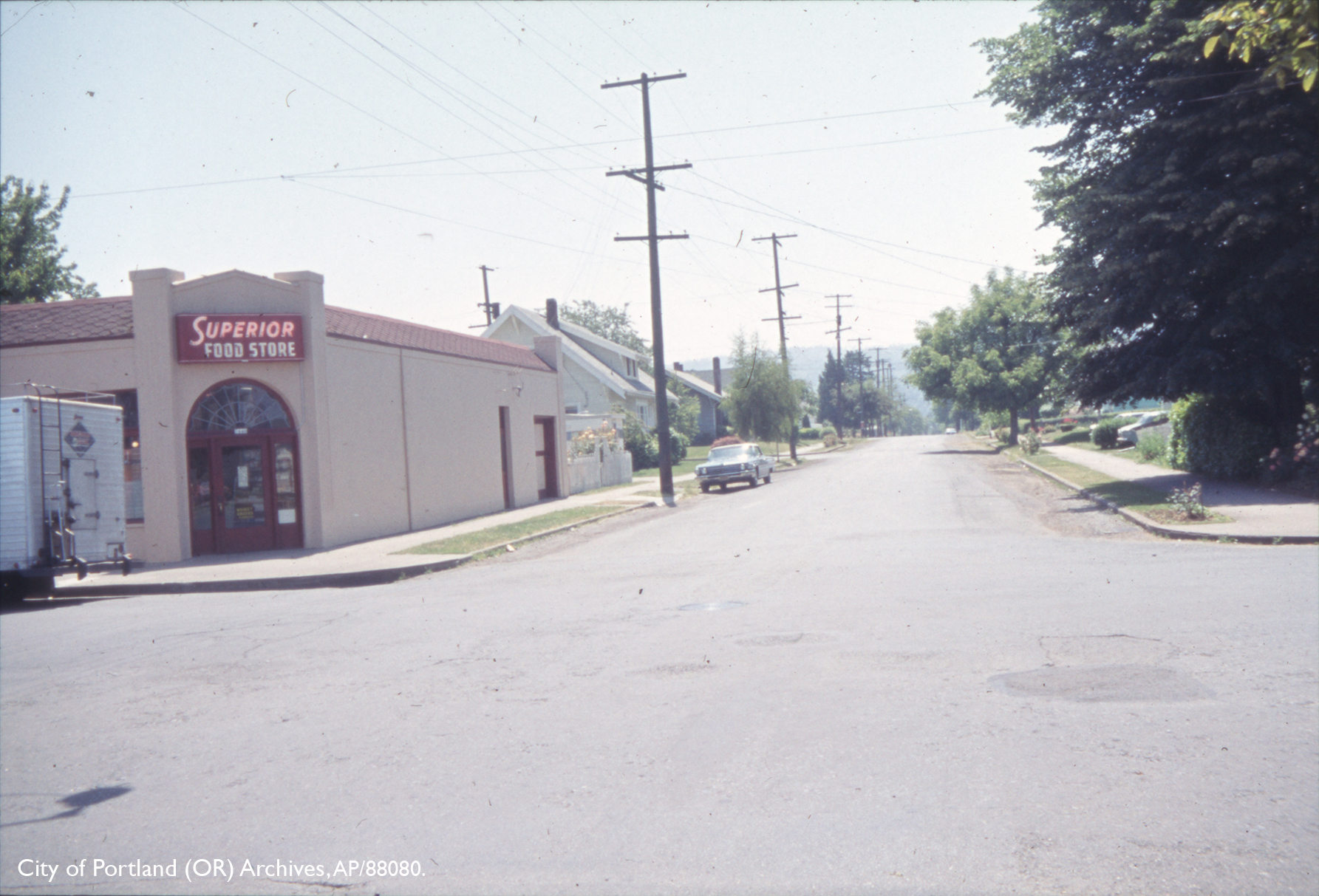
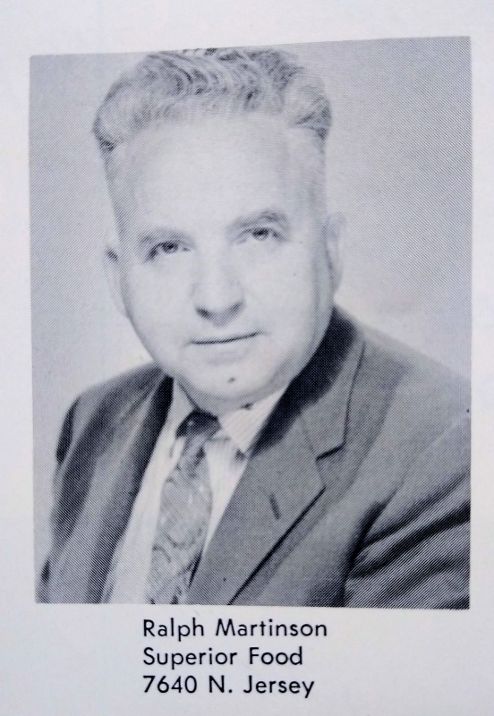 Superior Food Store in 1965 owned by Ralph Martinson at the corner of Jersey and Polk.
Superior Food Store in 1965 owned by Ralph Martinson at the corner of Jersey and Polk.
♦
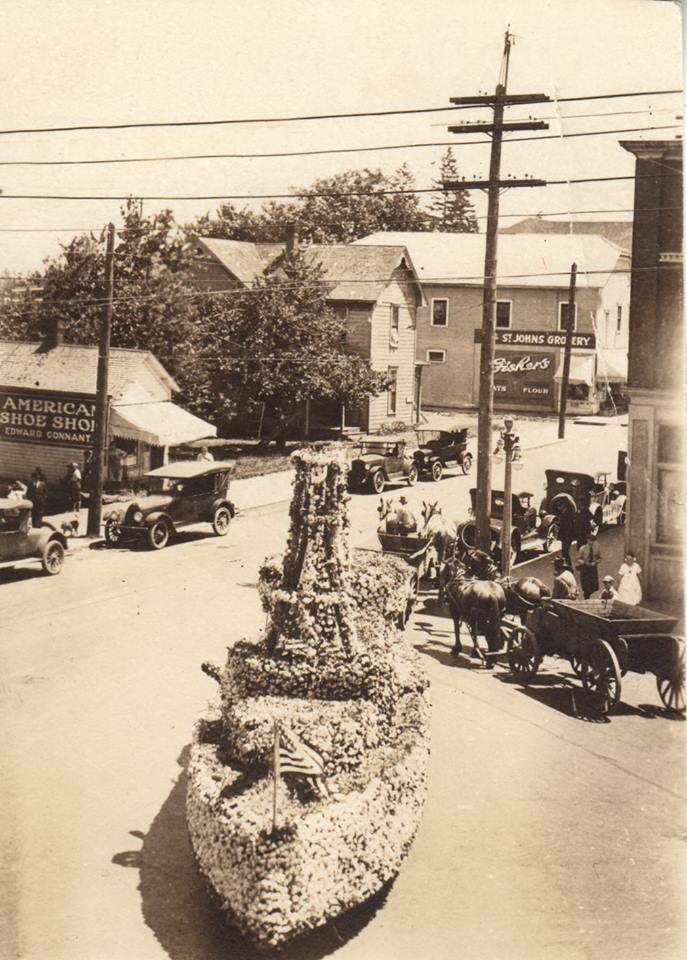 Float built by the Bachelor Club in 1922 won a blue ribbon in the Rose Festival Parade. The float is a replica of the battleship Oregon. "Grit" Lind was the architect. It was covered with roses picked from the fence of the Portland Woolen Mills. The float is turning the corner at Philadelphia and Lombard which is now the north parking lot of the US Bank. The St Johns Grocery building in the background is on the corner of Leavitt and Lombard which is now the Life Works NW. Nine years later, in 1931, the Rose Festival floats would be going around the same corner going to the dedication of the St Johns Bridge.
Float built by the Bachelor Club in 1922 won a blue ribbon in the Rose Festival Parade. The float is a replica of the battleship Oregon. "Grit" Lind was the architect. It was covered with roses picked from the fence of the Portland Woolen Mills. The float is turning the corner at Philadelphia and Lombard which is now the north parking lot of the US Bank. The St Johns Grocery building in the background is on the corner of Leavitt and Lombard which is now the Life Works NW. Nine years later, in 1931, the Rose Festival floats would be going around the same corner going to the dedication of the St Johns Bridge.
♦
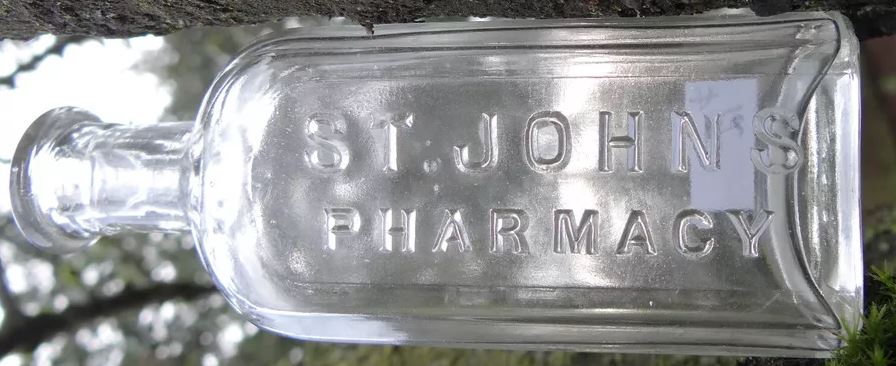
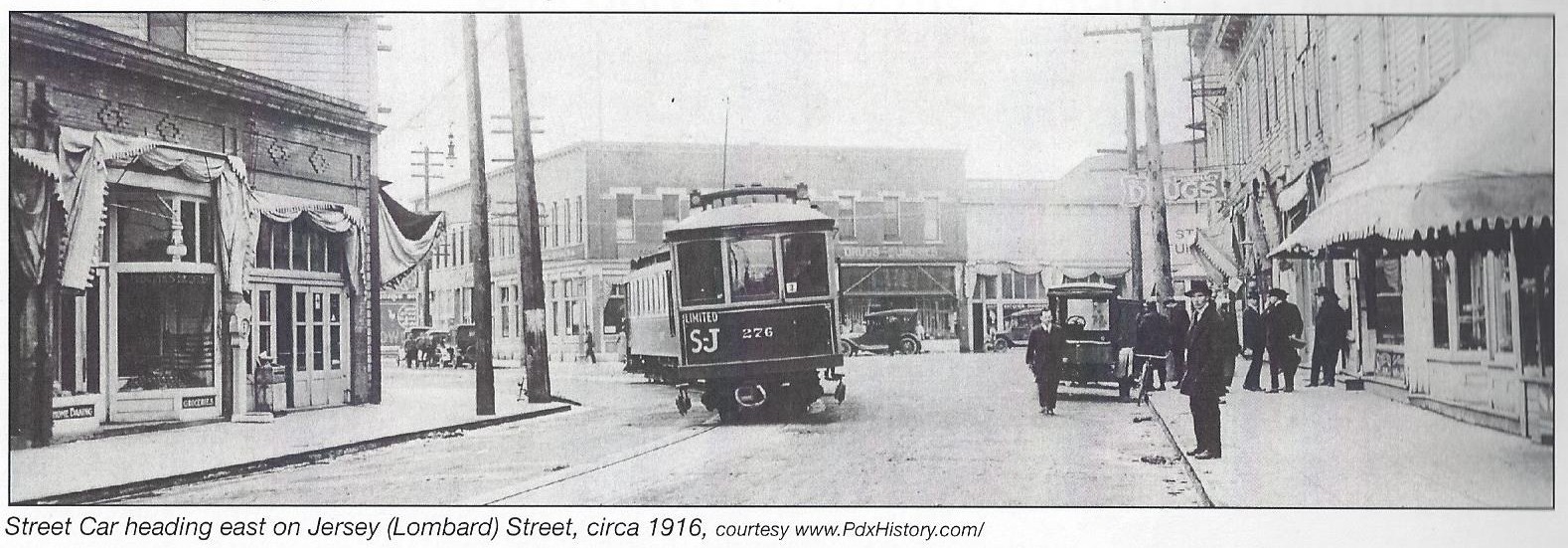 The St Johns Pharmacy was the first drug store in St Johns. It opened in May of 1905 where the Slim's building is now. Later moved across the street next to what was the Central Hotel in the Cochran Block . Photo from A Pictorial History of St. Johns.
The St Johns Pharmacy was the first drug store in St Johns. It opened in May of 1905 where the Slim's building is now. Later moved across the street next to what was the Central Hotel in the Cochran Block . Photo from A Pictorial History of St. Johns.
♦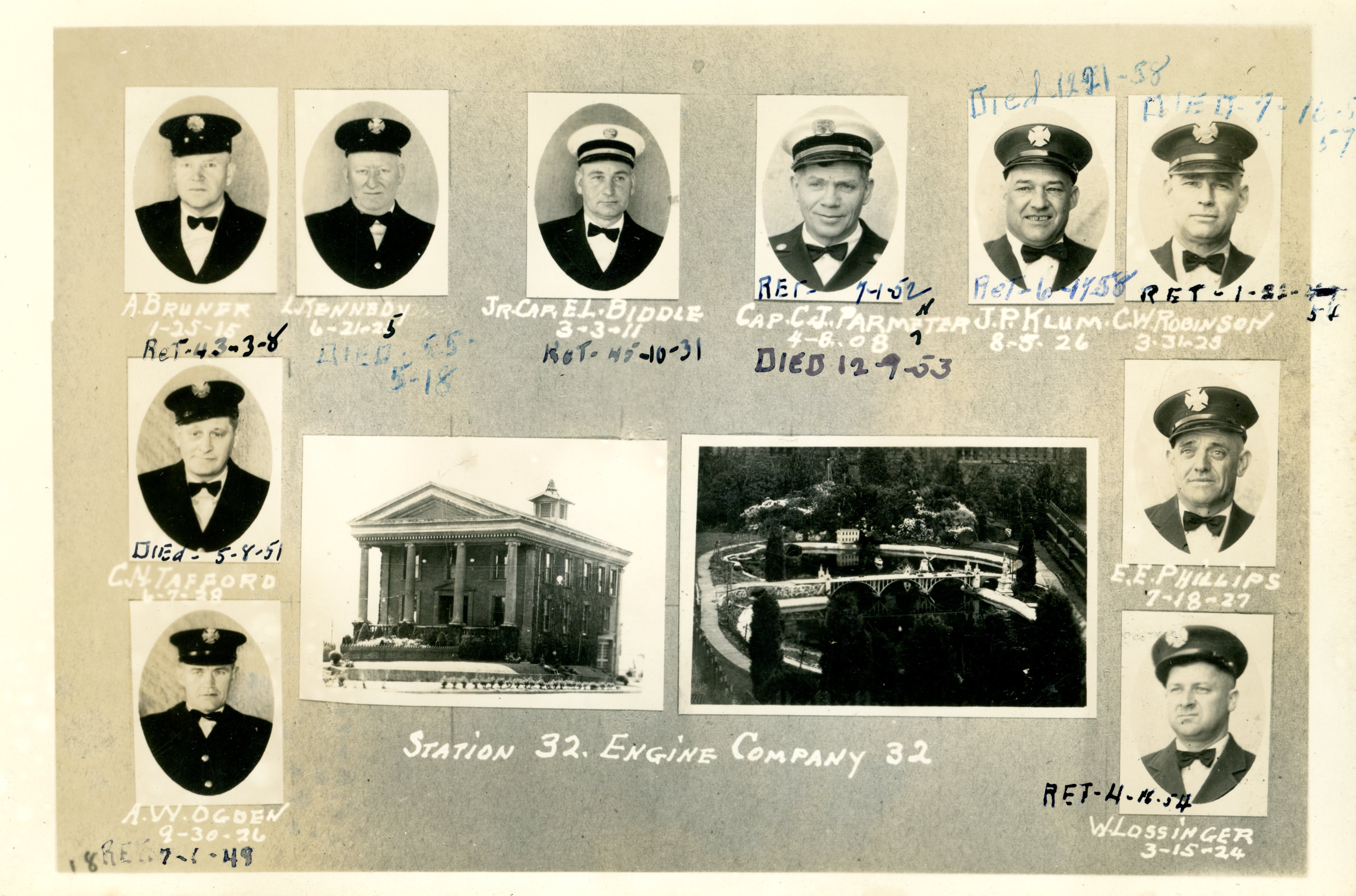
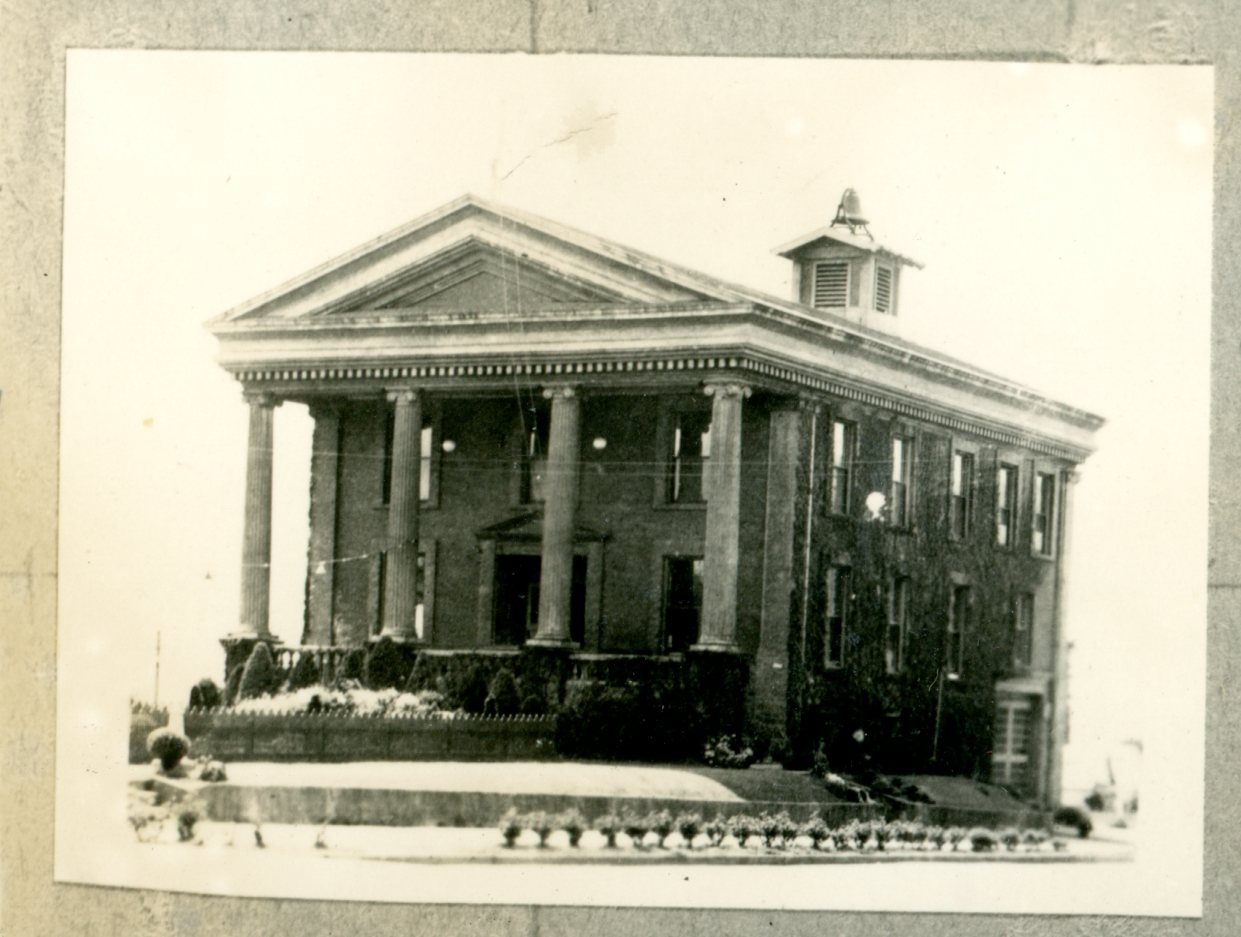
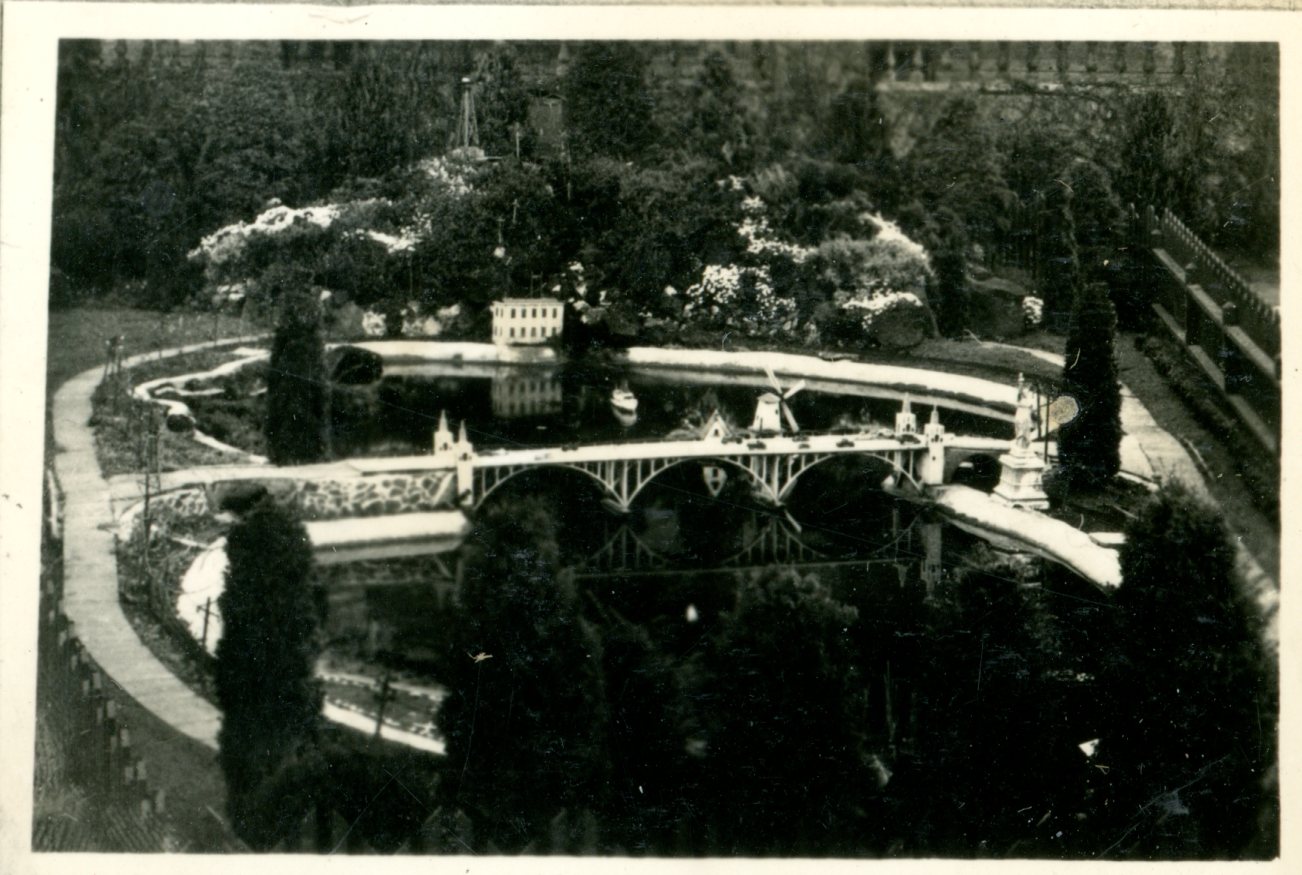 This photo collection dates to circa 1933. The Fireman's Pool first appeared on the grounds of the City Hall Building in 1932. It's purpose was to provide a amusement in miniature for the citizens of St Johns, especially it's children, to counter the fading confidence in the community brought on by the Great Depression. Improvements to the pool were made as time went on. By 1934 brook trout could be seen swimming in the pool and on Sunday's an American Flyer passenger train run around the perimeter. Three of the fireman pictured here are believed to have transitioned to the Portland Fire Bureau from the days when the City of St Johns had it's own Fire Department.
This photo collection dates to circa 1933. The Fireman's Pool first appeared on the grounds of the City Hall Building in 1932. It's purpose was to provide a amusement in miniature for the citizens of St Johns, especially it's children, to counter the fading confidence in the community brought on by the Great Depression. Improvements to the pool were made as time went on. By 1934 brook trout could be seen swimming in the pool and on Sunday's an American Flyer passenger train run around the perimeter. Three of the fireman pictured here are believed to have transitioned to the Portland Fire Bureau from the days when the City of St Johns had it's own Fire Department.
♦
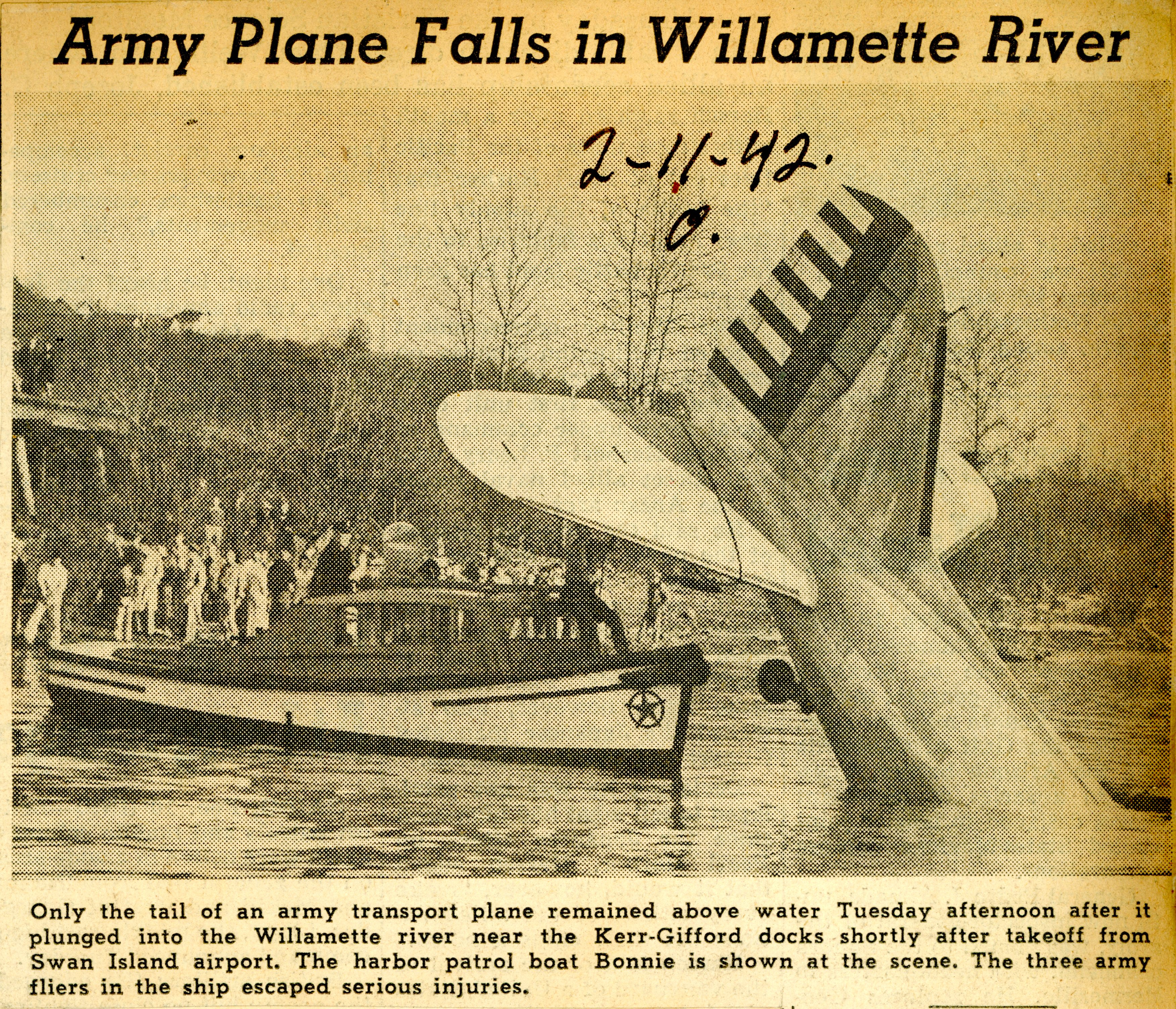
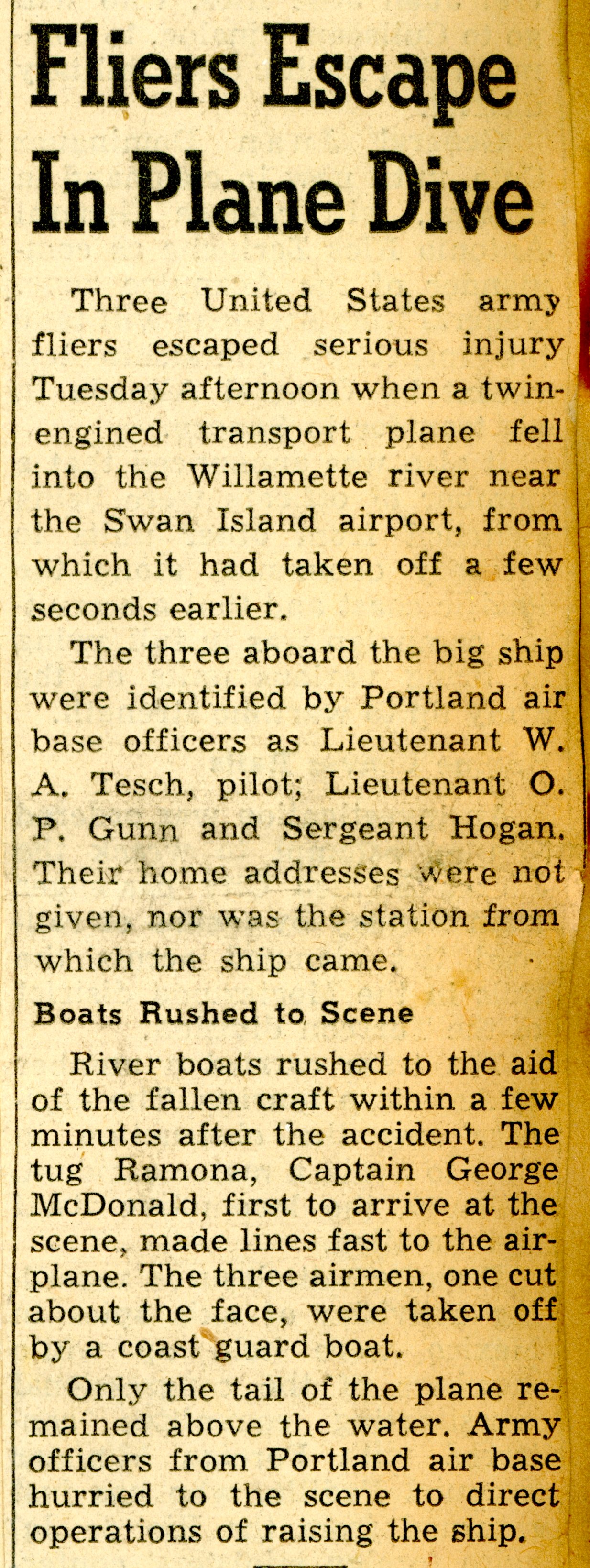 Newspaper clippings from the 2/11/42 Oregonian. From Wikipedia: The Swan Island Municipal Airport was a joint civil-military airport that was operational on Swan Island in Portland, Oregon. Though it officially opened in 1927, the United States Postal Service had been using the airfield for a year. After the Portland–Columbia Super Airport was completed in the late 1930s, Swan Island Municipal Airport had little use since its runways were too small for newer aircraft and the low altitude made takeoffs and landings difficult. The airport was operational for nearly two decades, but due in part to the advances in aviation, it became obsolete soon after its construction. During World War II, a Kaiser shipyard was located at Swan Island. The shipbuilding facilities were acquired by the Port of Portland after the war.
Newspaper clippings from the 2/11/42 Oregonian. From Wikipedia: The Swan Island Municipal Airport was a joint civil-military airport that was operational on Swan Island in Portland, Oregon. Though it officially opened in 1927, the United States Postal Service had been using the airfield for a year. After the Portland–Columbia Super Airport was completed in the late 1930s, Swan Island Municipal Airport had little use since its runways were too small for newer aircraft and the low altitude made takeoffs and landings difficult. The airport was operational for nearly two decades, but due in part to the advances in aviation, it became obsolete soon after its construction. During World War II, a Kaiser shipyard was located at Swan Island. The shipbuilding facilities were acquired by the Port of Portland after the war.
♦
In August of 1909 H.F. Clark buys the confectionary store from G W Simmons. On the left you can see G W Simmons store, Mrs Pemberton's restaurant is on the right. H.F. Clark's first furniture store was next to the restaurant. Once he acquired the restaurant space, which had been in part of the building he was already occupying, there were entrances to his store on both Jersey (Lombard) and Tacoma (Alta) streets. Why he bought the G W Simmons property is a mystery. Perhaps he bought it as an investment, or perhaps he intended it to be used for storage.
♦
Photo taken at the1905 Lewis and Clark Exposition. Open electric streetcar driven by Ira Basey a relative of the Byars family of St Johns on ground. This was a special streetcar line constructed just for the fair. The exposition was officially open a total of 137 days from June 1, 1905 to Oct. 15, 1905. The total attendance was 2,554,848.
Let it snow... let it snow... let it snow.... Not a fit day out for man nor Buick. Good day to leave your automobile at home and bring out the horse and buggy. Off to your left you see today the US Bank and the south parking lot. The building on the right was the old Couch and Co building, today the Marvel complex. Life was simpler then. Notice the nice view of the west hills without that green bridge getting in the way.
♦
Late Forties or very early Fifties. Photo taken in front of the B & C department store on Lombard between Leavitt and John. Stores to the right of the Safeway are the Swanson Market and the Super Food Mart.
♦
 May,1979 - St Johns Parade Carnival from a St Johns Review article
May,1979 - St Johns Parade Carnival from a St Johns Review article
♦
May 1963 photo from Robin Smith. The group is performing during a talent show held in the north parking lot of the US Bank. There were two talent shows that year, one held May 11th and the other held on May 18th. This all led up to the parade which was on May 25th. Rexall Drugs and the Cornet store in the background.
♦
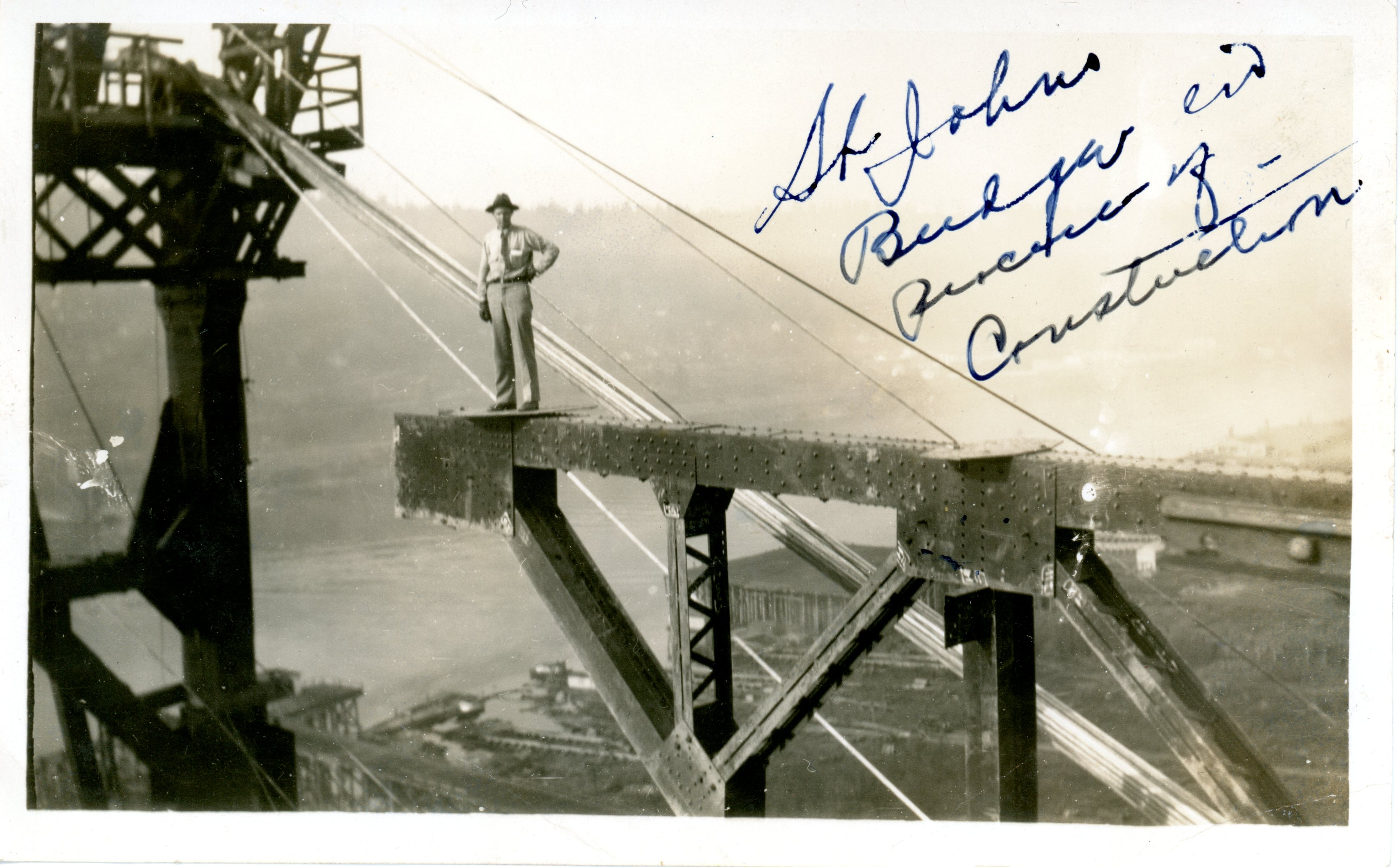
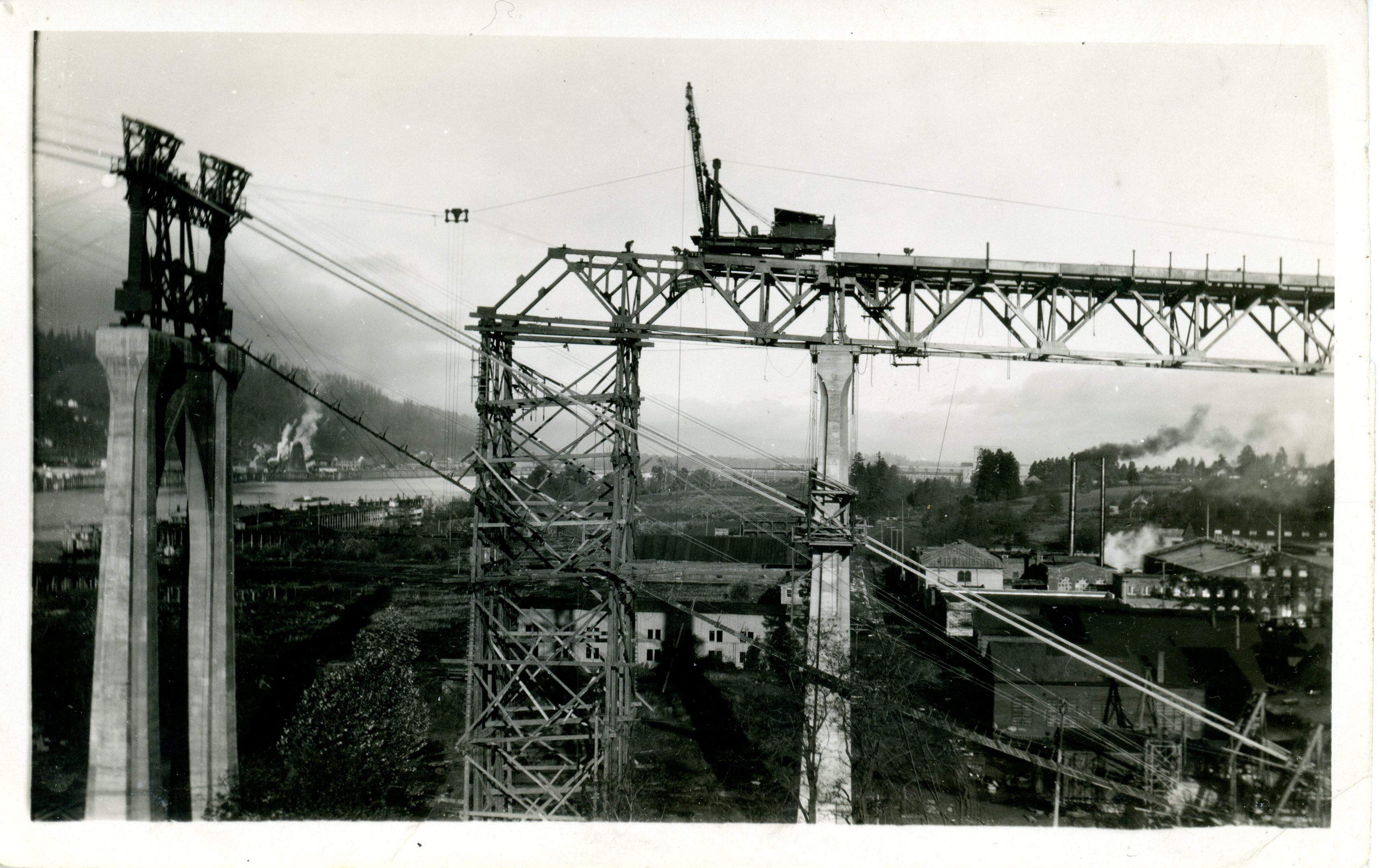
 Photo's of the St Johns Bridge during it's construction. Photo labeled "East Approach" was made into a postcard.
Photo's of the St Johns Bridge during it's construction. Photo labeled "East Approach" was made into a postcard.
♦
This was probably Gil Parton's favorite aerial photo of St Johns. If you can see the blue circled buildings (good luck!), the first on the left is the old James John High School at Philadelphia and Syracuse, the second is the old St Johns City Hall at Burlington and Syracuse, the third is the old Central school which was in the present playground of the James John School at Lombard and Charleston and the fourth is the old French Block a group of business places on Lombard and Oswego. We're going to guess the date taken was in the mid to late 20's.
♦
Warren Messick and Merrill Gonterman pose with the Shirlee-Ann emergency vehicle at Fire Station 22 in St Johns, 1960.
This 1955 Chevrolet Bel Air 4-Door Station Wagon known in our community as the "Shirlee Ann" was named in honor of 11 month old Shirlee Ann Howell who died on January 2, 1955. Placed in service January 1956 the original Shirlee Ann rescue vehicle, and those that followed, provided unique support to our community for 47 years. In 2002, staffing changes and budget concerns forced the retirement of a dedicated first aid response vehicle at Fire Station No. 22.
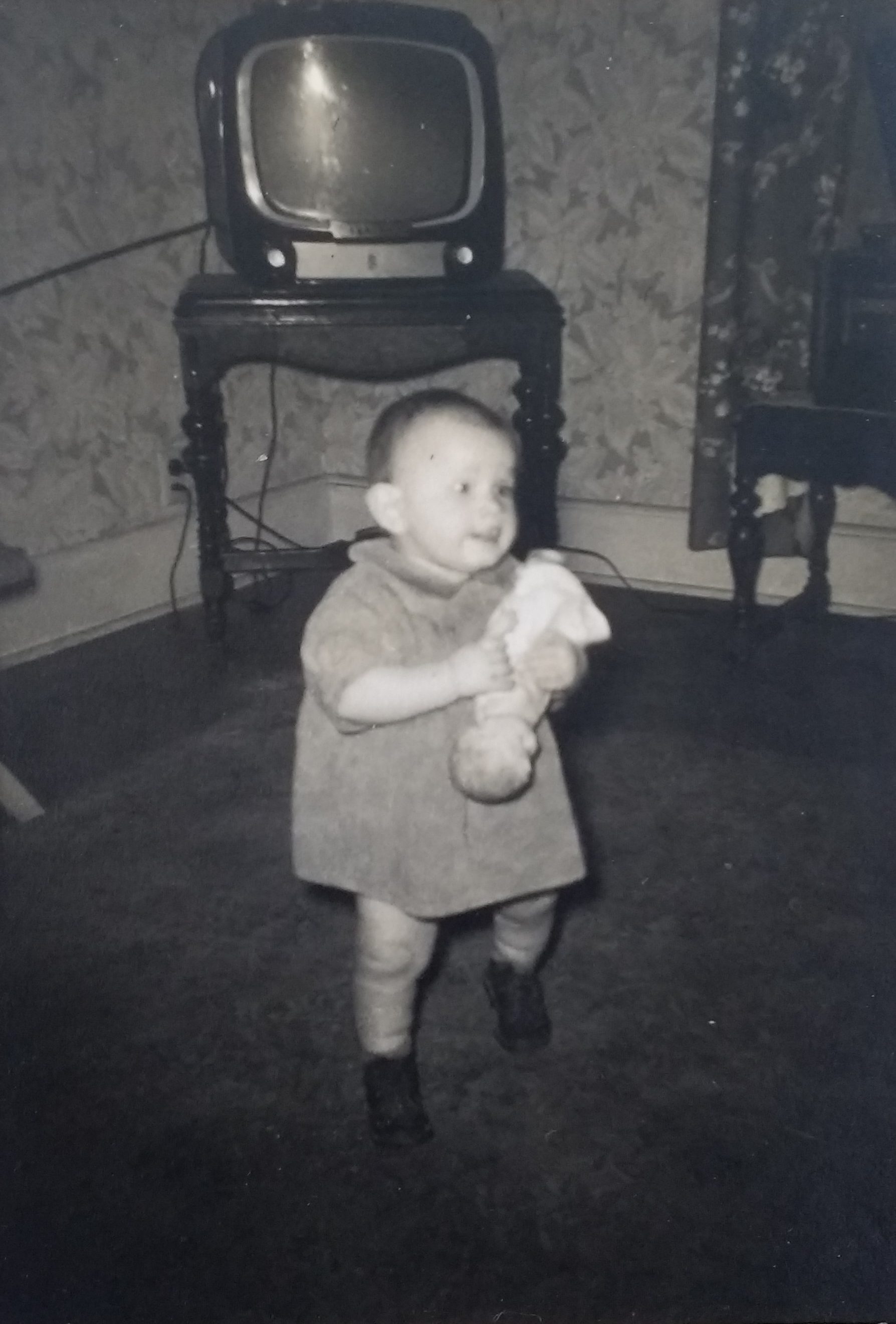
Shirlee Ann Howell
On January 2, 1955, six days before her first birthday, a little girl named Shirlee Ann Howell choked to death on a grape. Her parents, Mr. and Mrs. Harold Howell, had returned from the grocery store then Mrs. Howell left the room to feed the family dog. During her brief absence Shirlee Ann put a Tokay grape in her mouth and it lodged in her throat. The panicky parents tried desperately to aid her but to no avail so they hurried her to the St. Johns police station for help. The police immediately summoned the firemen, now located in their new building a block away, but they too were helpless without a inhalator-respirator. Quickly they placed Shirlee Ann into a police car and raced to Emanuel Hospital. Sadly Shirlee Ann was pronounced dead on arrival. At the time the nearest resuscitator was located downtown, at Engine No. 1. The firemen felt the child's life might have been saved with this inhalator-respirator had it not been located so far away.
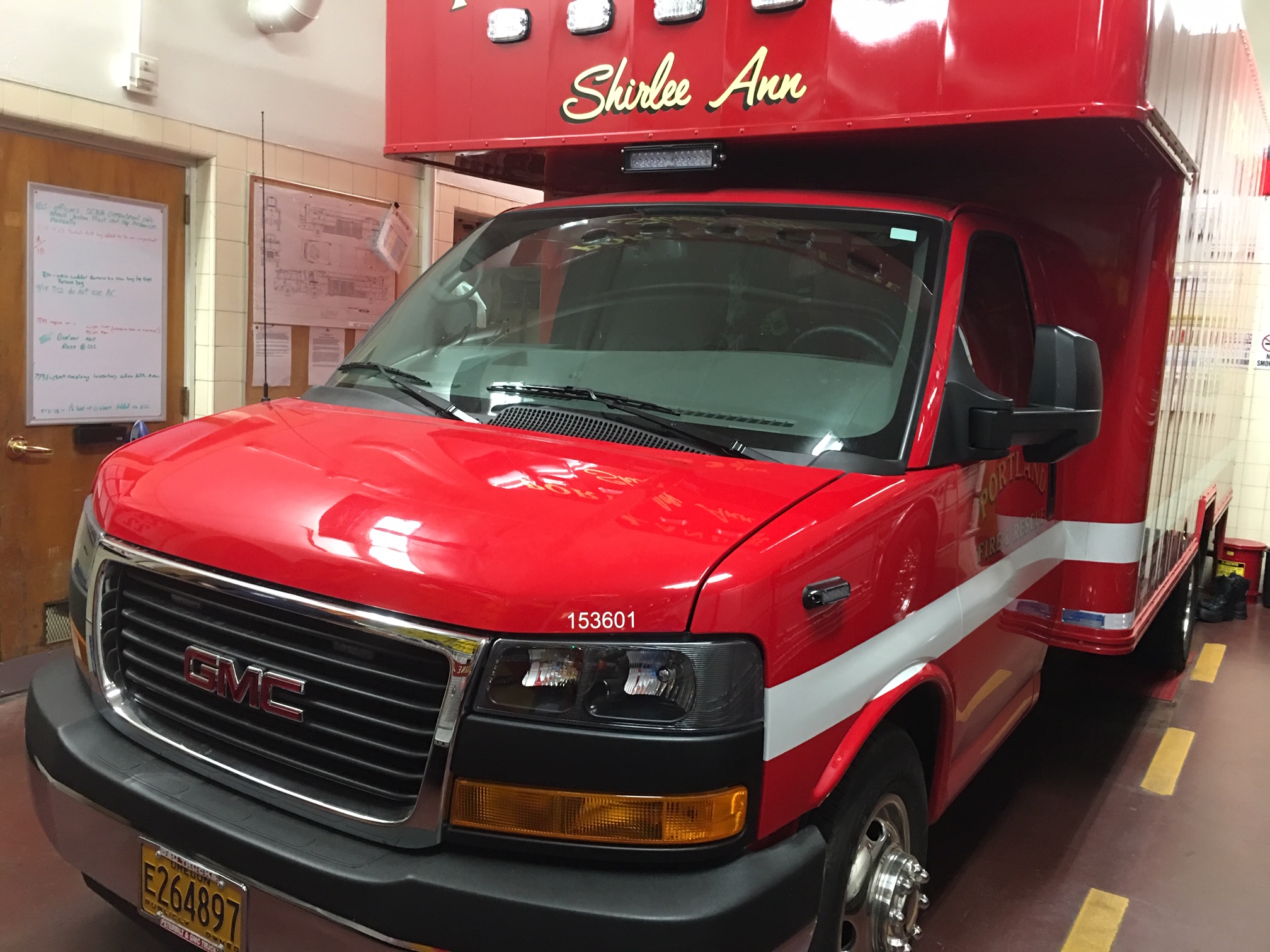
Over the years there have been many Portland Fire Department vehicles named "Shirlee Ann" assigned to Fire Station 22. Pictured here is their 2016 GMC Savana.
To learn more about the Shirlee Ann story open this link - https://www.portlandfirehistory.com/_files/ugd/f25978_3e937e1f501d4cfd9b258fef9b2a1b16.pdf?index=true
♦
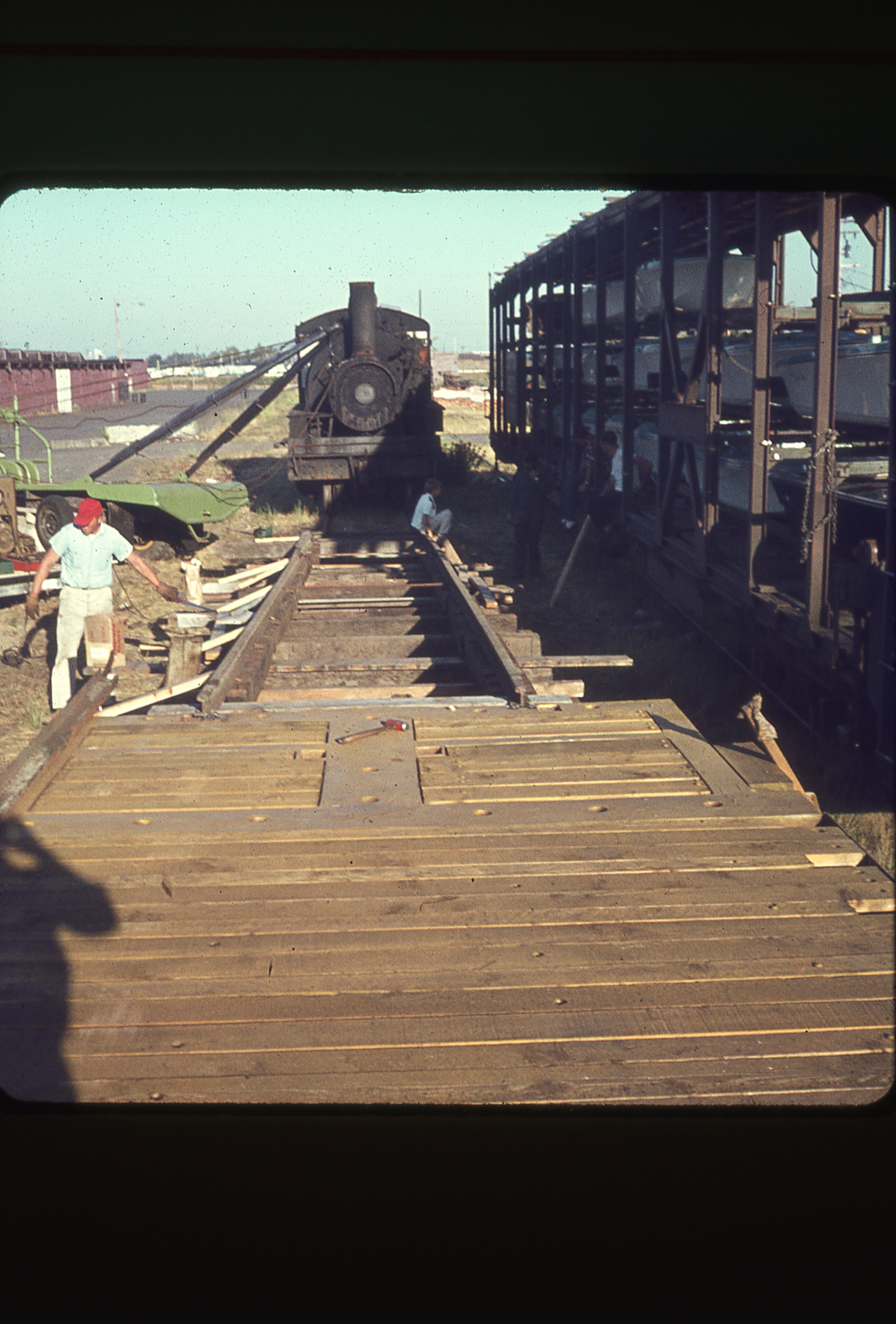
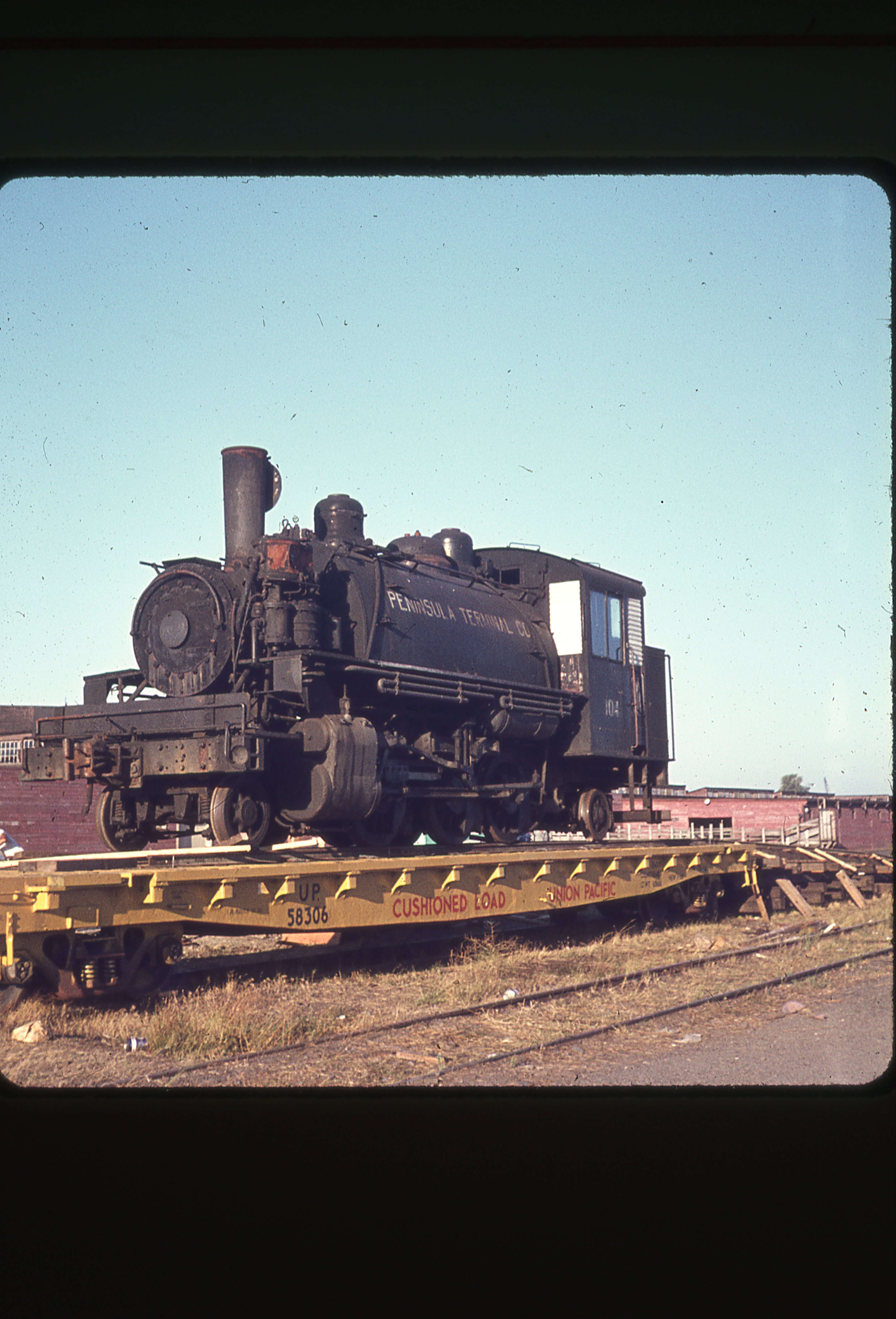
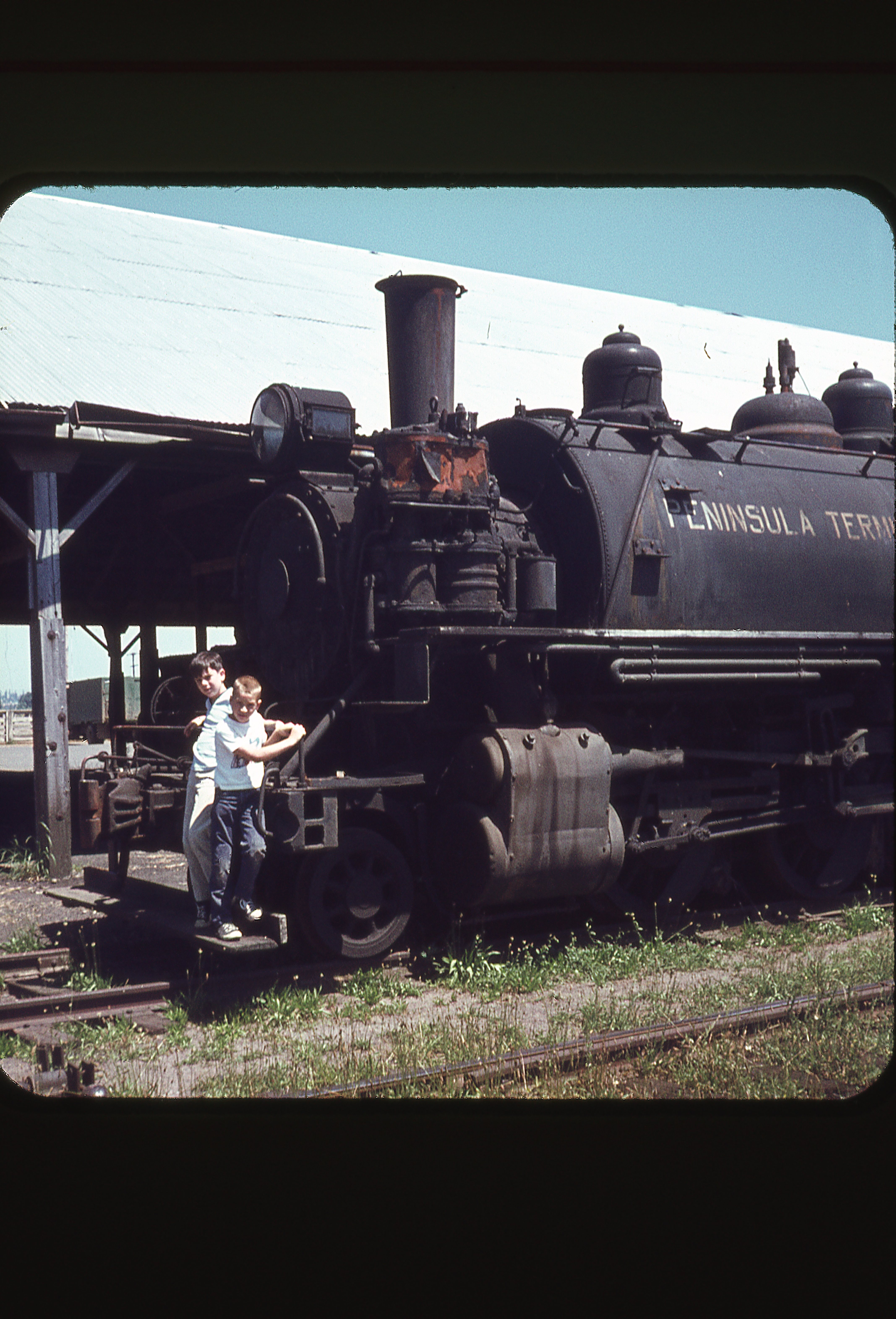
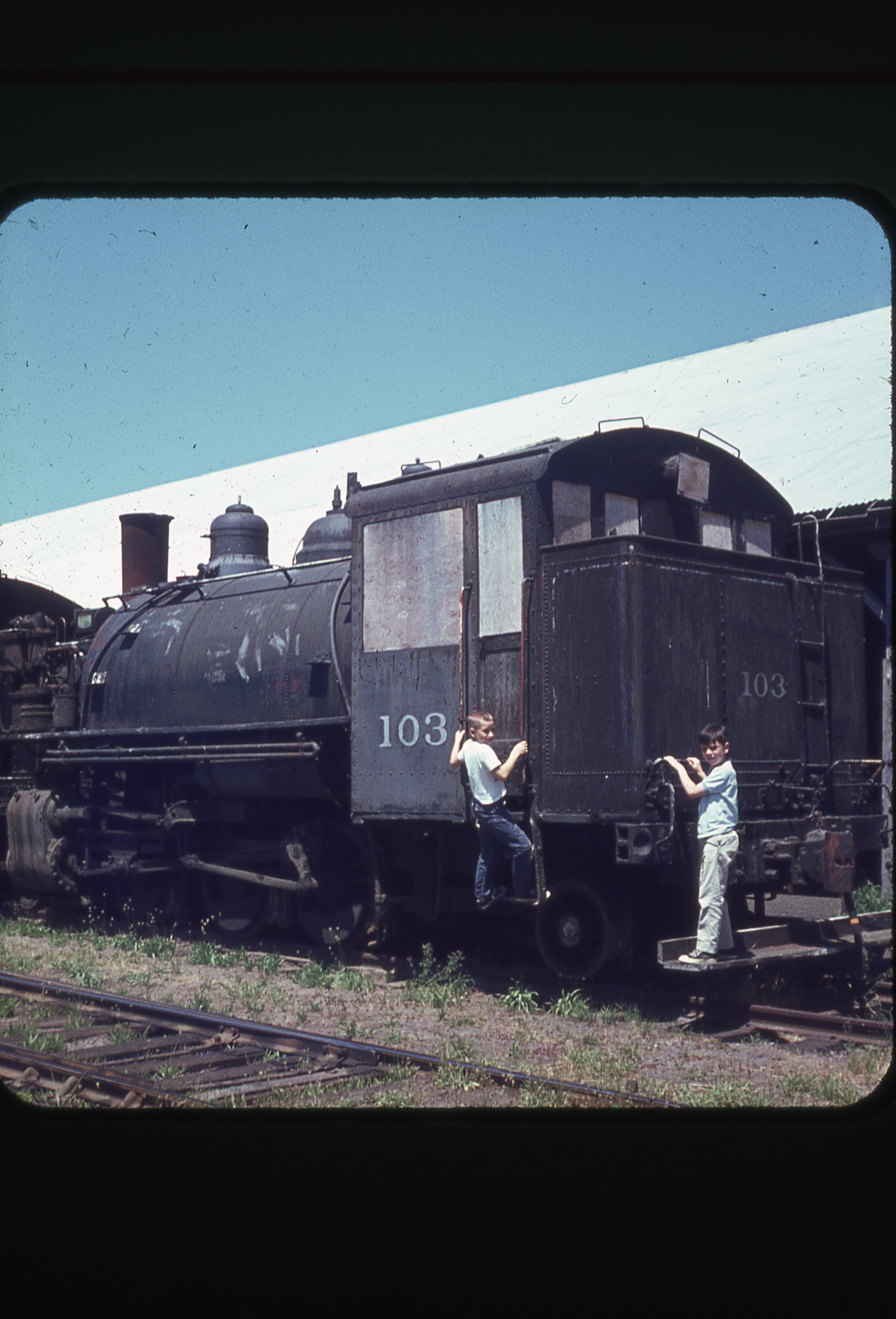 While steam motive power disappeared from most all major cities by the mid-1950's there were still a few steam locomotives that soldiered on in a few cities even into the 1960's, if you knew where to look. One of those isolated pockets of steam power hanging on despite all odds was in North Portland, Oregon.
While steam motive power disappeared from most all major cities by the mid-1950's there were still a few steam locomotives that soldiered on in a few cities even into the 1960's, if you knew where to look. One of those isolated pockets of steam power hanging on despite all odds was in North Portland, Oregon.
♦
Gatton family moving day in St Johns circa 1911, with James Ross Gatton driving the wagon. Don Nelson used this photograph in his book "A Pictorial History of St Johns". Photo credited to Dale Burger.
♦
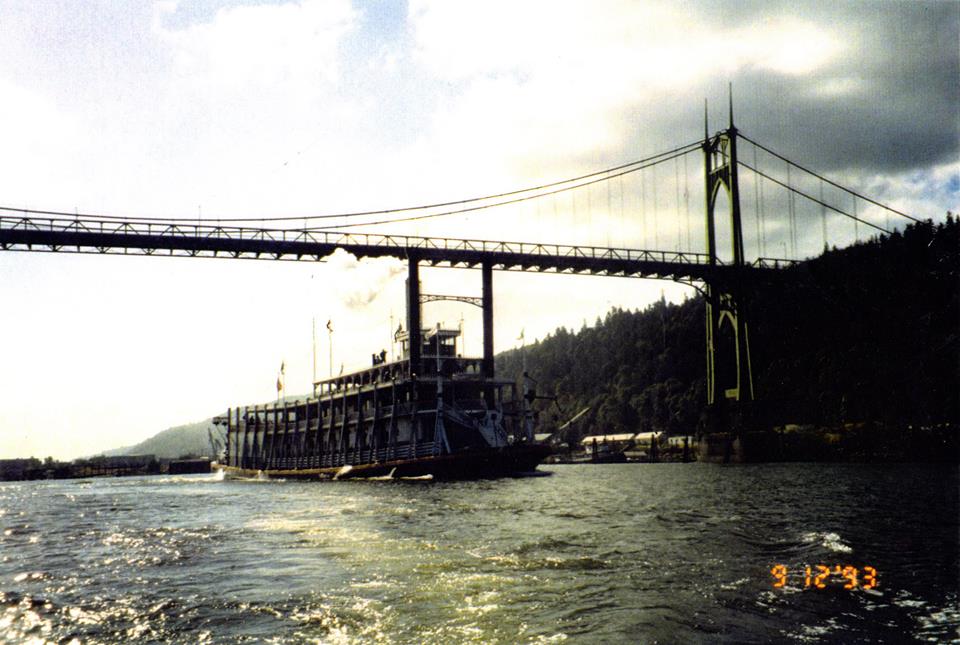 Sternwheeler "Laura Belle" going under the St Johns bridge in 1993. The Laura Belle was featured in the movie "Maverick", which was released in 1994. Laura Belle was actually the Portland, the last steam-powered sternwheel tugboat in the United States built by Northwest Marine Iron Works in 1947 for the Port of Portland.
Sternwheeler "Laura Belle" going under the St Johns bridge in 1993. The Laura Belle was featured in the movie "Maverick", which was released in 1994. Laura Belle was actually the Portland, the last steam-powered sternwheel tugboat in the United States built by Northwest Marine Iron Works in 1947 for the Port of Portland.

The Portland is listed on the National Register of Historic Places, and presently hosts the Oregon Maritime Museum which owns the vessel. Since 1994 the Portland has been moored at the Willamette River seawall next to Tom McCall Waterfront Park in downtown Portland.
♦
 Central School, later renamed Williams School, was located where the paved playground bordering Lombard St is now for James John Grade School. The school burned down just before the construction of James John Grade School was complete. Central School was first constructed in 1894, the last addition of a manual training room was completed in 1906.
Central School, later renamed Williams School, was located where the paved playground bordering Lombard St is now for James John Grade School. The school burned down just before the construction of James John Grade School was complete. Central School was first constructed in 1894, the last addition of a manual training room was completed in 1906.
♦
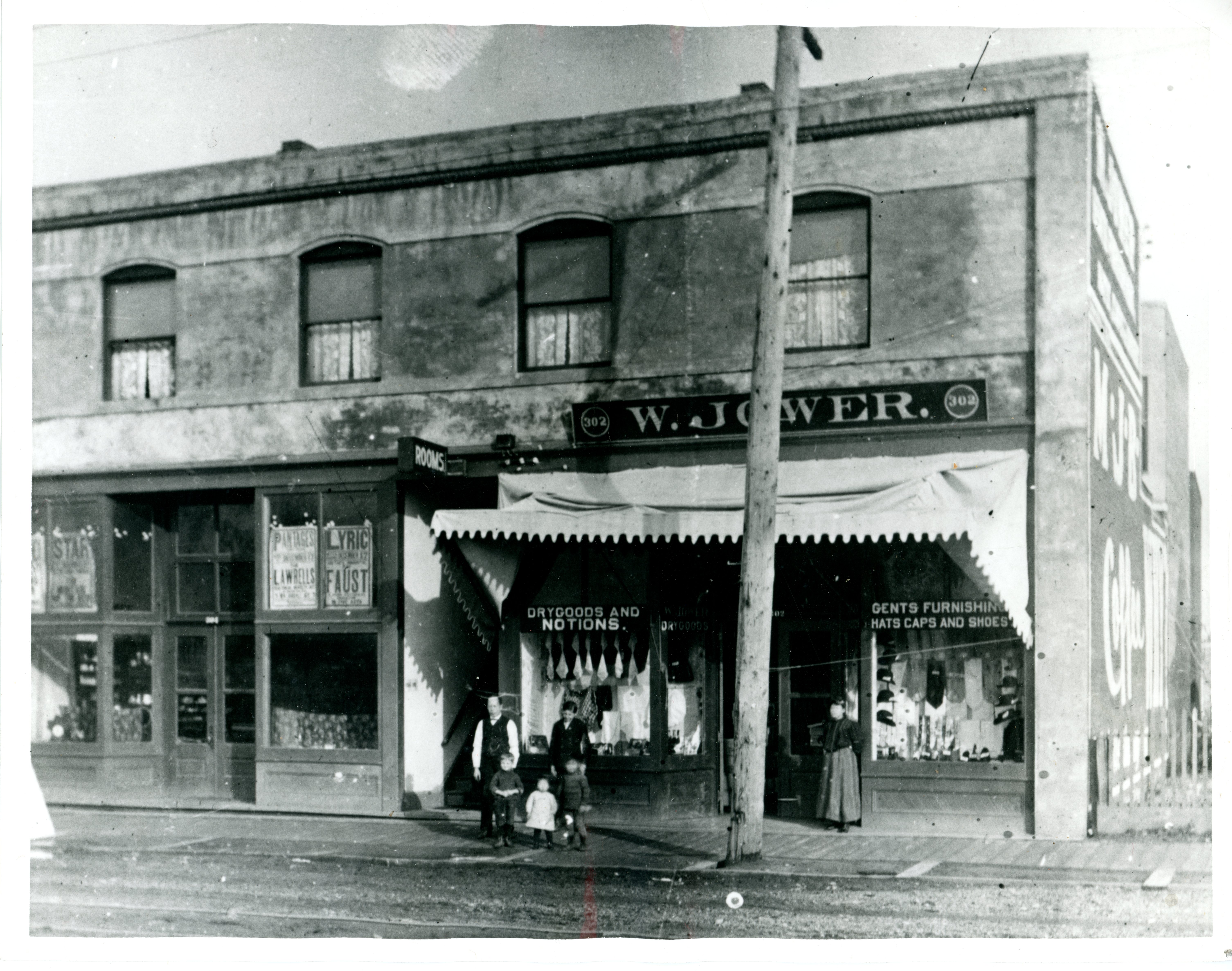 Photo of Wan and Violet Jower (by the door). Possibly Henry and Joe Jower. Unknown who the adult woman and small child were. Sidewalk in front of store appears to be wooden. Jower family photo. Don Nelson used this same photograph in his book St. JOHNS AND THE NORTH PORTLAND PENINSULA. Don noted the store was built in 1906 and the photo was believed to have been taken circa 1910. Marilyn Jower Korenaga, granddaughter of Wan, continued operating the family business until its 100th anniversary at which time she felt it was the right time to close the store.
Photo of Wan and Violet Jower (by the door). Possibly Henry and Joe Jower. Unknown who the adult woman and small child were. Sidewalk in front of store appears to be wooden. Jower family photo. Don Nelson used this same photograph in his book St. JOHNS AND THE NORTH PORTLAND PENINSULA. Don noted the store was built in 1906 and the photo was believed to have been taken circa 1910. Marilyn Jower Korenaga, granddaughter of Wan, continued operating the family business until its 100th anniversary at which time she felt it was the right time to close the store.
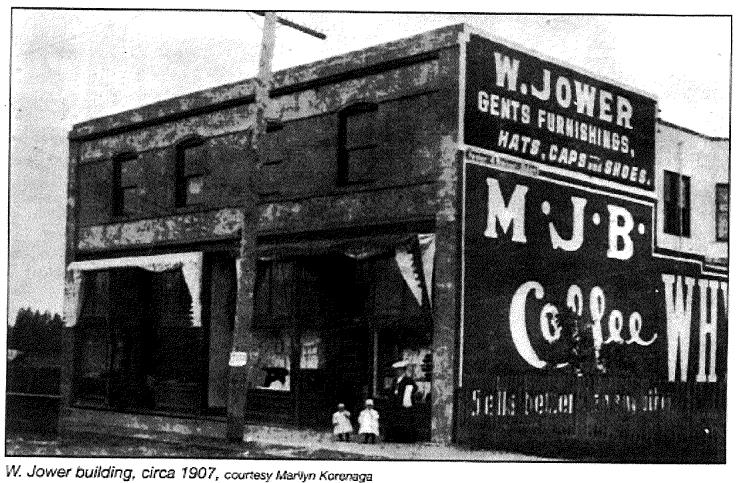

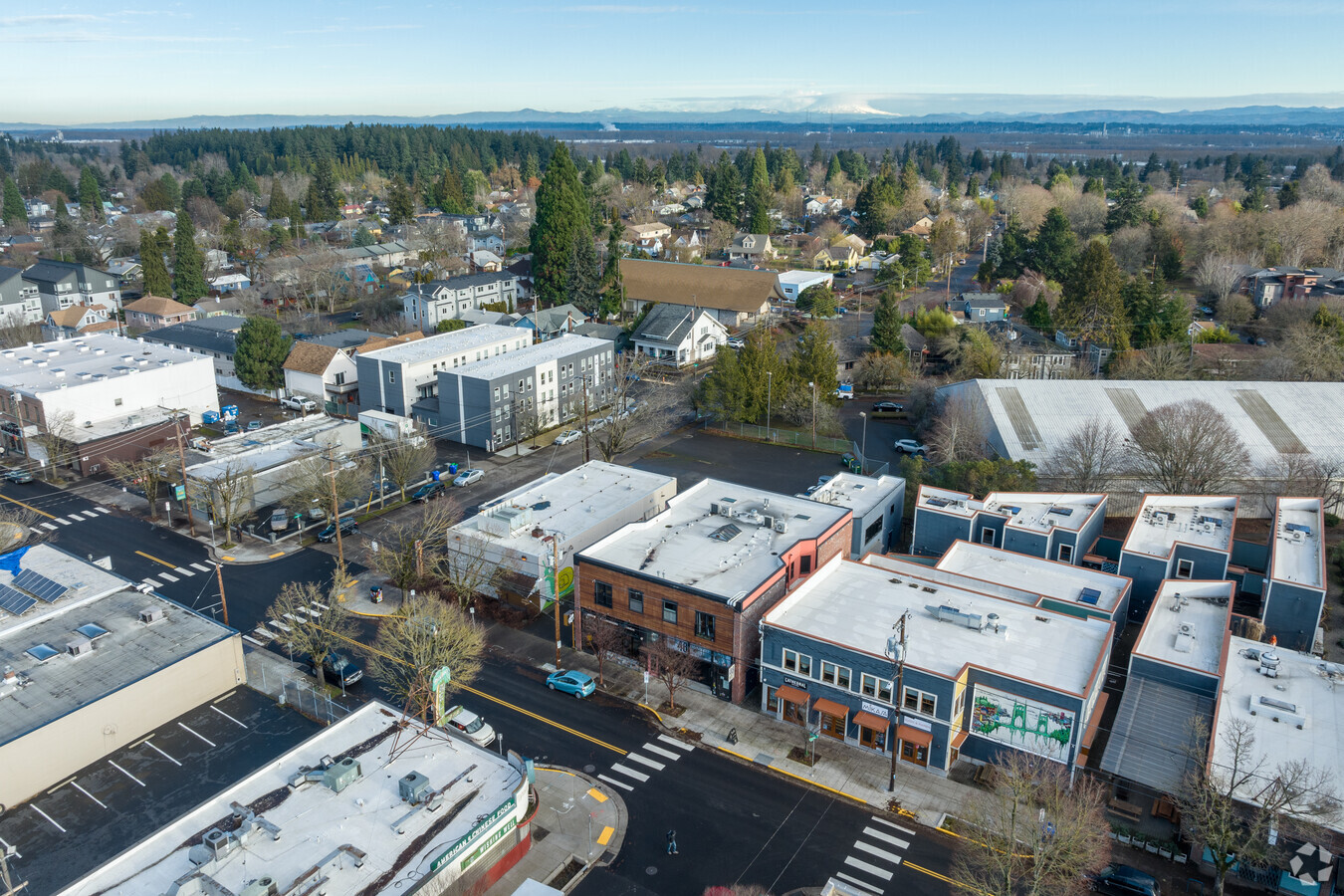 The Jower's Building as it appears today
The Jower's Building as it appears today
♦
 In early St Johns, before speed bumps were as popular as they are today, road crews went to great lengths to make our dirt streets as smooth as possible. Unknown location, unknown date. A larger version can be found here - http://www.stjohnsheritage.org/.../Horse-Teams-used-for...
In early St Johns, before speed bumps were as popular as they are today, road crews went to great lengths to make our dirt streets as smooth as possible. Unknown location, unknown date. A larger version can be found here - http://www.stjohnsheritage.org/.../Horse-Teams-used-for...
♦ 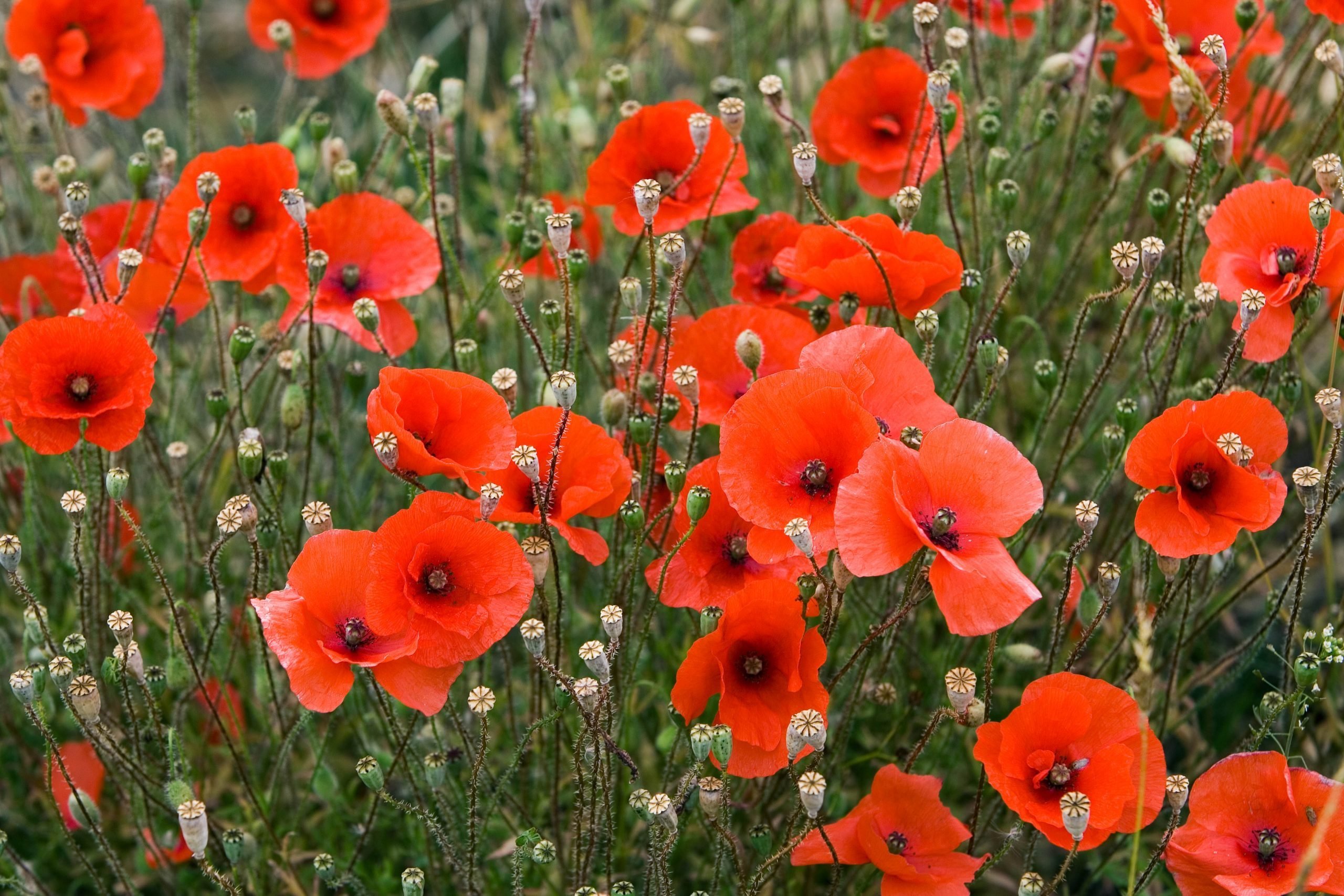
♦
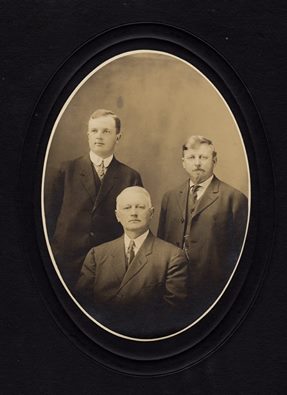 Here is the man that helped fund Autzen stadium. He is Thomas J. Autzen a St Johns business man. He went to what is now Oregon State University but had the stadium named for his eldest son who had gone to the University of Oregon. Thomas J Autzen is in the front with his son Thomas E Autzen in back to his left. Thomas J. was involved with Portland Manufacturing Co., known for its plywood manufacturing innovations.
Here is the man that helped fund Autzen stadium. He is Thomas J. Autzen a St Johns business man. He went to what is now Oregon State University but had the stadium named for his eldest son who had gone to the University of Oregon. Thomas J Autzen is in the front with his son Thomas E Autzen in back to his left. Thomas J. was involved with Portland Manufacturing Co., known for its plywood manufacturing innovations.
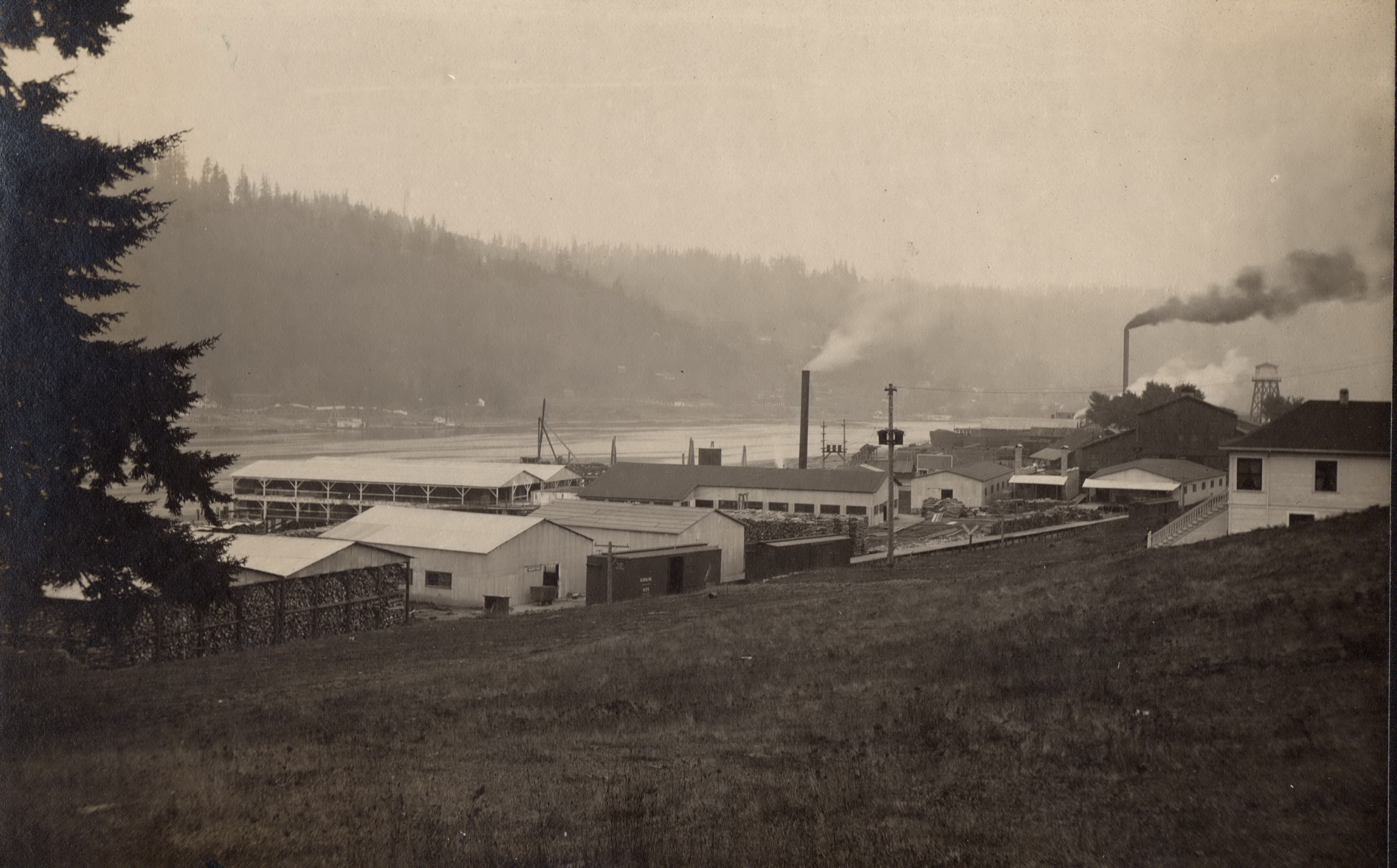 Portland Manufacturing Co after being rebuilt from 1910 fire. Thomas Autzen Photo
Portland Manufacturing Co after being rebuilt from 1910 fire. Thomas Autzen Photo
♦
 This city of Portland photo was taken in 1932. This building was located at the corner of N. Leavitt Avenue and N. Ivanhoe Street. Note that Letson's Garage can be seen on the left and on the right is the New St Johns Hotel. A larger view can be found here - https://vintageportland.wordpress.com/.../unidentifie.../...
This city of Portland photo was taken in 1932. This building was located at the corner of N. Leavitt Avenue and N. Ivanhoe Street. Note that Letson's Garage can be seen on the left and on the right is the New St Johns Hotel. A larger view can be found here - https://vintageportland.wordpress.com/.../unidentifie.../...
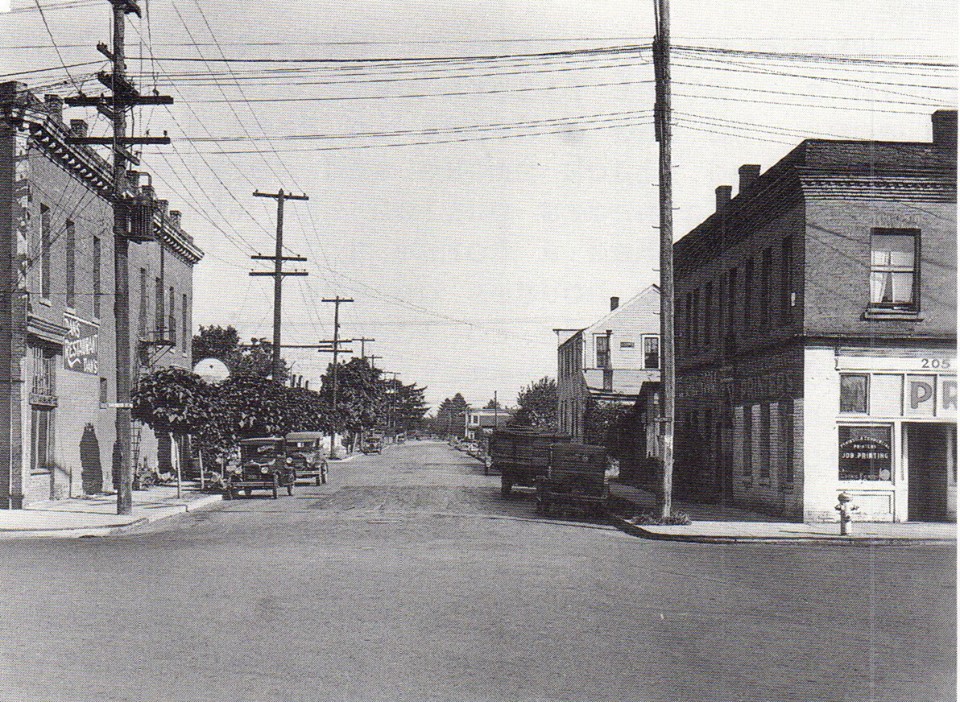 The back and side of the building can be seen from this view. Second building on the right.
The back and side of the building can be seen from this view. Second building on the right.
♦
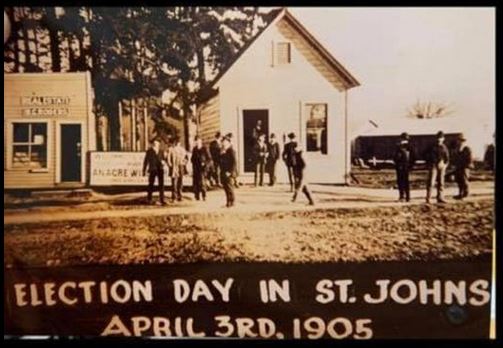 Adult males turning out to vote in 1905. It would be another 7 years before women were allowed to join them. "Oregon has the distinction of placing the question of votes for women on the ballot six times—in 1884, 1900, 1906, 1908, 1910, and 1912—more than any other state." - Oregon Encyclopedia (Oregon Historical Society)
Adult males turning out to vote in 1905. It would be another 7 years before women were allowed to join them. "Oregon has the distinction of placing the question of votes for women on the ballot six times—in 1884, 1900, 1906, 1908, 1910, and 1912—more than any other state." - Oregon Encyclopedia (Oregon Historical Society)
♦
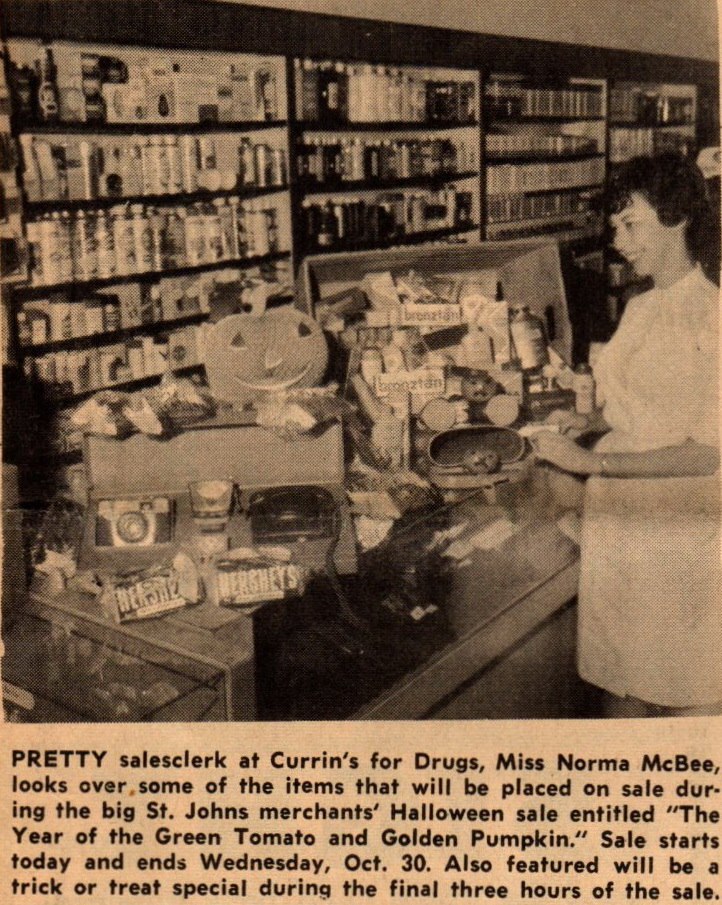 Interior of Currin's for Drugs 8438 N Lombard during the St Johns Merchants' Halloween Sale October 1963.
Interior of Currin's for Drugs 8438 N Lombard during the St Johns Merchants' Halloween Sale October 1963.
♦
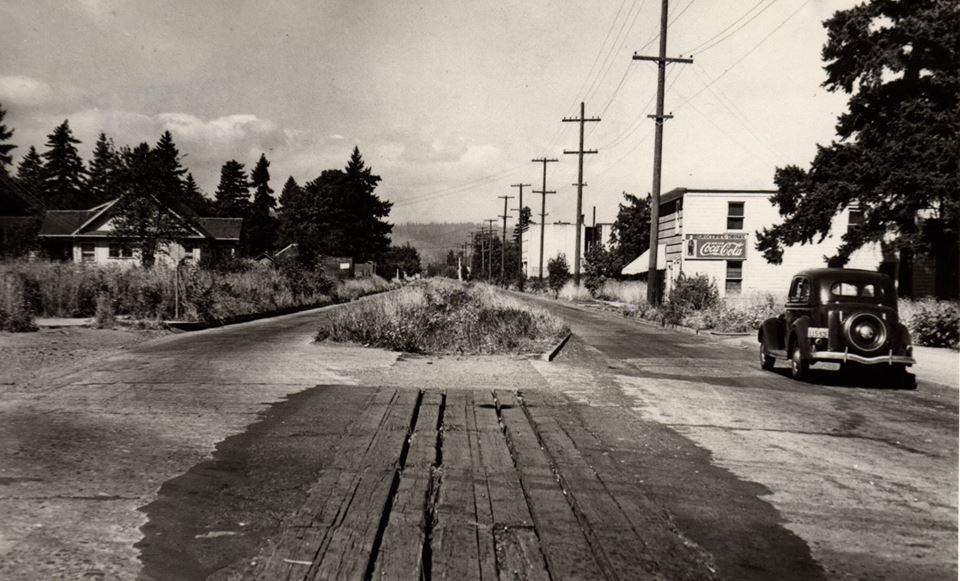 August 19, 1938. Looking N W on Fessenden from Six Point. Cassidy Grocery on right, next is bank building. Abandoned streetcar tracks in center of road.
August 19, 1938. Looking N W on Fessenden from Six Point. Cassidy Grocery on right, next is bank building. Abandoned streetcar tracks in center of road.
♦
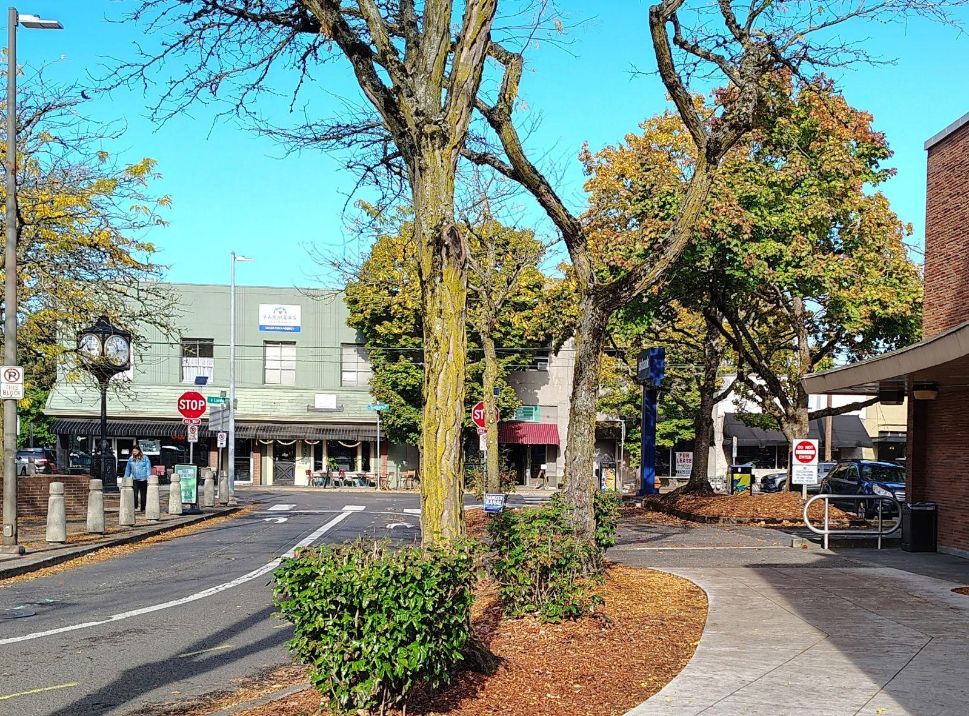 Then and now. The intersection of Philadelphia and Lombard circa 1961 compared with photo taken by Robin Smith on 10/22/24.
Then and now. The intersection of Philadelphia and Lombard circa 1961 compared with photo taken by Robin Smith on 10/22/24.
♦
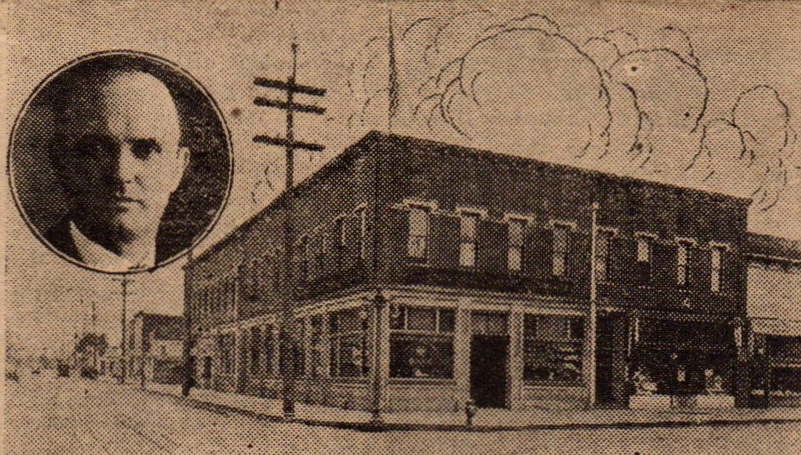 This picture of the Holbrook Block, built in 1906, was taken in 1923 and known then as the Peninsula National Bank. This area is now the northern parking lot of U.S. National Bank.
This picture of the Holbrook Block, built in 1906, was taken in 1923 and known then as the Peninsula National Bank. This area is now the northern parking lot of U.S. National Bank.
♦
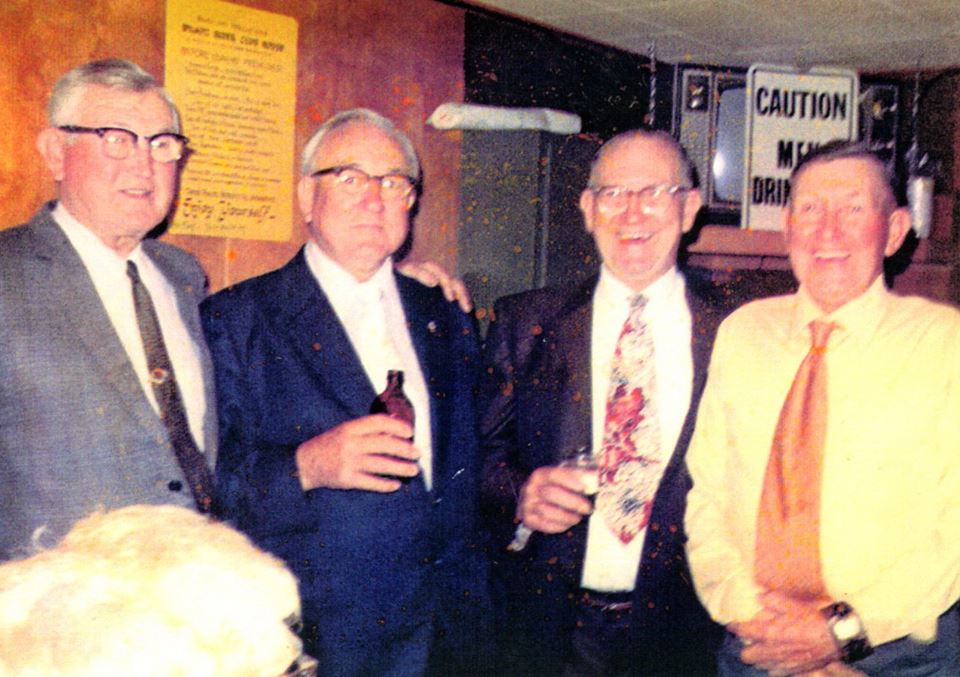 The Lind family of St Johns were active in the Bachelor Club. Halvor (Grit) Lind, Donald (Bat) Lind, Nooma Lind and Thomas (Scoot) Lind at a Bachelor's Club party in the 70's
The Lind family of St Johns were active in the Bachelor Club. Halvor (Grit) Lind, Donald (Bat) Lind, Nooma Lind and Thomas (Scoot) Lind at a Bachelor's Club party in the 70's
♦
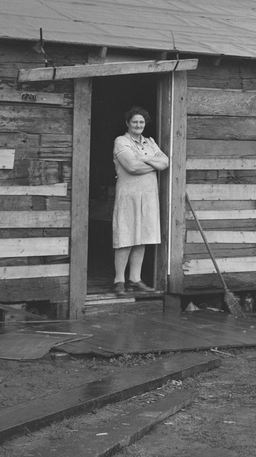 Oregon Historical Society Digital Collections: A woman stands in the doorway of a cabin at the Meadowlark trailer camp for shipyard workers, near the Oregon Shipyards in St. Johns, Portland. The cabin appears to be sided in various pieces of deteriorating wood, and pieces of wood can be seen on the ground forming a walkway over dirt. The camp owner, J.F. Gilmore, was arrested multiple times in 1943 for running a camp without a certificate of inspection. The full photo can be viewed here.
Oregon Historical Society Digital Collections: A woman stands in the doorway of a cabin at the Meadowlark trailer camp for shipyard workers, near the Oregon Shipyards in St. Johns, Portland. The cabin appears to be sided in various pieces of deteriorating wood, and pieces of wood can be seen on the ground forming a walkway over dirt. The camp owner, J.F. Gilmore, was arrested multiple times in 1943 for running a camp without a certificate of inspection. The full photo can be viewed here.
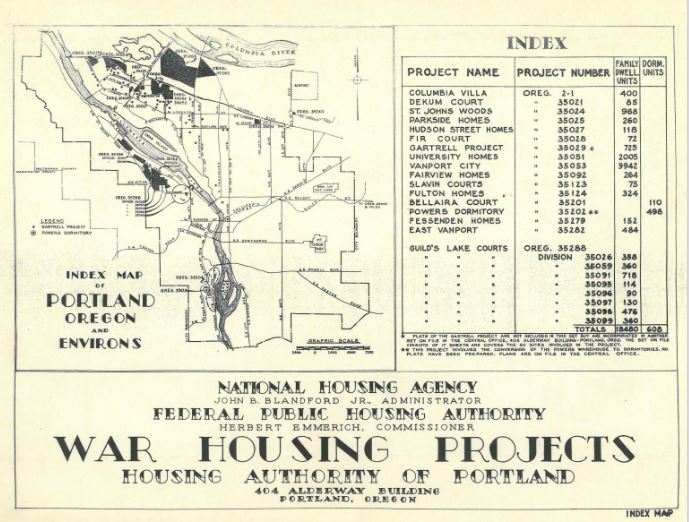 Meadowlark was not a sanctioned war housing project. Source: Multnomah County / City of Portland Archives.
Meadowlark was not a sanctioned war housing project. Source: Multnomah County / City of Portland Archives.
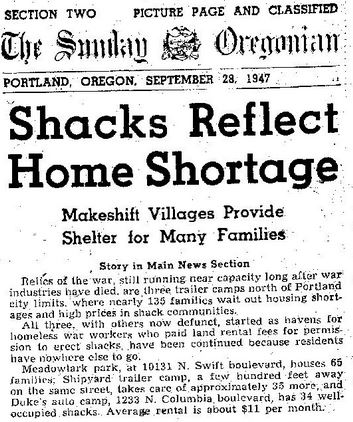 Meadowlark lasted well after the end of WWII.
Meadowlark lasted well after the end of WWII.
♦
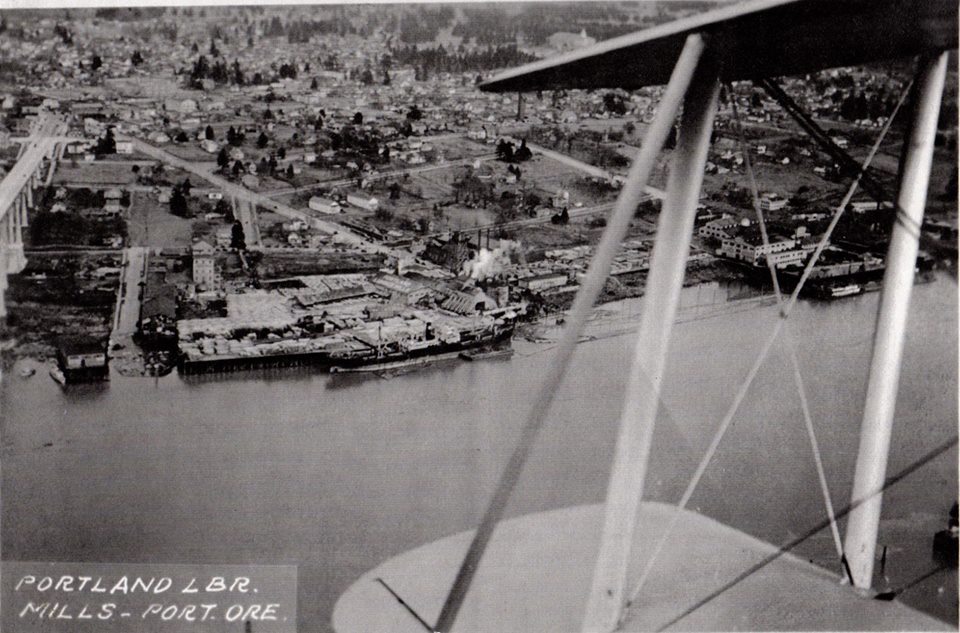 Aerial view of St Johns Portland Lumber Mills. Wayne Smith photo.
Aerial view of St Johns Portland Lumber Mills. Wayne Smith photo.
♦
 St Johns And The North Portland Peninsula was published in 2020. It is the second of two books by Don Nelson dealing with St Johns and the surrounding areas. Highly recommended.
St Johns And The North Portland Peninsula was published in 2020. It is the second of two books by Don Nelson dealing with St Johns and the surrounding areas. Highly recommended.
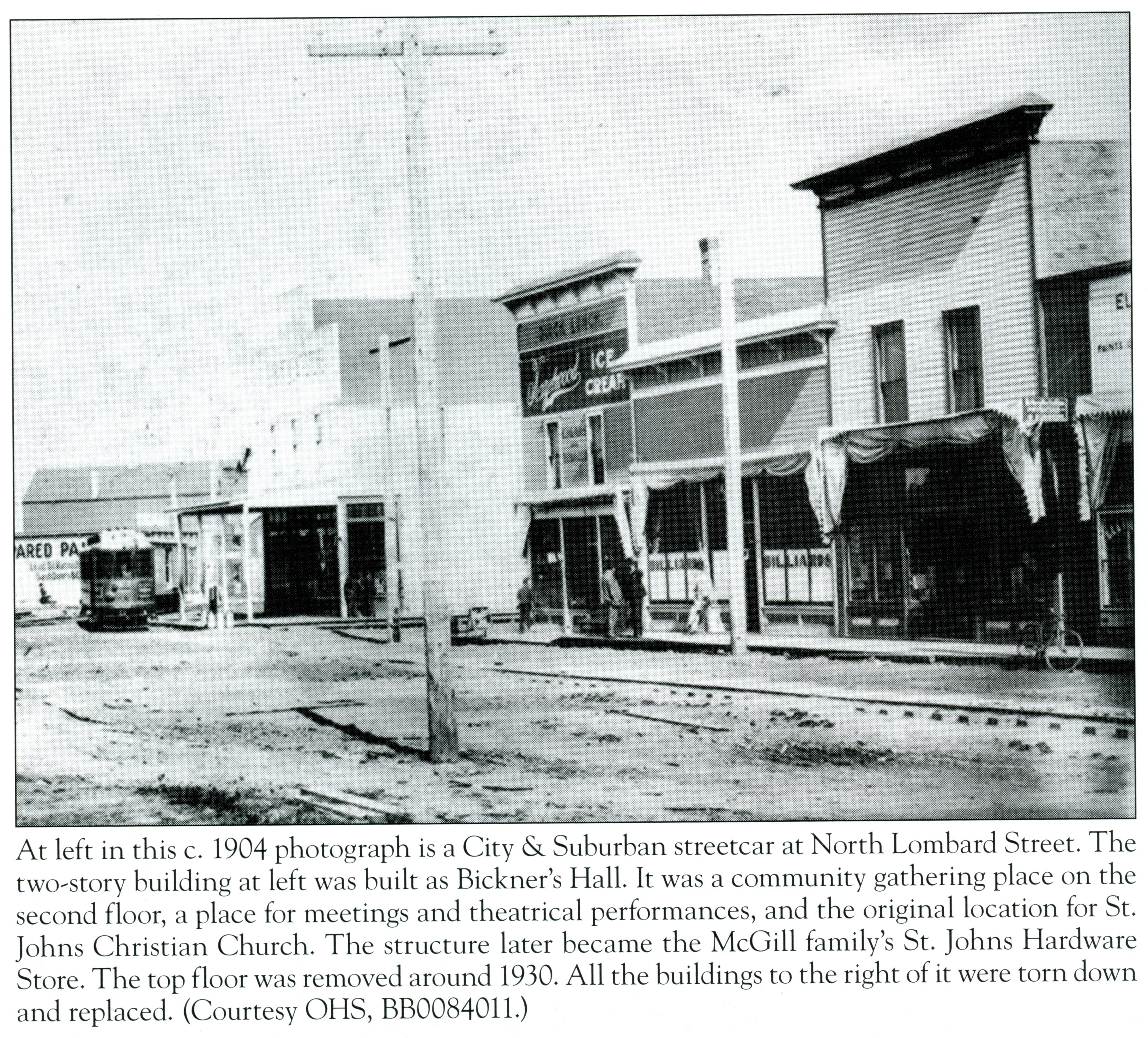 An example of the photographs and comments you will find in St. Johns And The North Portland Peninsula by Don Nelson.
An example of the photographs and comments you will find in St. Johns And The North Portland Peninsula by Don Nelson.
♦
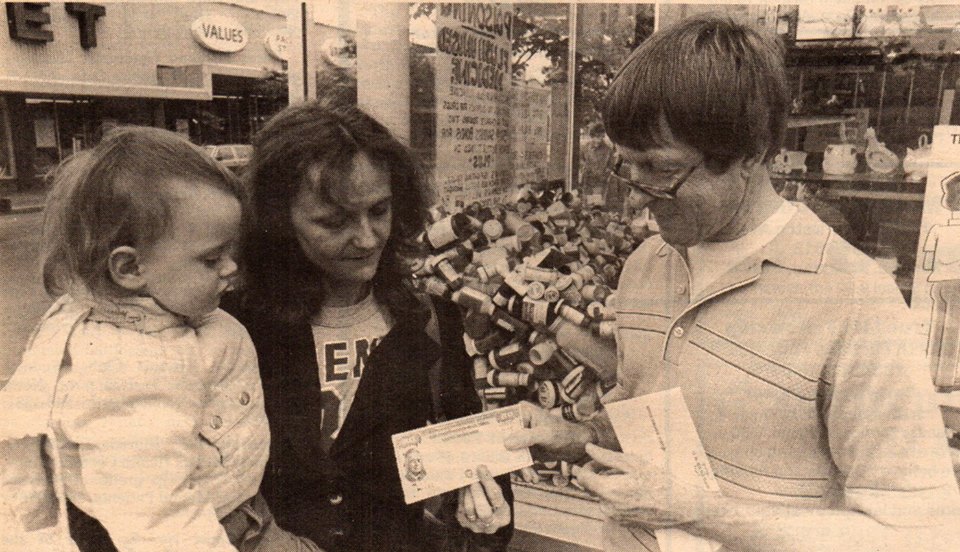 May 23, 1985. Wayne Hatch of Currins for Drugs with Cornet store in background at Lombard and Leavitt. Gil Parton admitted he spent a lot of time in Cornet's as a kid, hanging out in the toy department. We're sure he wasn't the only one.
May 23, 1985. Wayne Hatch of Currins for Drugs with Cornet store in background at Lombard and Leavitt. Gil Parton admitted he spent a lot of time in Cornet's as a kid, hanging out in the toy department. We're sure he wasn't the only one.
♦
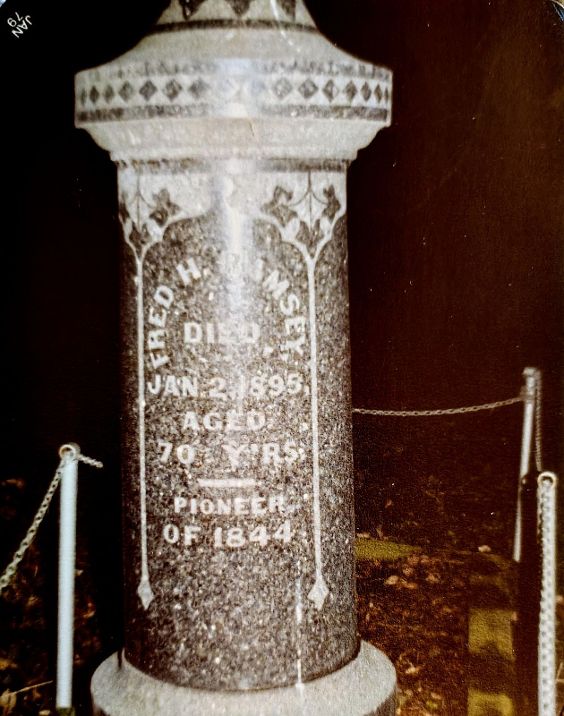 Frederick H. Ramsey (1824 - 1895) was an early St Johns pioneer. Fred was known for being a bit eccentric because he dressed in buckskins, moccasins and a hat adorned with a pheasant feather. It was said that he preferred the company of Native Americans over his fellow white settlers. Robin Smith took this photo in 1979.
Frederick H. Ramsey (1824 - 1895) was an early St Johns pioneer. Fred was known for being a bit eccentric because he dressed in buckskins, moccasins and a hat adorned with a pheasant feather. It was said that he preferred the company of Native Americans over his fellow white settlers. Robin Smith took this photo in 1979.
♦
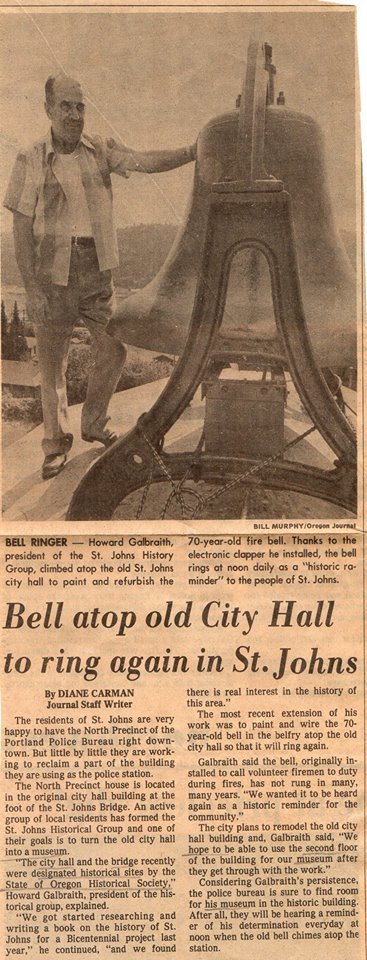
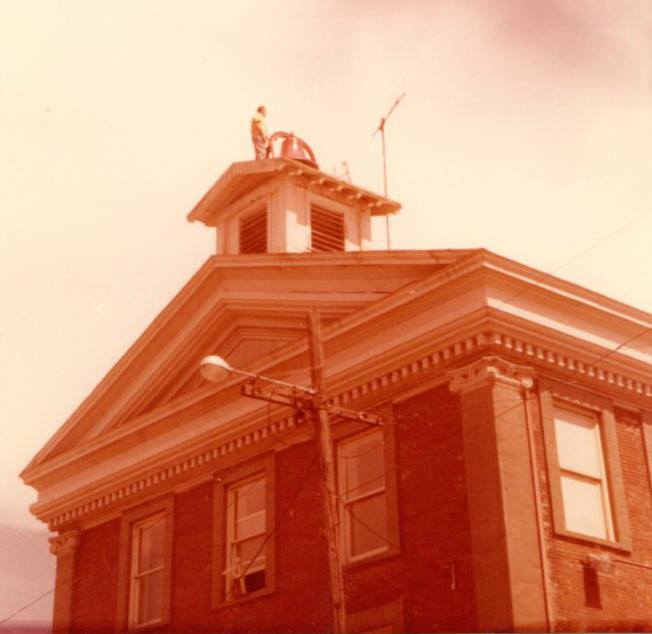 Article was from the August 3, 1977 issue of the Oregonian. The man on top of city hall is Howard Galbraith "Mayor of St Johns" who is fixing the bell so it will ring again. Howard Galbraith was responsible for establishing Cathedral Park and championed City Hall's
Article was from the August 3, 1977 issue of the Oregonian. The man on top of city hall is Howard Galbraith "Mayor of St Johns" who is fixing the bell so it will ring again. Howard Galbraith was responsible for establishing Cathedral Park and championed City Hall's
renovation.
♦
 Couch and Currier grocery store 108 S Jersey ( 8527 N Lombard ) as it looked in 1950. Located behind the St Johns Drugs sign, the building was remodeled by Couch and Currier October 1922. Their store was called the Grabateria. Originally they had been located in the building where H F Clark had his first store at Tacoma (Alta) and Jersey (Lombard).
Couch and Currier grocery store 108 S Jersey ( 8527 N Lombard ) as it looked in 1950. Located behind the St Johns Drugs sign, the building was remodeled by Couch and Currier October 1922. Their store was called the Grabateria. Originally they had been located in the building where H F Clark had his first store at Tacoma (Alta) and Jersey (Lombard).
Learn more about the Grabateria.
♦
♦
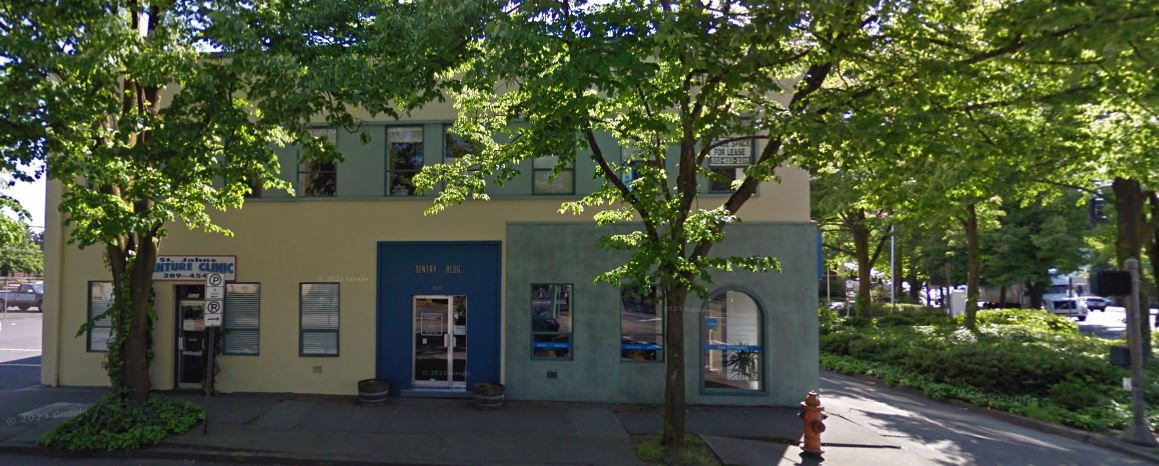 Known today as the Sentry Building, on the corner of Ivanhoe and Burlington, it started out as the New St Johns Hotel in 1906. Google Maps photo taken May 2009
Known today as the Sentry Building, on the corner of Ivanhoe and Burlington, it started out as the New St Johns Hotel in 1906. Google Maps photo taken May 2009
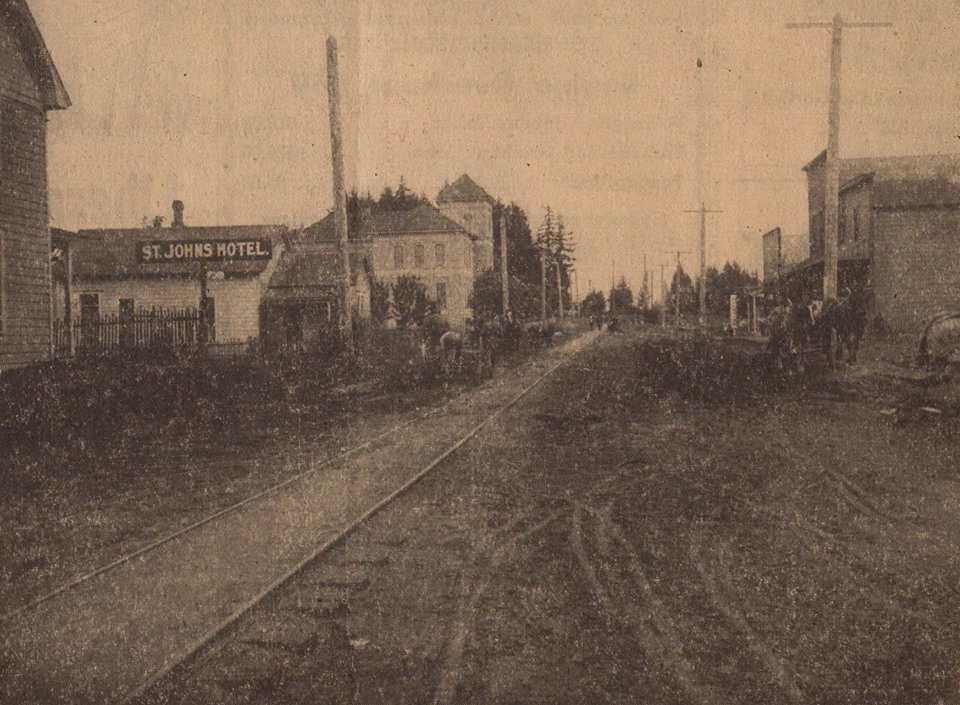 Before there was the New St Johns Hotel there was the original St Johns Hotel. The first one located on Jersey St.
Before there was the New St Johns Hotel there was the original St Johns Hotel. The first one located on Jersey St.
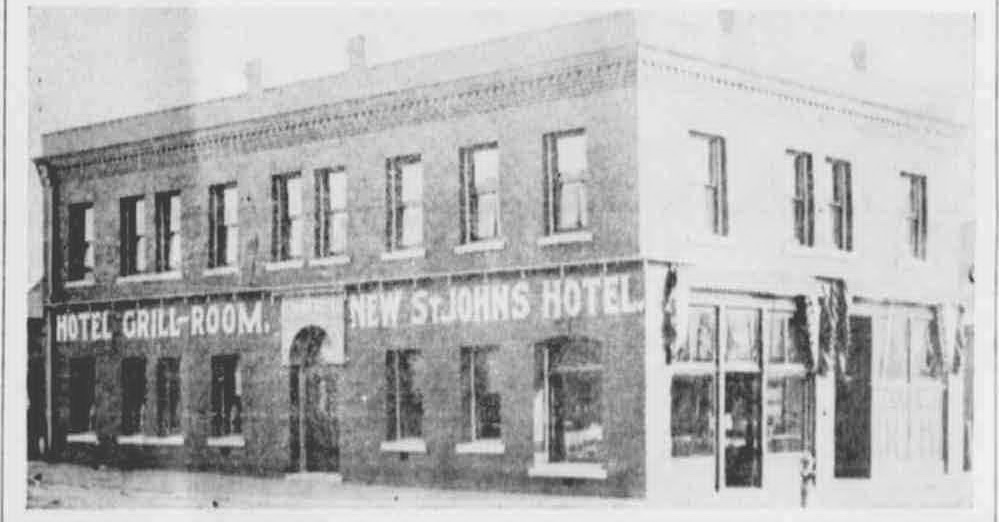
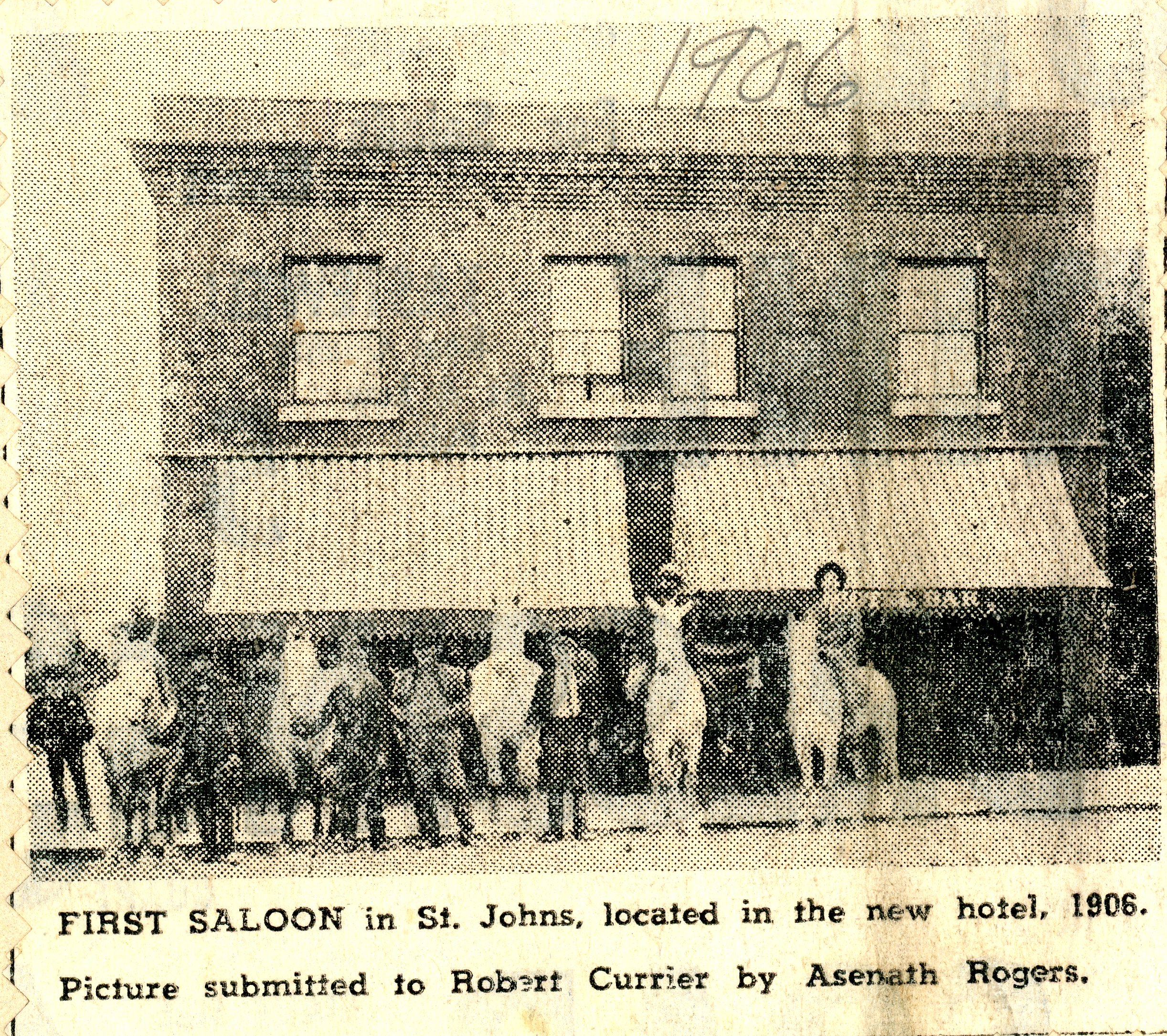 The New St Johns Hotel opened in April 1906. It featured a grill-room, bar, and of course rooms for rent.
The New St Johns Hotel opened in April 1906. It featured a grill-room, bar, and of course rooms for rent.
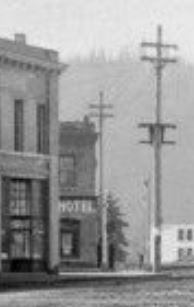 You can see part of the New St Johns Hotel in our Facebook cover photo
You can see part of the New St Johns Hotel in our Facebook cover photo

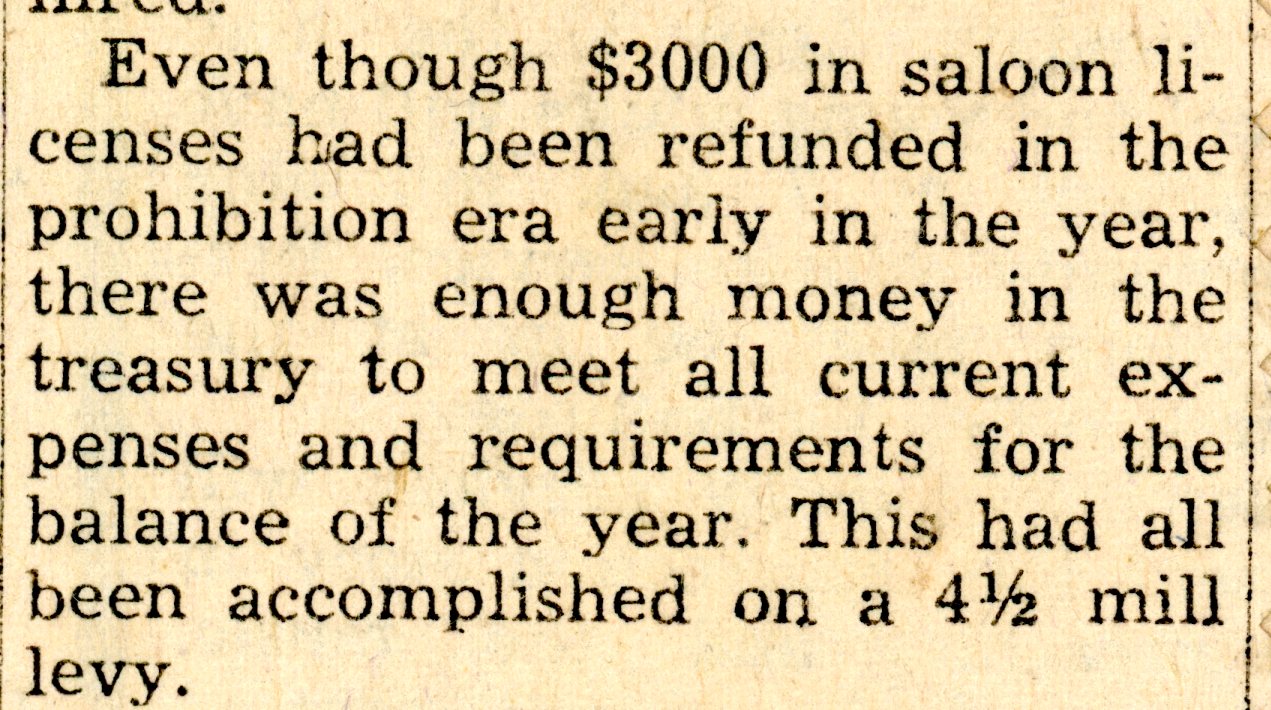 The St Johns Hotel company received the first liquor license in the City of St Johns in 1906, but that didn't last long. Around 1908 St Johns entered the prohibition era and saloon licenses had to be refunded.
The St Johns Hotel company received the first liquor license in the City of St Johns in 1906, but that didn't last long. Around 1908 St Johns entered the prohibition era and saloon licenses had to be refunded.
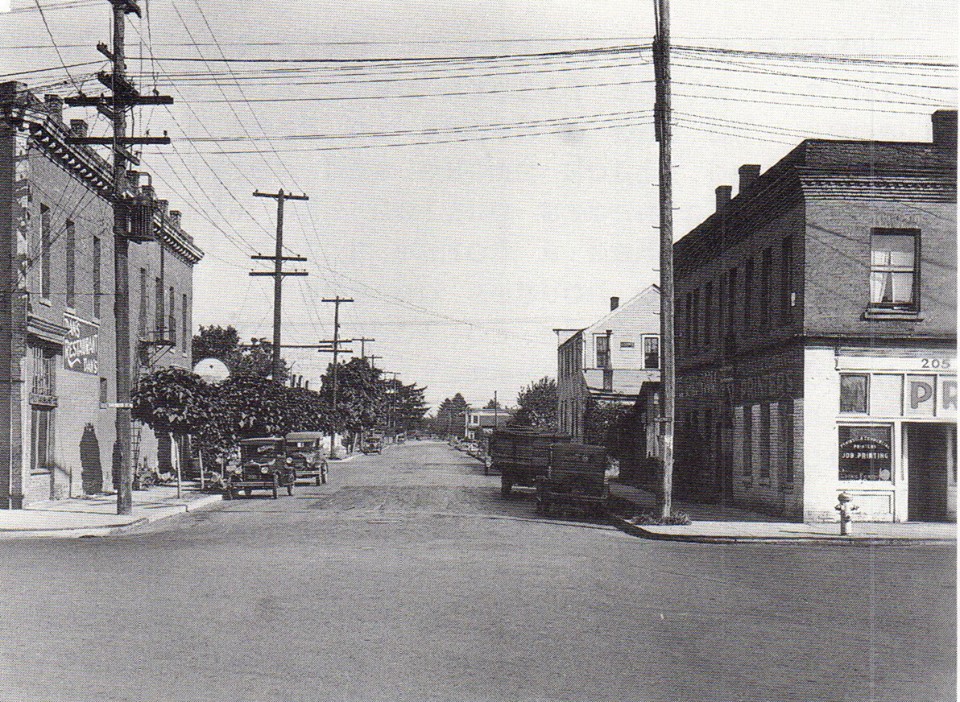 Here is what the (New) St Johns Hotel building looked like in 1918. The MacFarland - Robinson Ford Agency operated out of this building in 1922 and 1923. The Agency (we would call them dealerships today) had an address of 205 ( now 7238 N Burlington ) across from City Hall. McCamey Motors bought McFarland - Robinson out in August 1923 and in January of 1924 moved into their new building at 8501 N Lombard. St Johns had many automobile dealerships beginning in the 1920's.
Here is what the (New) St Johns Hotel building looked like in 1918. The MacFarland - Robinson Ford Agency operated out of this building in 1922 and 1923. The Agency (we would call them dealerships today) had an address of 205 ( now 7238 N Burlington ) across from City Hall. McCamey Motors bought McFarland - Robinson out in August 1923 and in January of 1924 moved into their new building at 8501 N Lombard. St Johns had many automobile dealerships beginning in the 1920's.
♦
 Dawson St. was changed to Lombard St. at two locations - in 1909 and 1916.
Dawson St. was changed to Lombard St. at two locations - in 1909 and 1916.
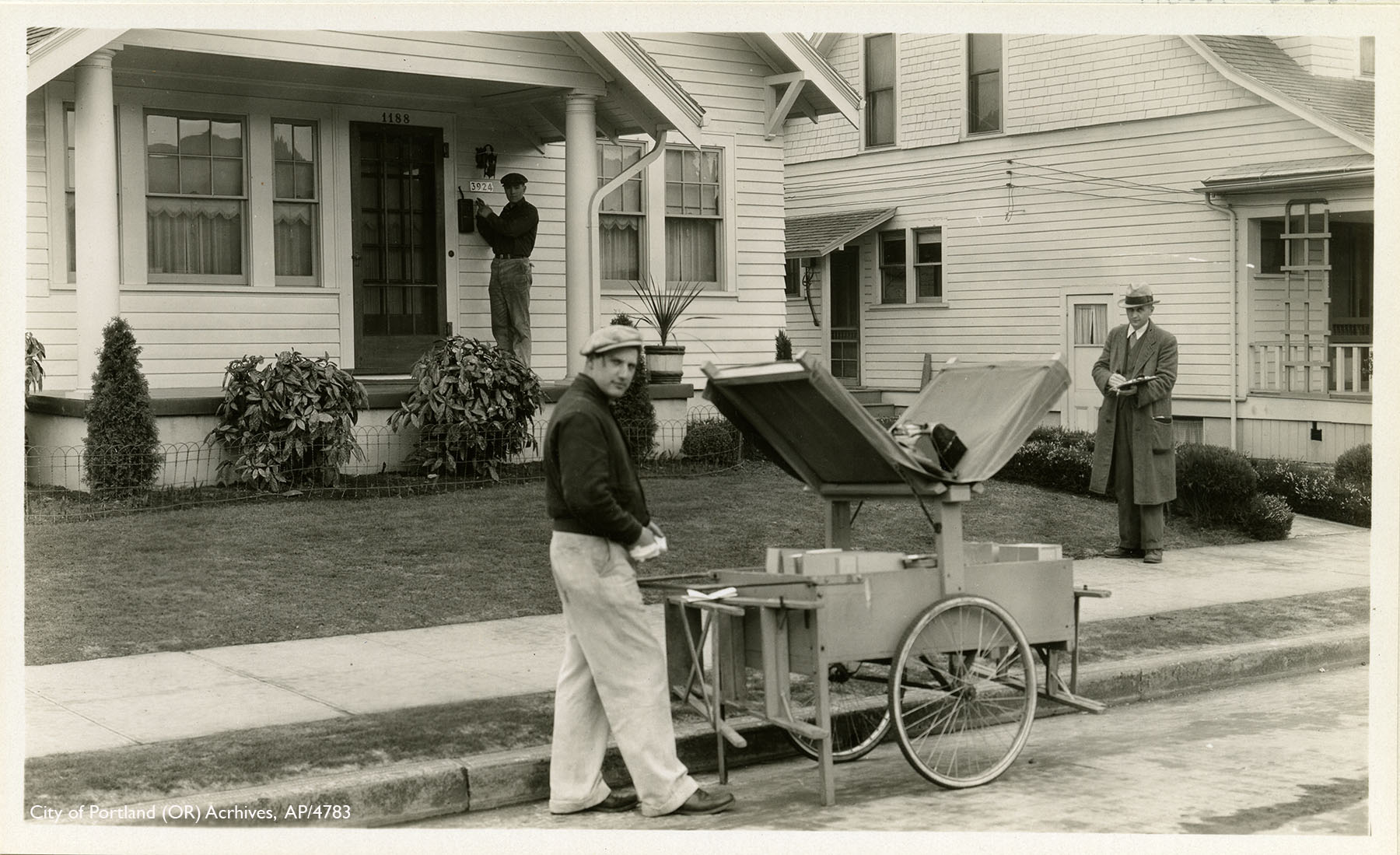 Over the years many of the street names (& numbers) changed in St Johns. What is referred to now as Portland's Great Renumbering Project (1931-1933) first began in St Johns. By the way Linnton was the last community to have its street names and numbers changed. Photo credit for the house photo goes to Vintage Portland / City of Portland. Learn more - https://alamedahistory.org/.../portlands-great.../ and https://vintageportland.wordpress.com/.../new-house.../...
Over the years many of the street names (& numbers) changed in St Johns. What is referred to now as Portland's Great Renumbering Project (1931-1933) first began in St Johns. By the way Linnton was the last community to have its street names and numbers changed. Photo credit for the house photo goes to Vintage Portland / City of Portland. Learn more - https://alamedahistory.org/.../portlands-great.../ and https://vintageportland.wordpress.com/.../new-house.../...
♦
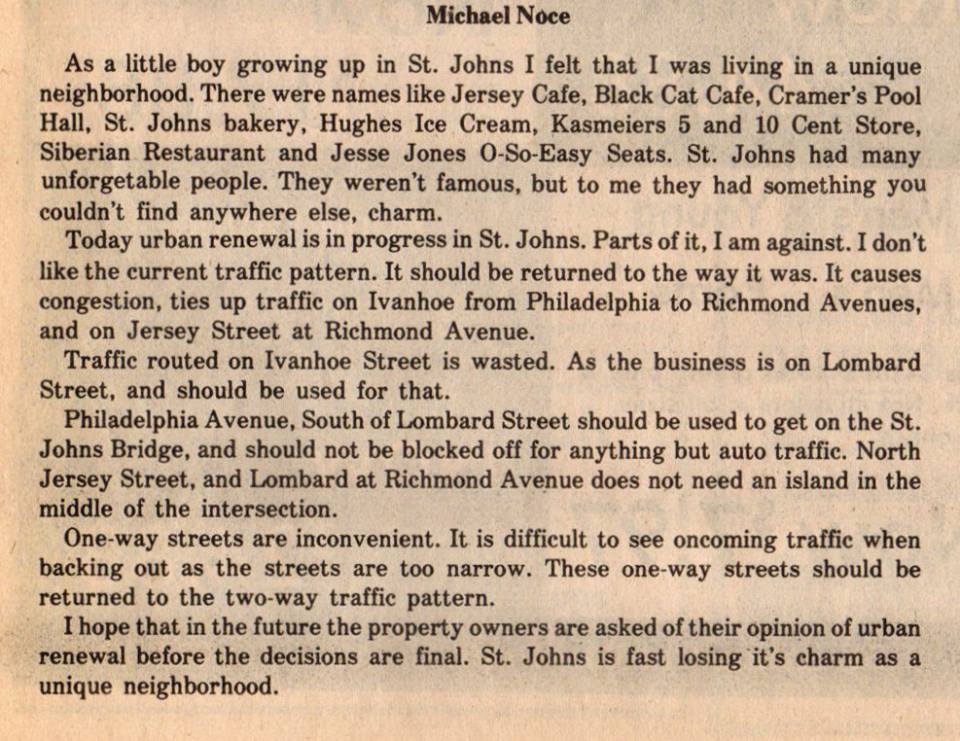 Mike Noce, long time resident of St Johns gives his views of changes being made to the town in an article from the September 1, 1977
Mike Noce, long time resident of St Johns gives his views of changes being made to the town in an article from the September 1, 1977
issue of the St Johns Review. This was 47 years ago.
♦
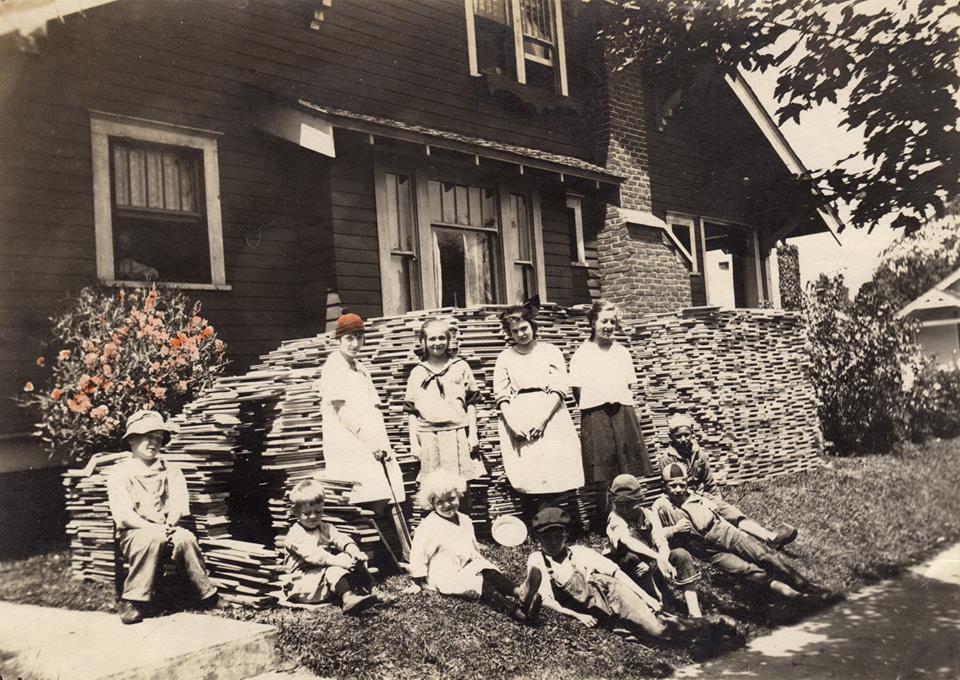
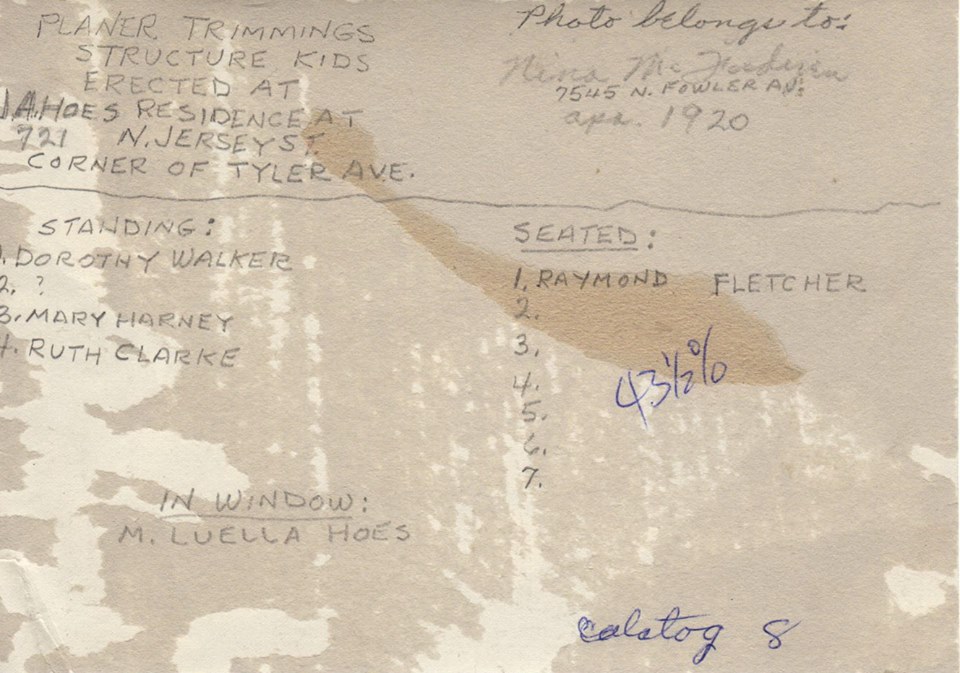 This photo was taken in April of 1920. The James Arthur Hoes family lived at 7806 N Jersey, which was on the corner of Jersey and Tyler. This view of the home was taken from Tyler St. Mr Hoes had photography studios at three locations in St Johns over the years. The first was across of the street from James John School. Stack of wood on lawn is spare slabs of wood from the lumber mill used as firewood. Many home owners used this type of wood in their fireplaces prior to WWII.
This photo was taken in April of 1920. The James Arthur Hoes family lived at 7806 N Jersey, which was on the corner of Jersey and Tyler. This view of the home was taken from Tyler St. Mr Hoes had photography studios at three locations in St Johns over the years. The first was across of the street from James John School. Stack of wood on lawn is spare slabs of wood from the lumber mill used as firewood. Many home owners used this type of wood in their fireplaces prior to WWII.
♦
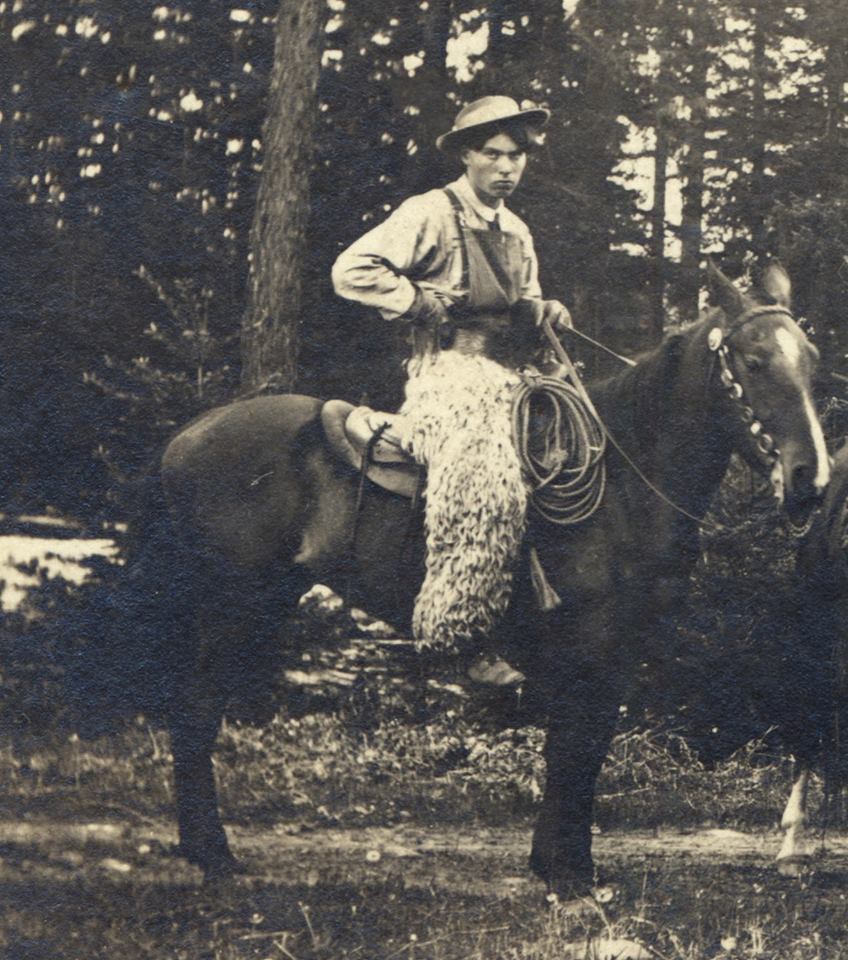 Here is another photo of James Ross Gatton, taken at a different time but striking a similar pose.
Here is another photo of James Ross Gatton, taken at a different time but striking a similar pose.
♦
Photo of the Cochran Block and Central Hotel from Risa Davis. The original Central Hotel was in the building called the Cochran Block which opened in November of 1904. The Cochran Block was three stories with shops and businesses on the street floor on Jersey (Lombard) and Philadelphia. The hotel was on the upper two stories.
♦
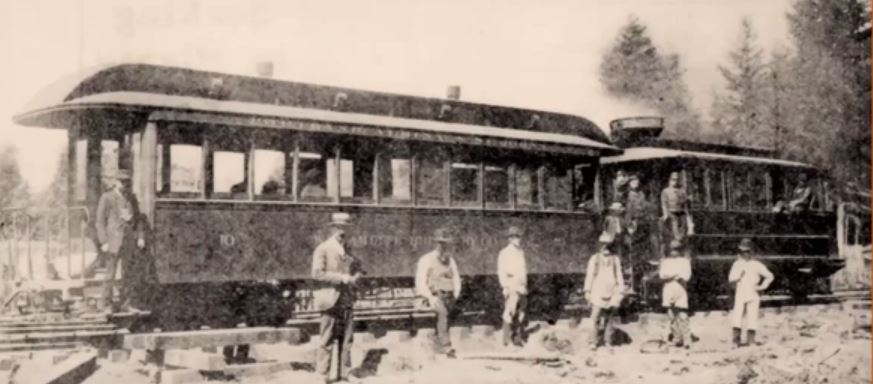 First train to enter the city of St Johns in May, 1890. Photo capture from Let's Talk Trolleys: St Johns Streetcars
First train to enter the city of St Johns in May, 1890. Photo capture from Let's Talk Trolleys: St Johns Streetcars
♦
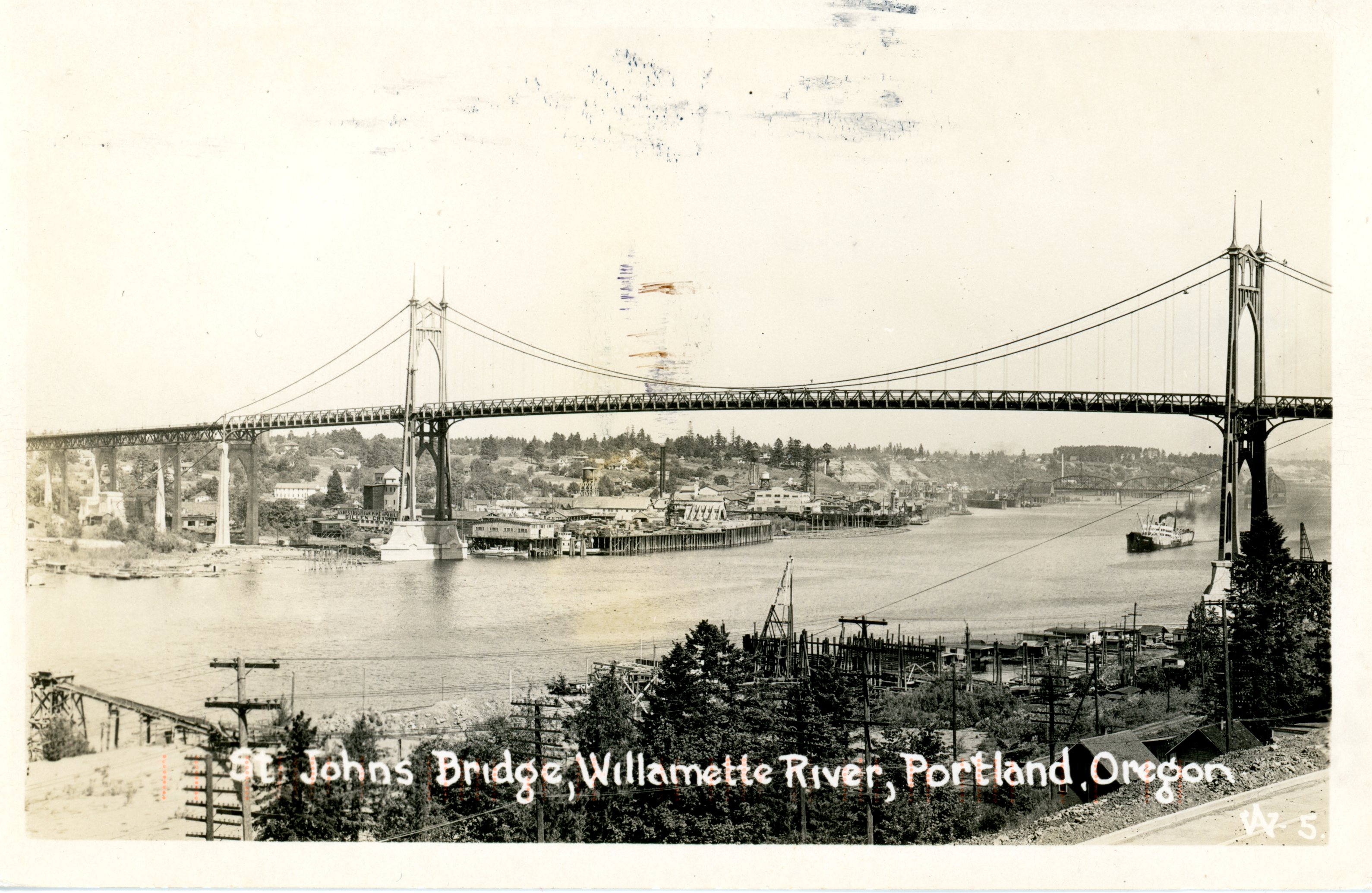
 A reproduction postcard found in Westchester, NY. This reprint is labeled W-5. Reprint W-2 is being sold out of Florida on eBay. The St Johns Bridge was completed in 1931.
A reproduction postcard found in Westchester, NY. This reprint is labeled W-5. Reprint W-2 is being sold out of Florida on eBay. The St Johns Bridge was completed in 1931.
♦
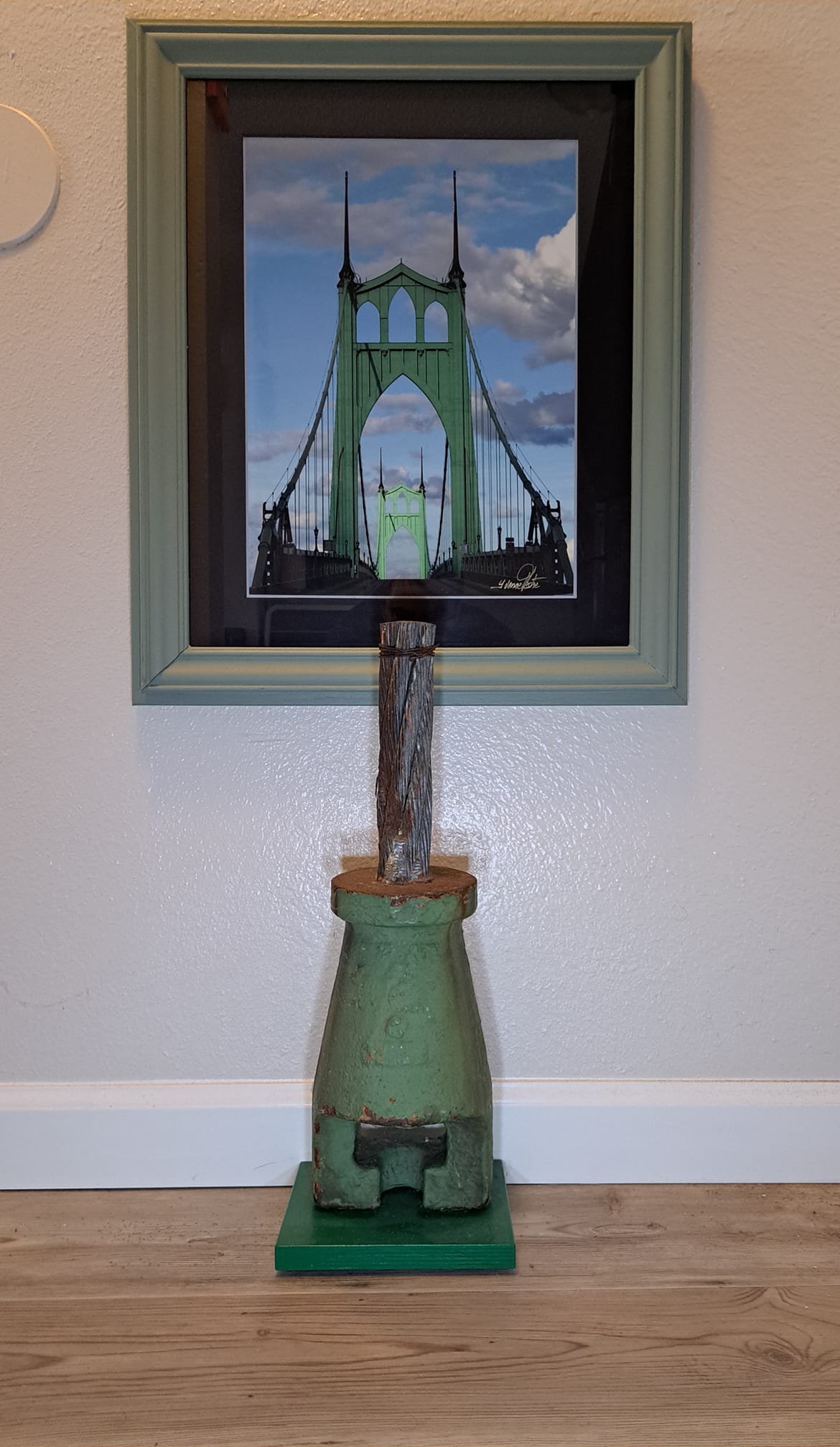
 ♦
♦
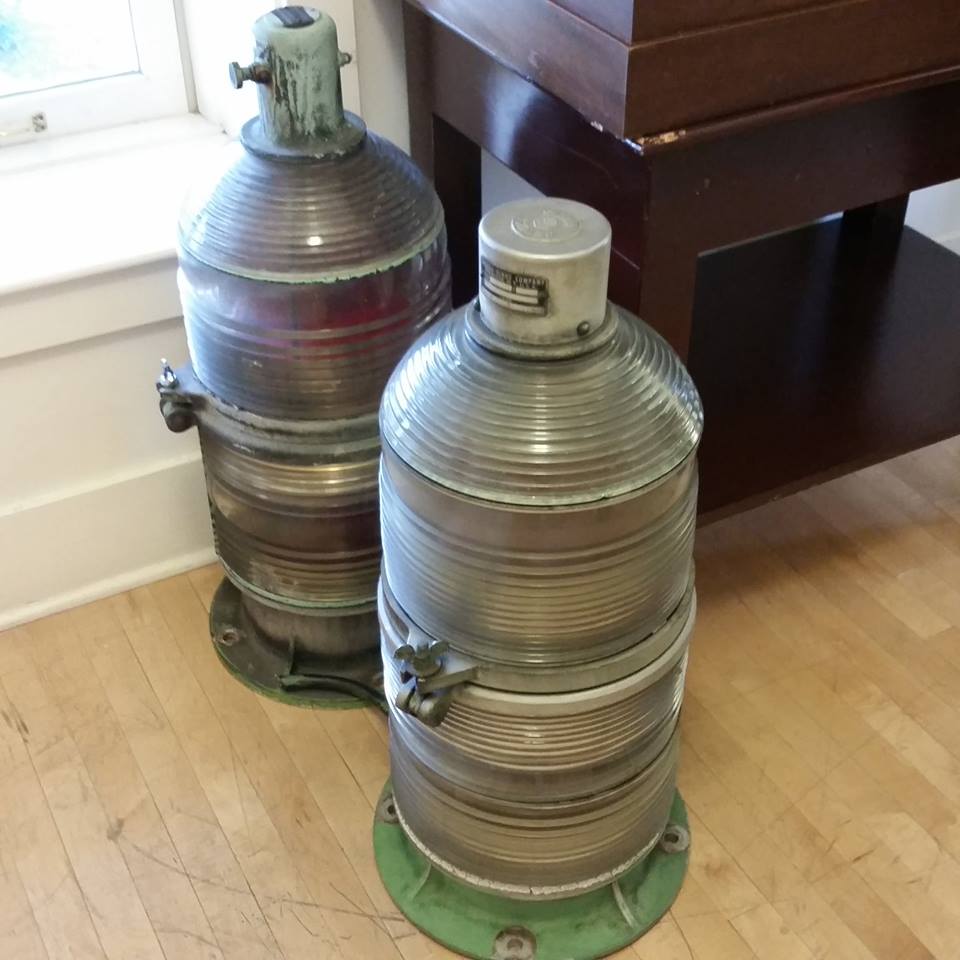 These two original St Johns Bridge marker lights were on display for many years in the lobby of the US National Bank. Now in the possession of the St Johns Heritage Association they can be viewed at the ODD Fellows Museum of ODD History.
These two original St Johns Bridge marker lights were on display for many years in the lobby of the US National Bank. Now in the possession of the St Johns Heritage Association they can be viewed at the ODD Fellows Museum of ODD History.
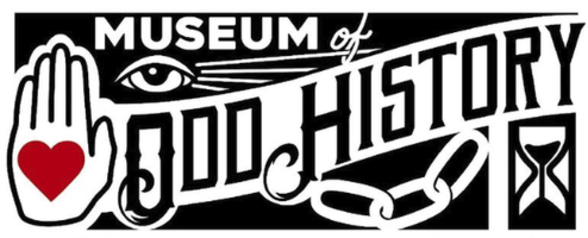 ♦
♦
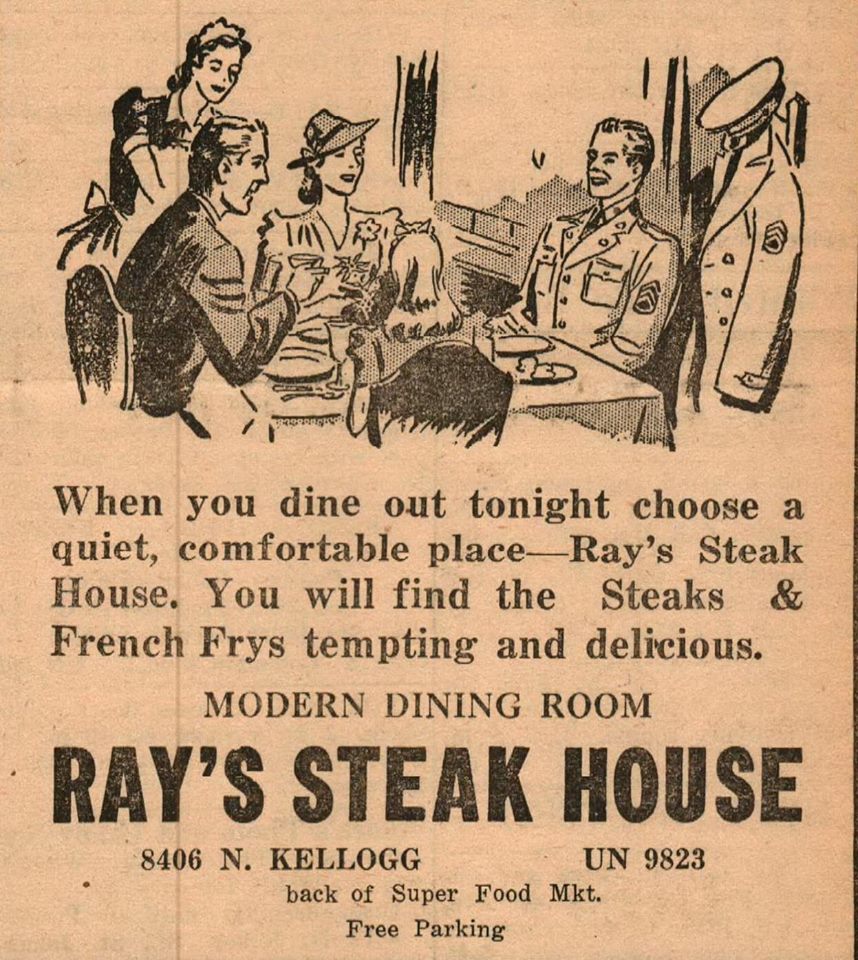
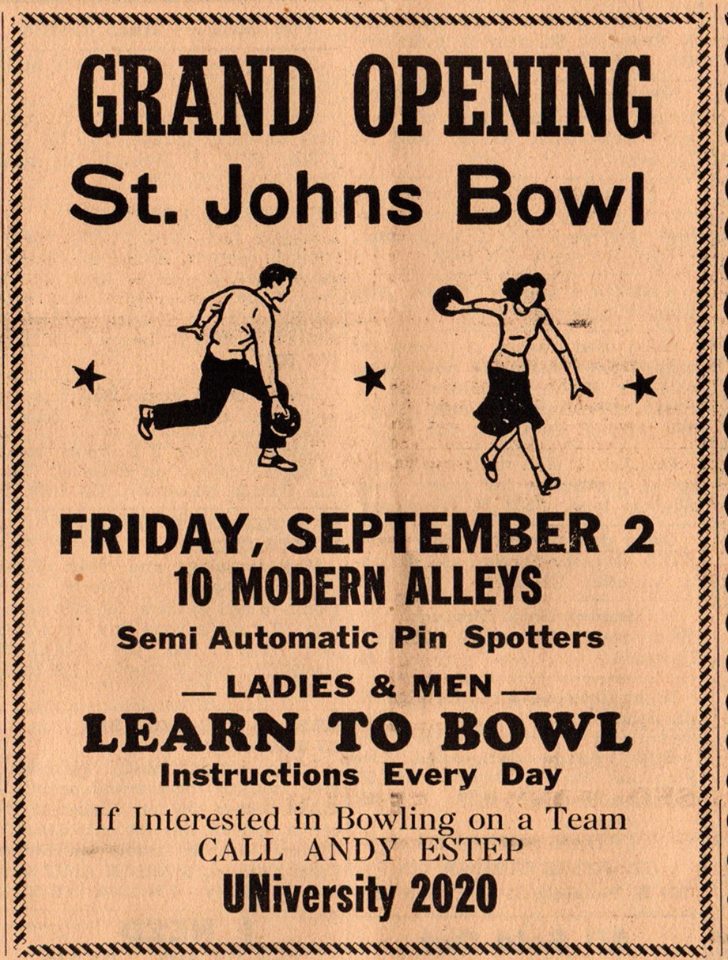 1945 ad for Ray's Steak House at 8406 N Kellogg. Ray's Steak House opened August 19, 1944. On September 2, 1949 this became the St Johns Bowl. Ray Oeschger was the owner of the Steak House and the St Johns Bowl. In 1917 it was the Chaney Moving Co.
1945 ad for Ray's Steak House at 8406 N Kellogg. Ray's Steak House opened August 19, 1944. On September 2, 1949 this became the St Johns Bowl. Ray Oeschger was the owner of the Steak House and the St Johns Bowl. In 1917 it was the Chaney Moving Co.
♦
♦
 This photo was taken in 1905. St Johns Hotel on left is at the corner of Leavitt and Lombard which is now Sabatino Moto. Far middle left is the Central School built in 1894 which was located on the corner of Lombard and Charleston which is now the playground for the James John grade school. The trolley tracks can be seen going down the middle of the unpaved street.
This photo was taken in 1905. St Johns Hotel on left is at the corner of Leavitt and Lombard which is now Sabatino Moto. Far middle left is the Central School built in 1894 which was located on the corner of Lombard and Charleston which is now the playground for the James John grade school. The trolley tracks can be seen going down the middle of the unpaved street.♦
♦
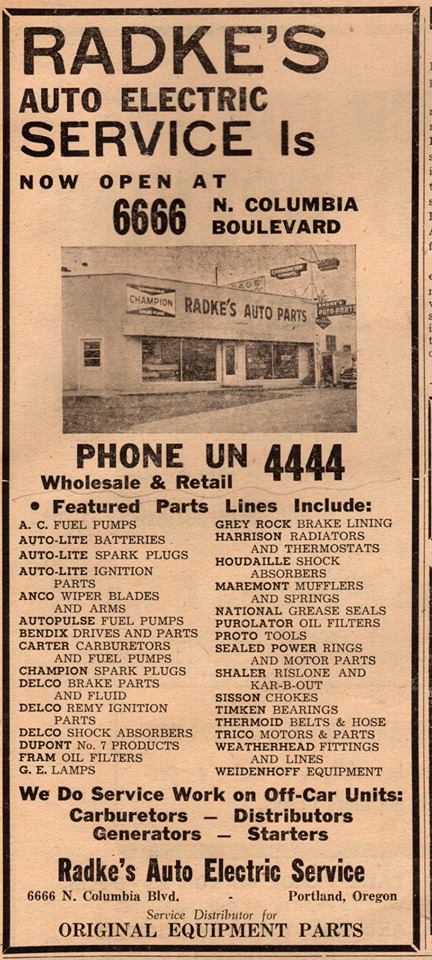 Radke's Auto Parts 6666 N Columbia Blvd opens March 16, 1951 from St Johns Review. Columbia Blvd renamed to Columbia Way from N Smith to Bridge Structure on June 27, 1973. (UNiversity 4444 = 86-4444)
Radke's Auto Parts 6666 N Columbia Blvd opens March 16, 1951 from St Johns Review. Columbia Blvd renamed to Columbia Way from N Smith to Bridge Structure on June 27, 1973. (UNiversity 4444 = 86-4444)
♦

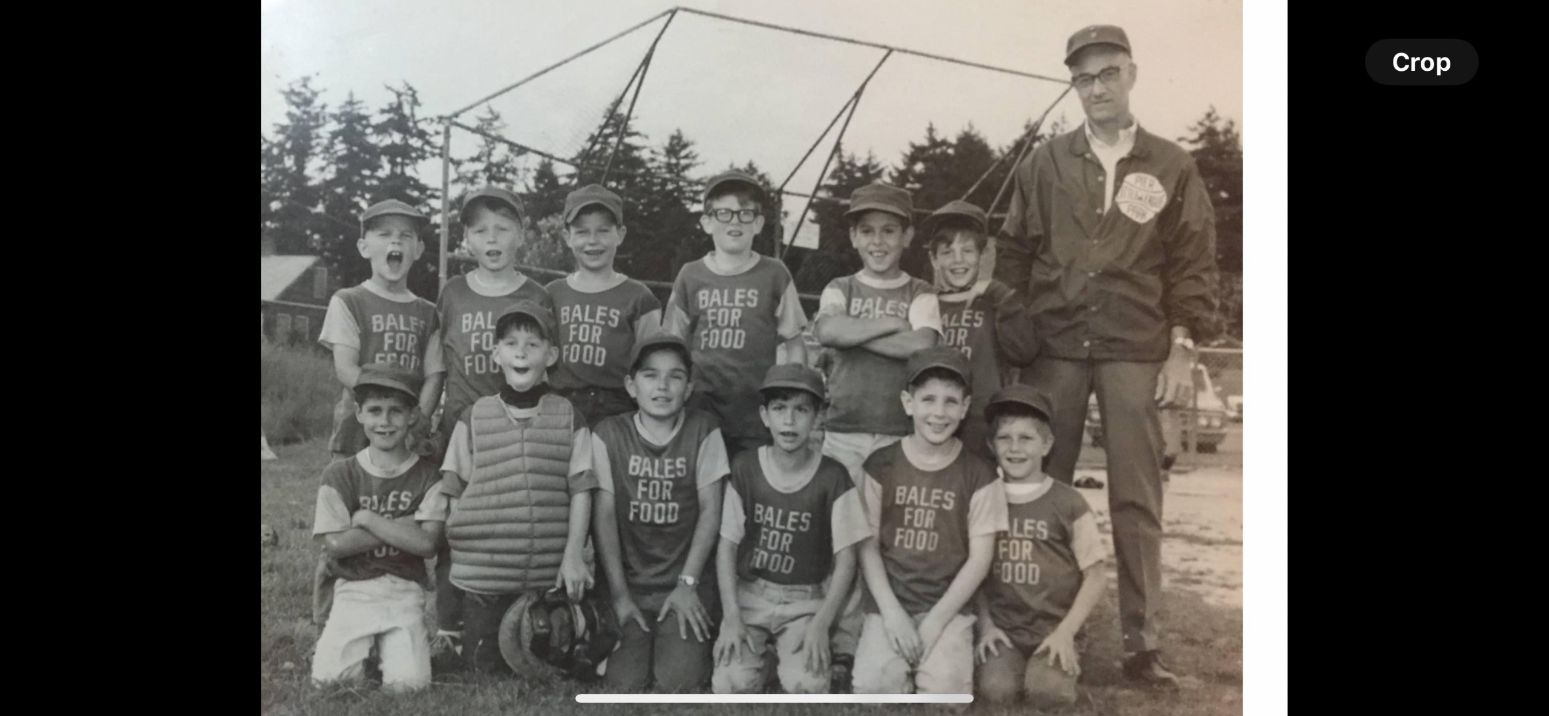 Article and photo thought to be circa 1965 or 1966.
Article and photo thought to be circa 1965 or 1966.
♦
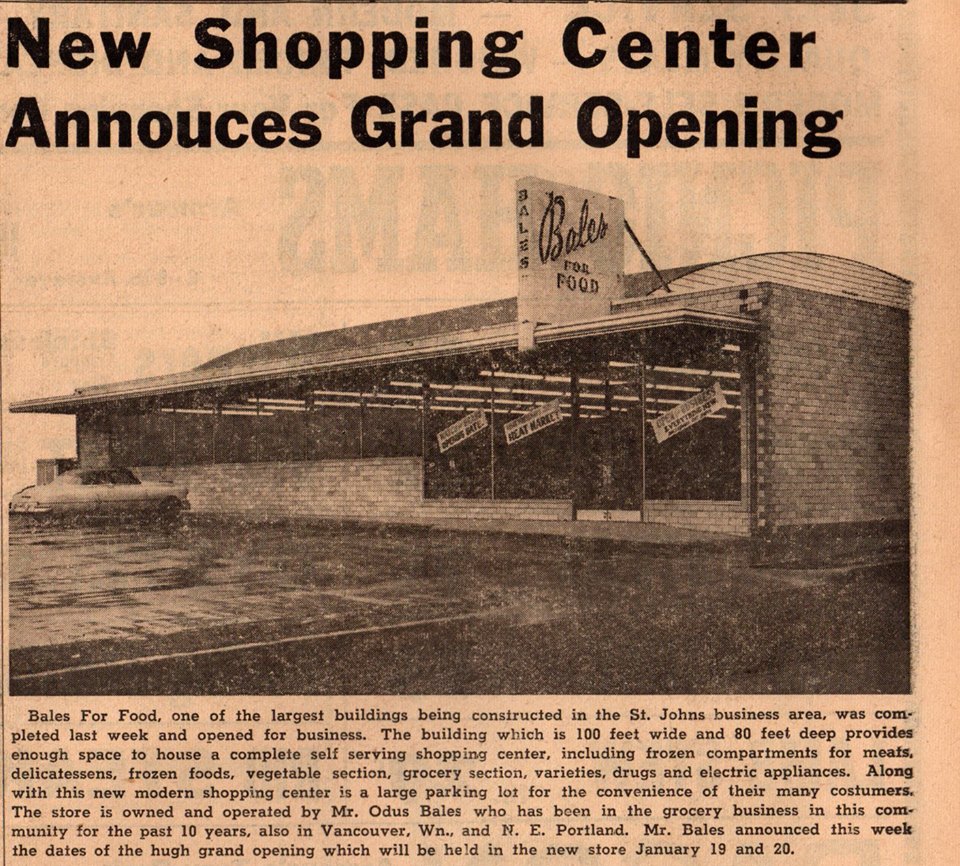 Bales Food originally opened in 1941 at 8402 N Lombard. Moved to 8336 N Ivanhoe January 1951 (Photo). Fire in 1965, Nov 15 1970 Bales leases to Daris (Dee) Taylor name changed to Taylor's Thriftway.
Bales Food originally opened in 1941 at 8402 N Lombard. Moved to 8336 N Ivanhoe January 1951 (Photo). Fire in 1965, Nov 15 1970 Bales leases to Daris (Dee) Taylor name changed to Taylor's Thriftway.
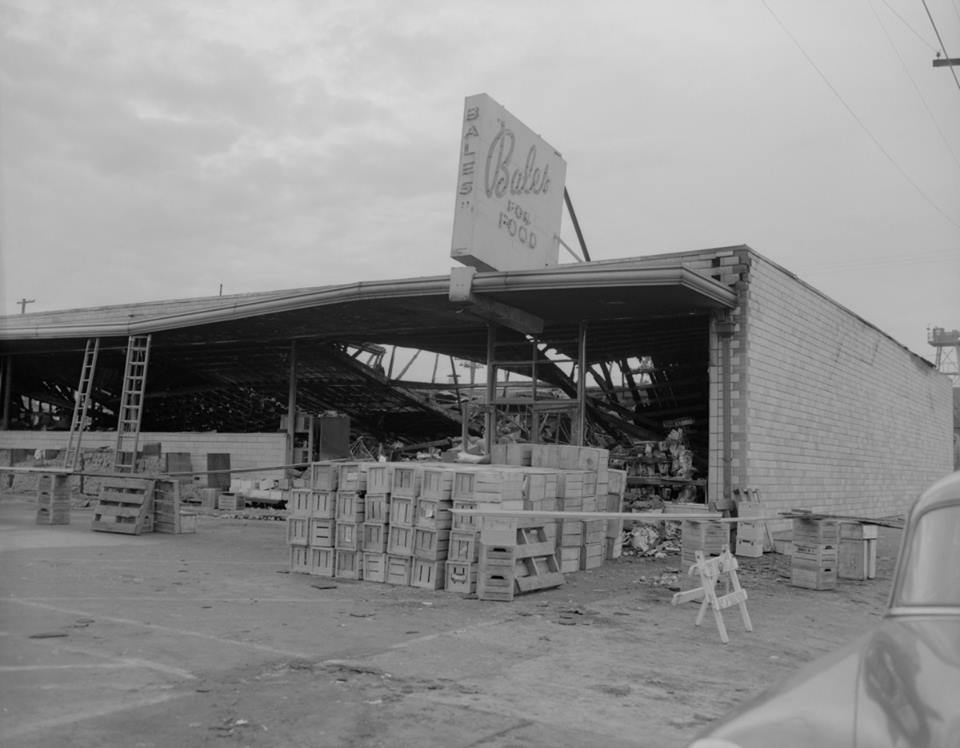 Bales Thriftway at 8336 N Ivanhoe after fire in 1965
Bales Thriftway at 8336 N Ivanhoe after fire in 1965
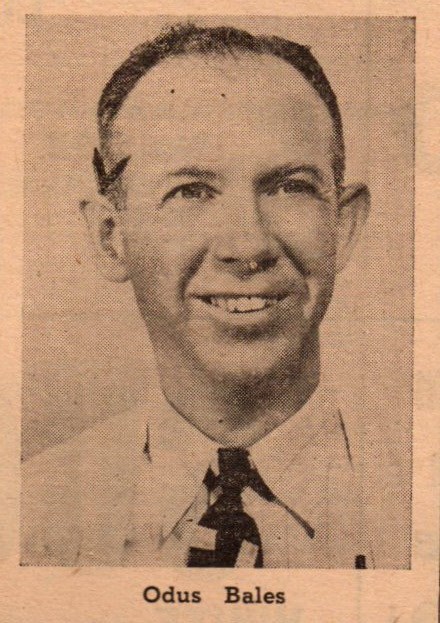 Odus Bales of Bales Thriftway July 1951
Odus Bales of Bales Thriftway July 1951
♦
♦
![]()
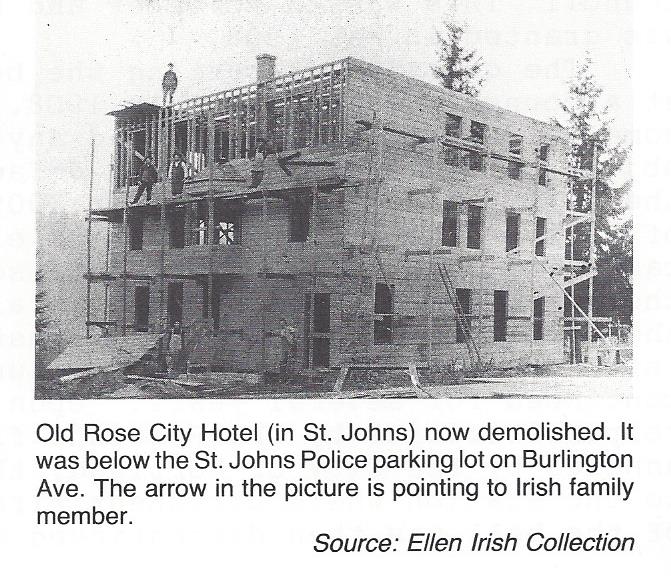 There is currently for sale on eBay a postcard reprint that has much better detail than our cover photo contains. You can find it by searching "St Johns Oregon". Note in the background the fire bell and the fountain with steps leading up to it. The building on the left of the City Hall building is the Rose City Hotel.
There is currently for sale on eBay a postcard reprint that has much better detail than our cover photo contains. You can find it by searching "St Johns Oregon". Note in the background the fire bell and the fountain with steps leading up to it. The building on the left of the City Hall building is the Rose City Hotel.
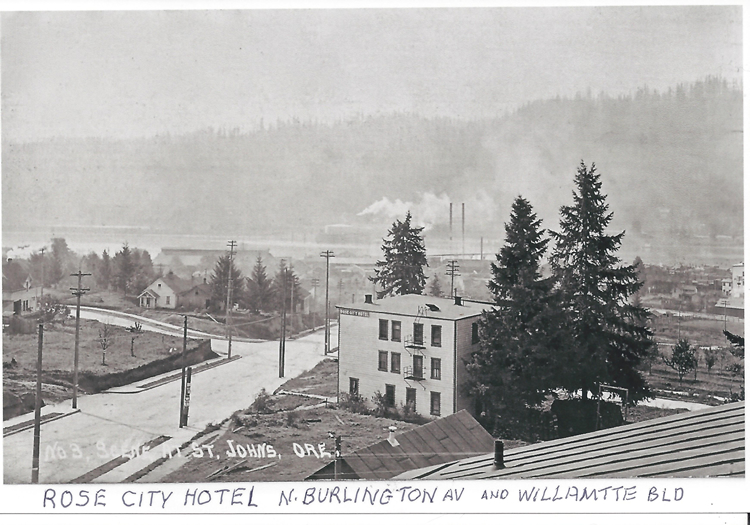 Another view of the Rose City Hotel
Another view of the Rose City Hotel
♦
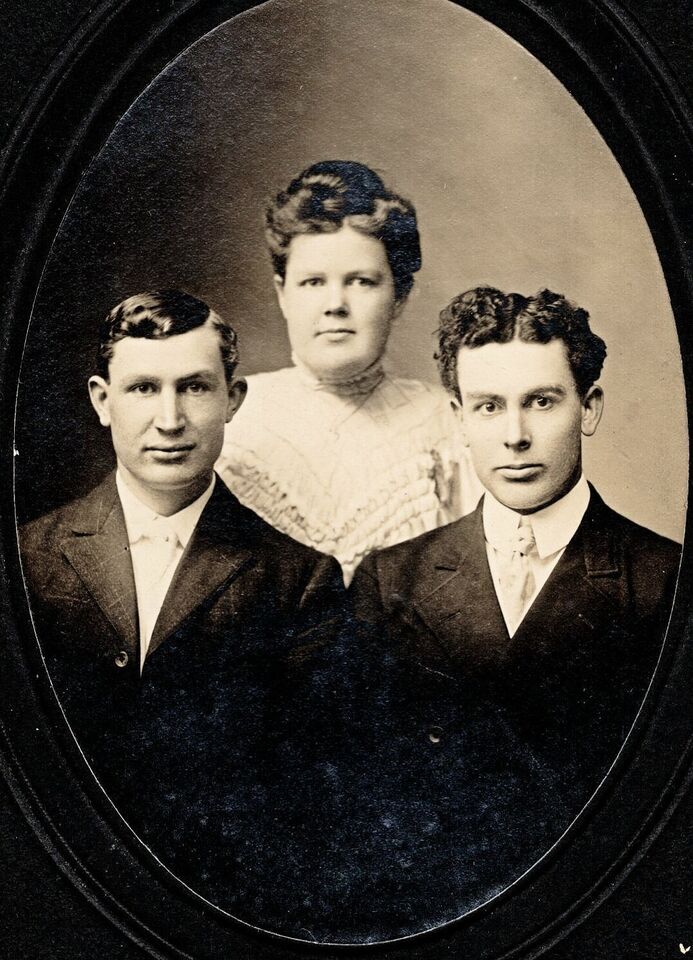
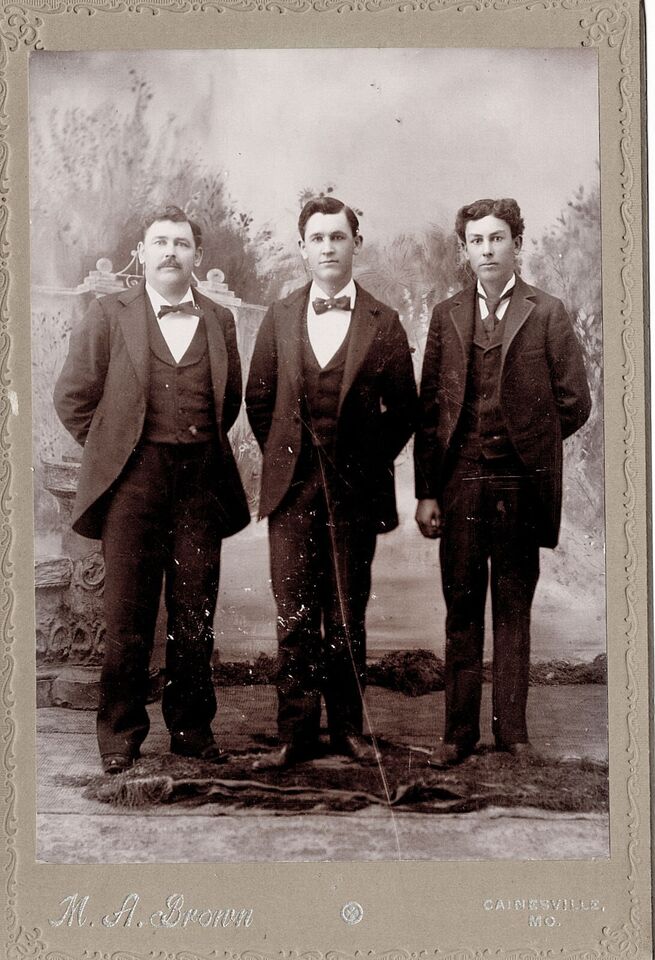 Gilbert Overstreet was a notable figure in St Johns having first owned a plumbing fixture shop, then later becoming a plumbing inspector. Gilbert was a distinguished member of ODD Fellows and a charter member of the St Johns Christian Church. Currently there are portraits for sale on eBay of the Overstreet family. Gilbert is the one on the right.
Gilbert Overstreet was a notable figure in St Johns having first owned a plumbing fixture shop, then later becoming a plumbing inspector. Gilbert was a distinguished member of ODD Fellows and a charter member of the St Johns Christian Church. Currently there are portraits for sale on eBay of the Overstreet family. Gilbert is the one on the right.
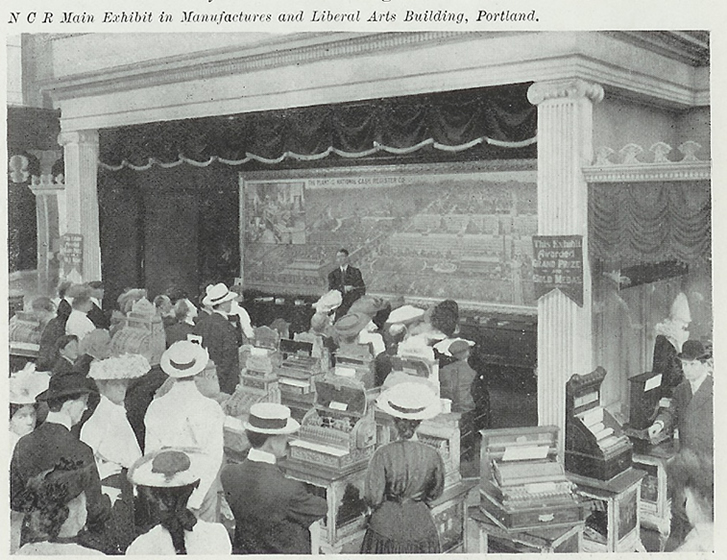
 ♦
♦
~ Support our Local Newspapers ~
St Johns Review
North Peninsula Review
♦
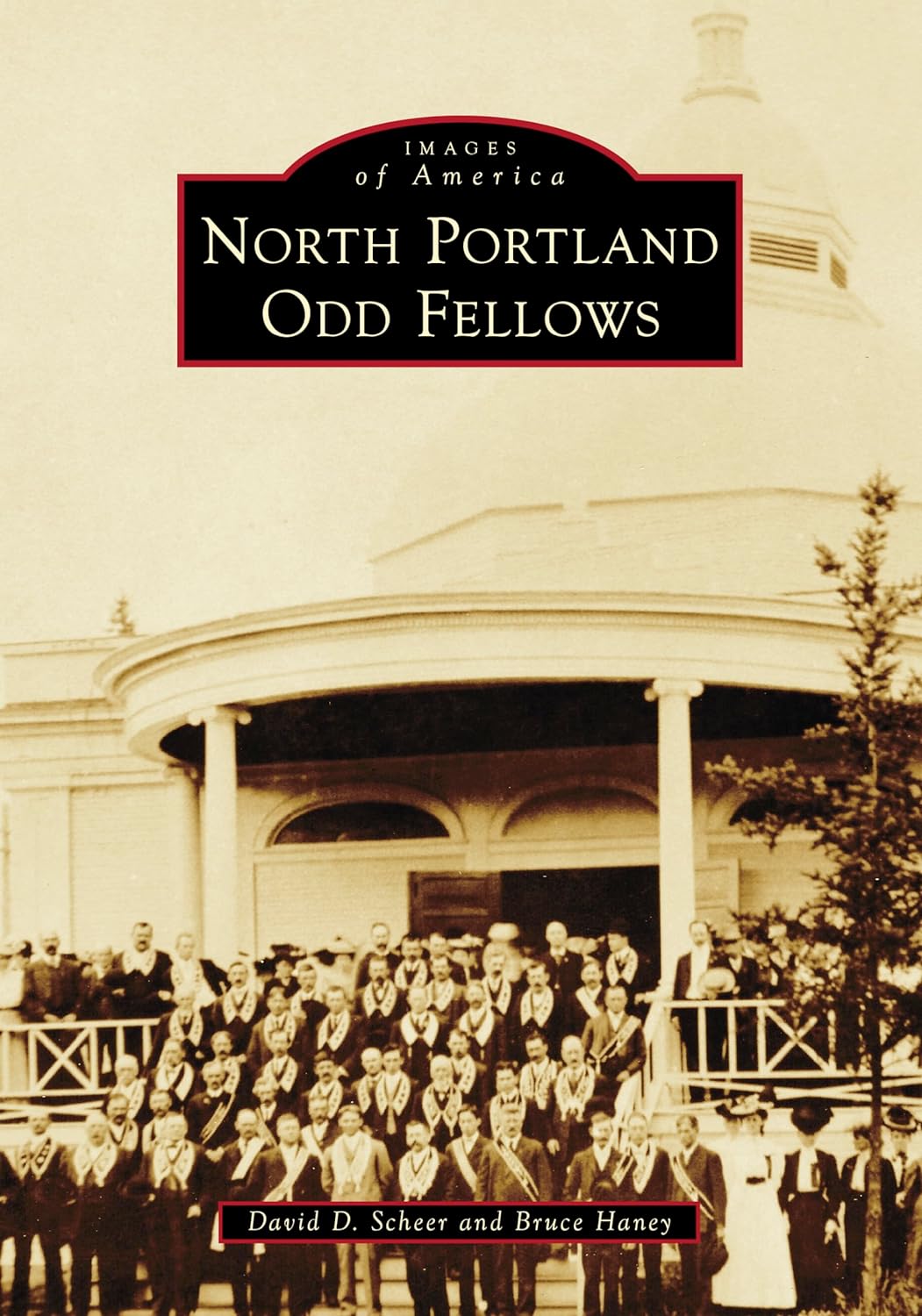 The Odd Fellows of North Portland were ordinary blue-collar workers who were able to have an extraordinary impact on their community through the tools they learned from organizing as a lodge. Lodges were a safety net for these workers, as they were one of the only sources at that time for insurance and sick pay. William Killingsworth, a charter member of Peninsula Lodge and whom Killingsworth Street is named after, believed this to be true, so he formed an investment company that began connecting the other North Portland communities via rails. As these communities were connected, Odd Fellows lodges sprang up. First was Peninsula Lodge No. 128. Then there were Woodlawn, Laurel Lodge, and Kenton Lodge, which later became Star Lodge, a lodge for police officers. Over the years, other lodges formed as well. Now, they have all closed except for Peninsula, which thrives because it was able to adapt to a modern approach for operating a lodge.
The Odd Fellows of North Portland were ordinary blue-collar workers who were able to have an extraordinary impact on their community through the tools they learned from organizing as a lodge. Lodges were a safety net for these workers, as they were one of the only sources at that time for insurance and sick pay. William Killingsworth, a charter member of Peninsula Lodge and whom Killingsworth Street is named after, believed this to be true, so he formed an investment company that began connecting the other North Portland communities via rails. As these communities were connected, Odd Fellows lodges sprang up. First was Peninsula Lodge No. 128. Then there were Woodlawn, Laurel Lodge, and Kenton Lodge, which later became Star Lodge, a lodge for police officers. Over the years, other lodges formed as well. Now, they have all closed except for Peninsula, which thrives because it was able to adapt to a modern approach for operating a lodge.
♦
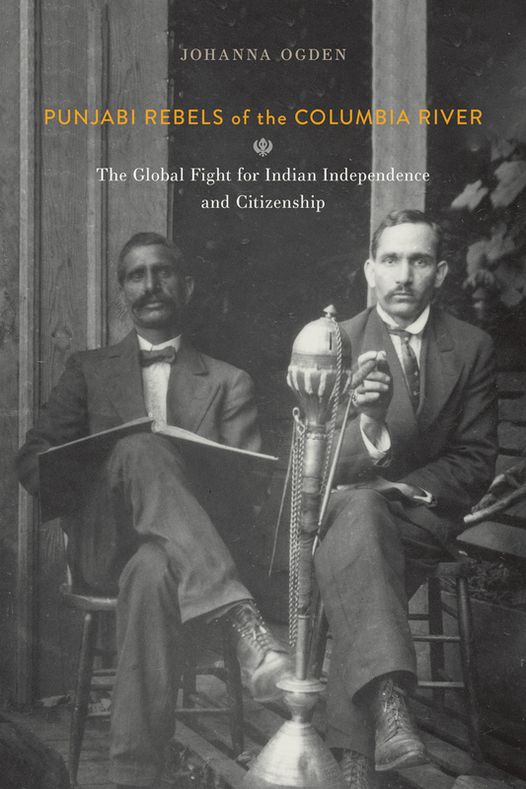 Oregon is commonly perceived to have little, let alone notable, South Asian history. Yet in the early 1900s Oregon was at the center of two entwined quests for Indian independence and civic belonging that rocked the world.
Oregon is commonly perceived to have little, let alone notable, South Asian history. Yet in the early 1900s Oregon was at the center of two entwined quests for Indian independence and civic belonging that rocked the world.
